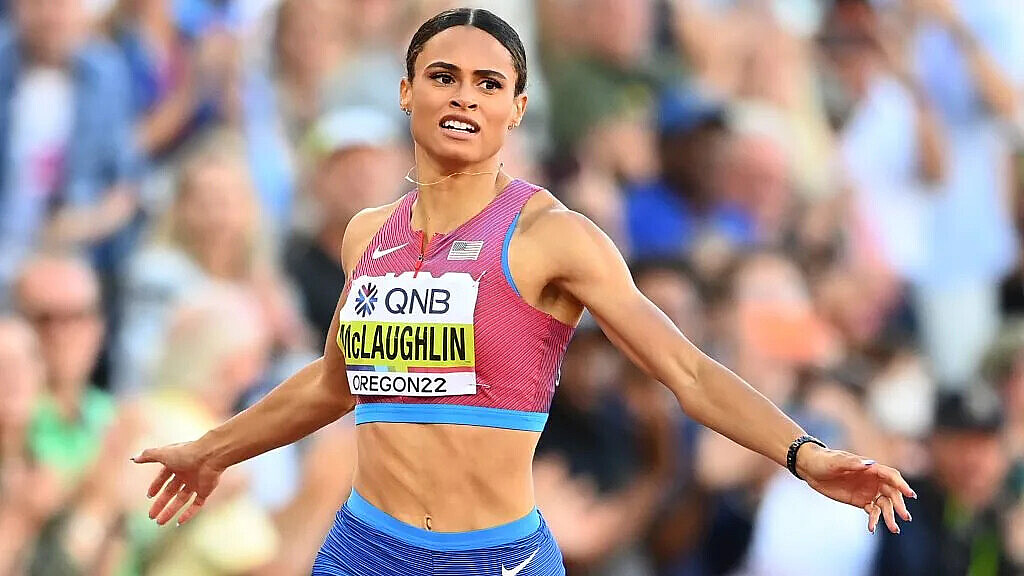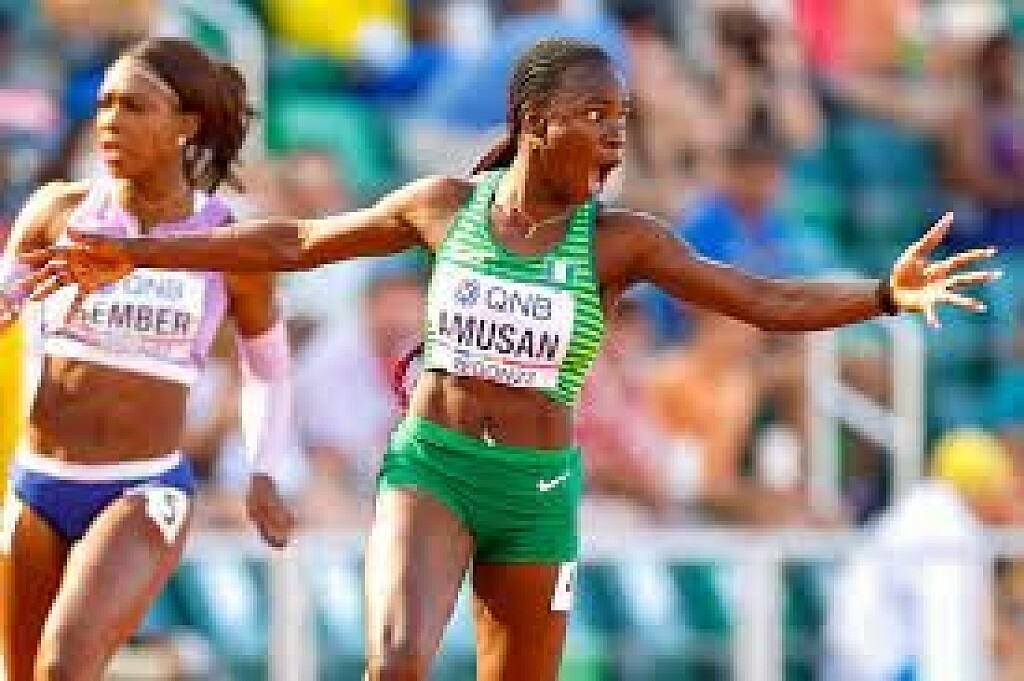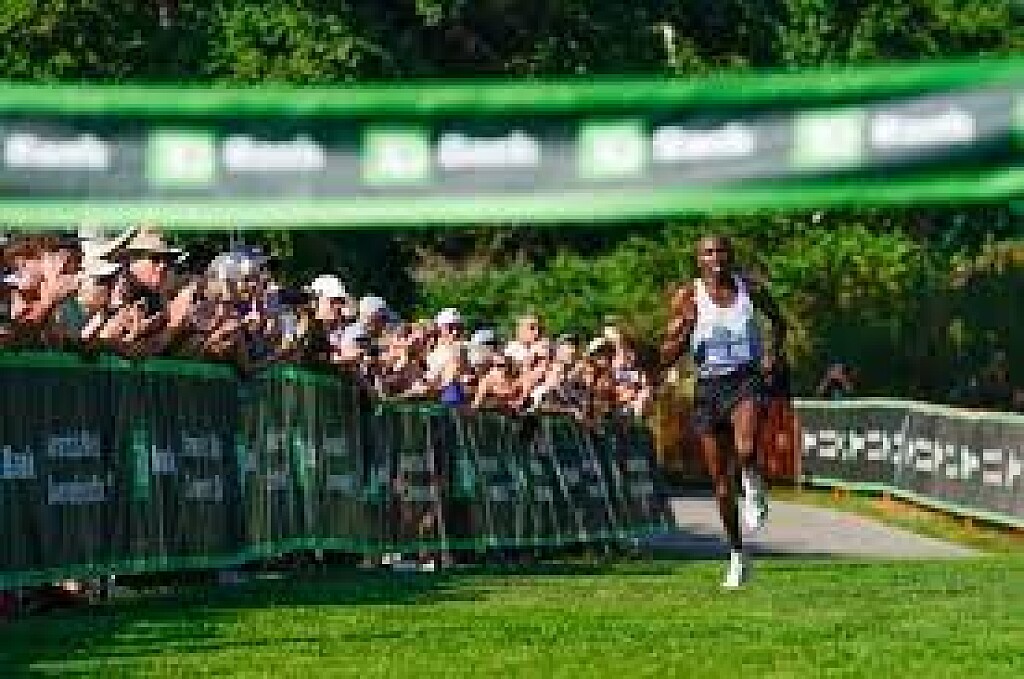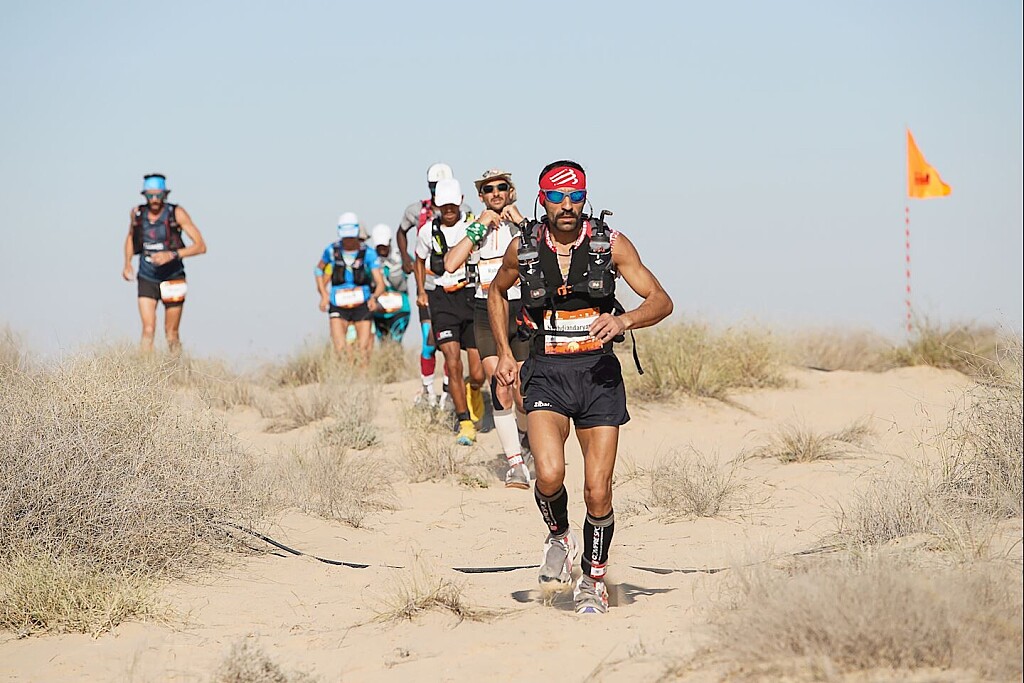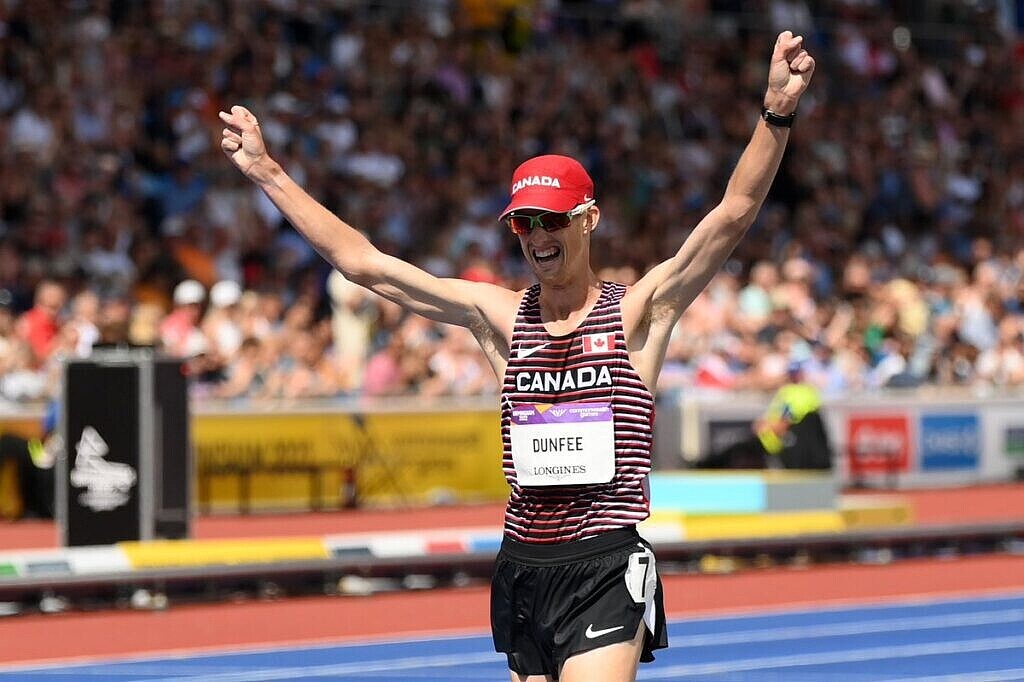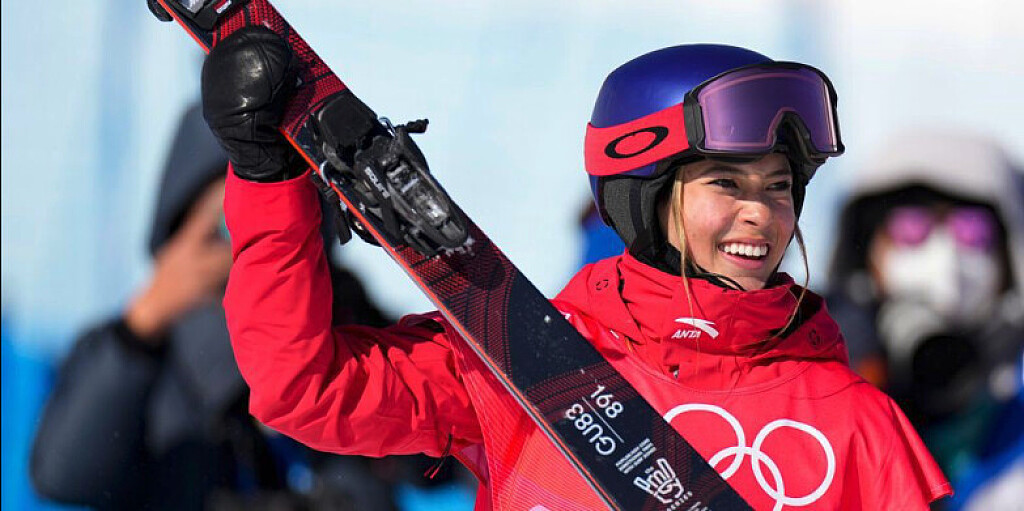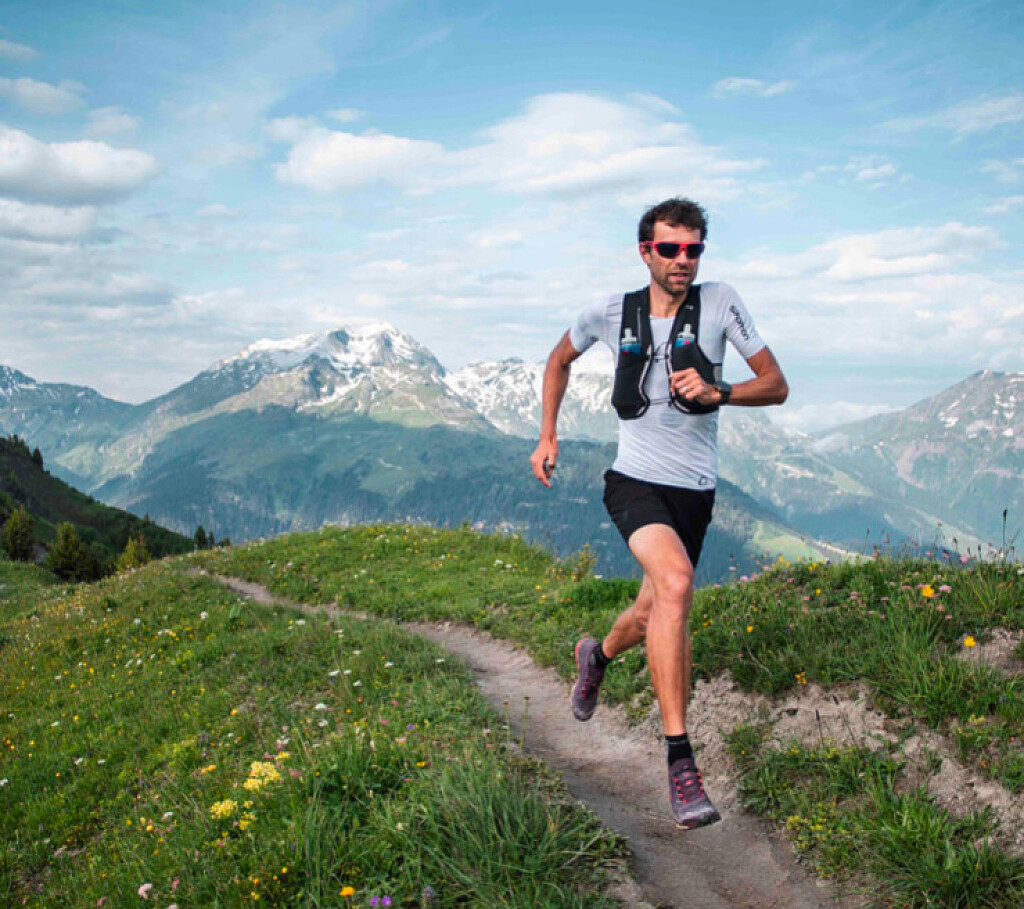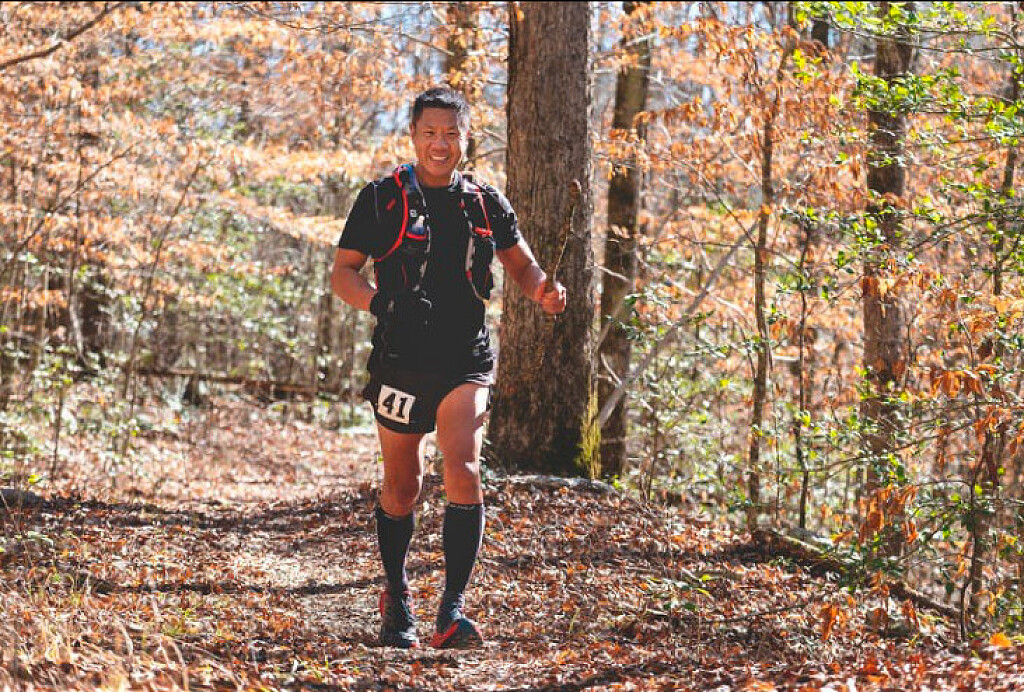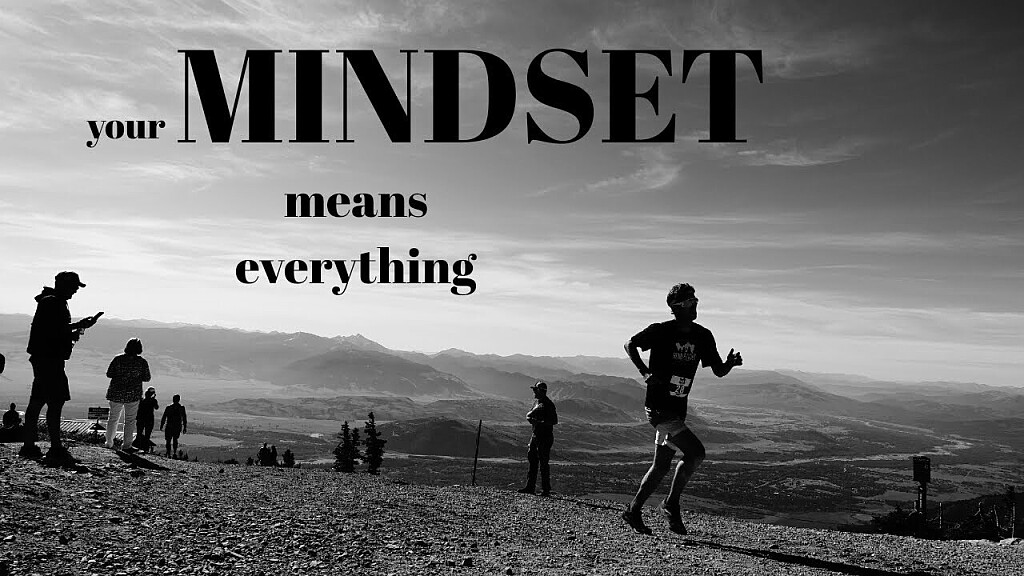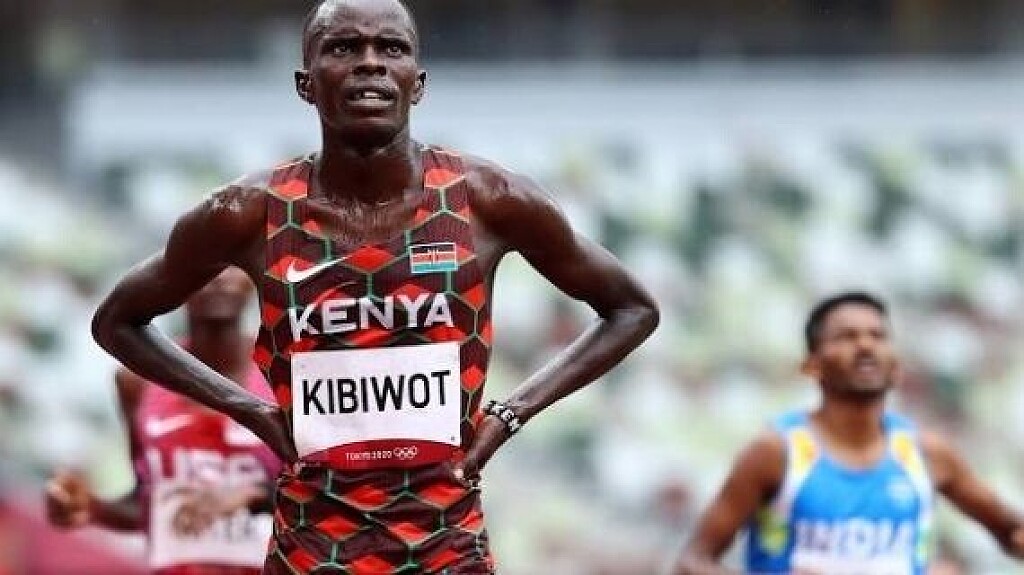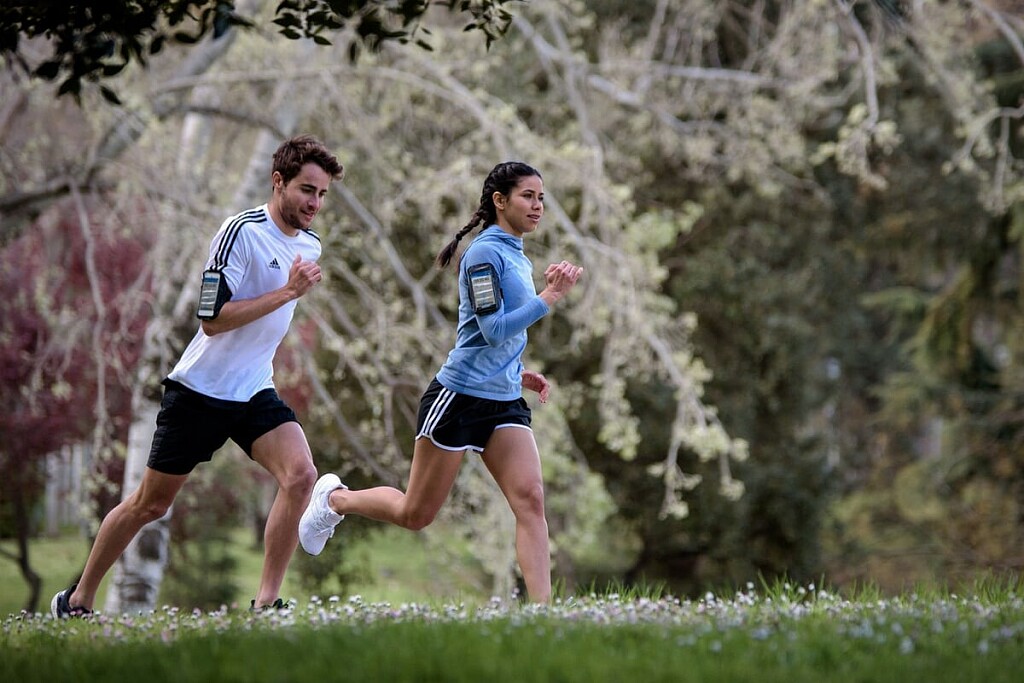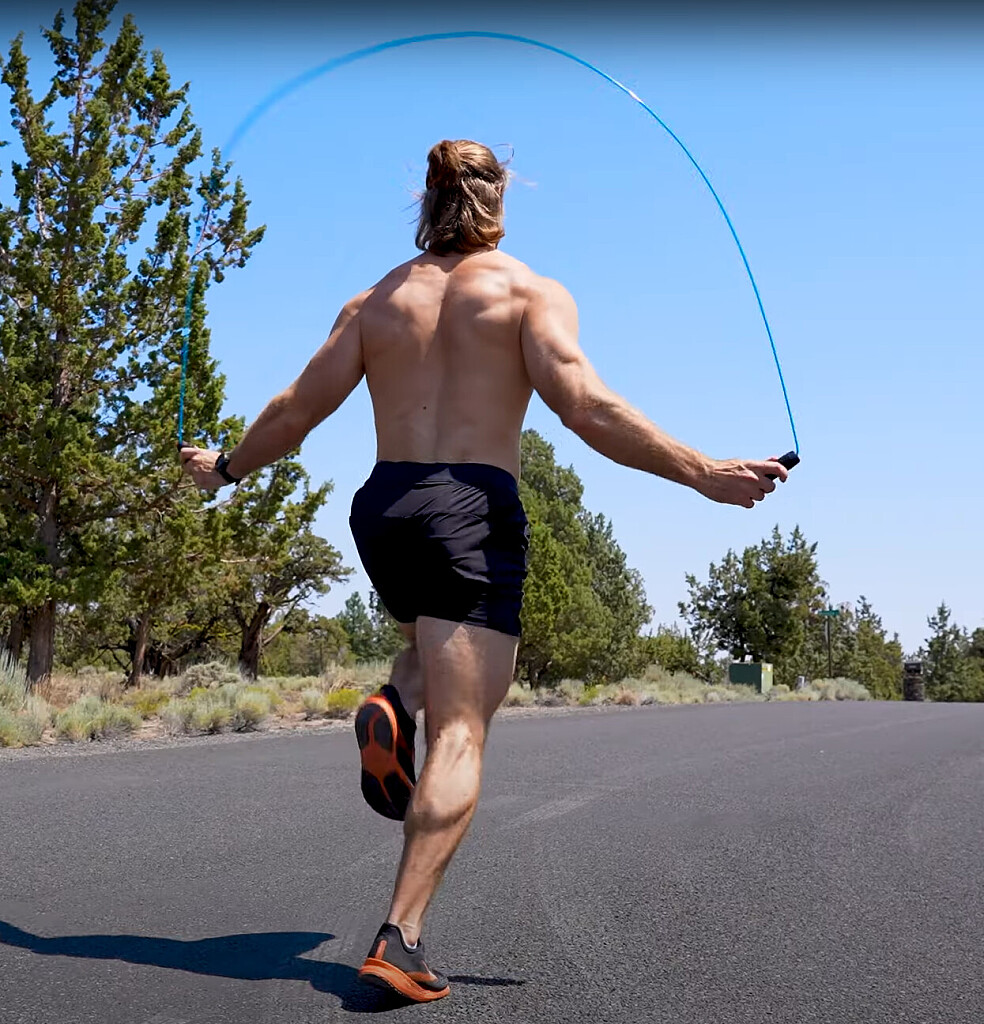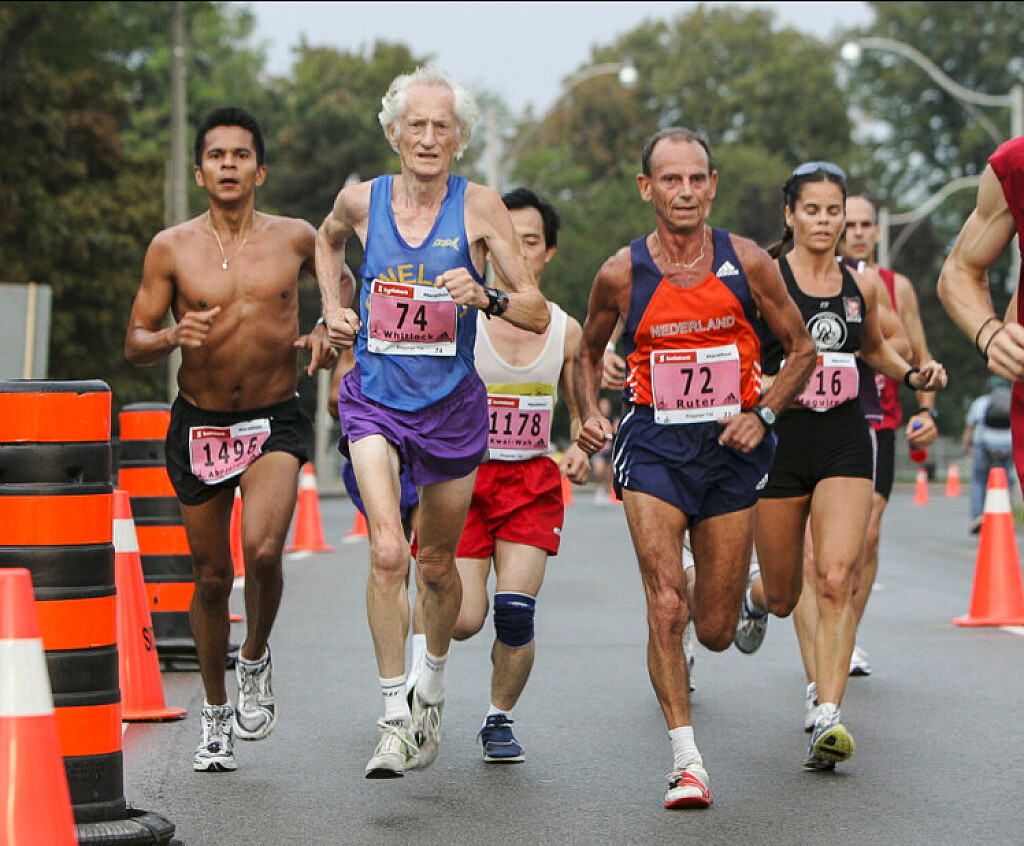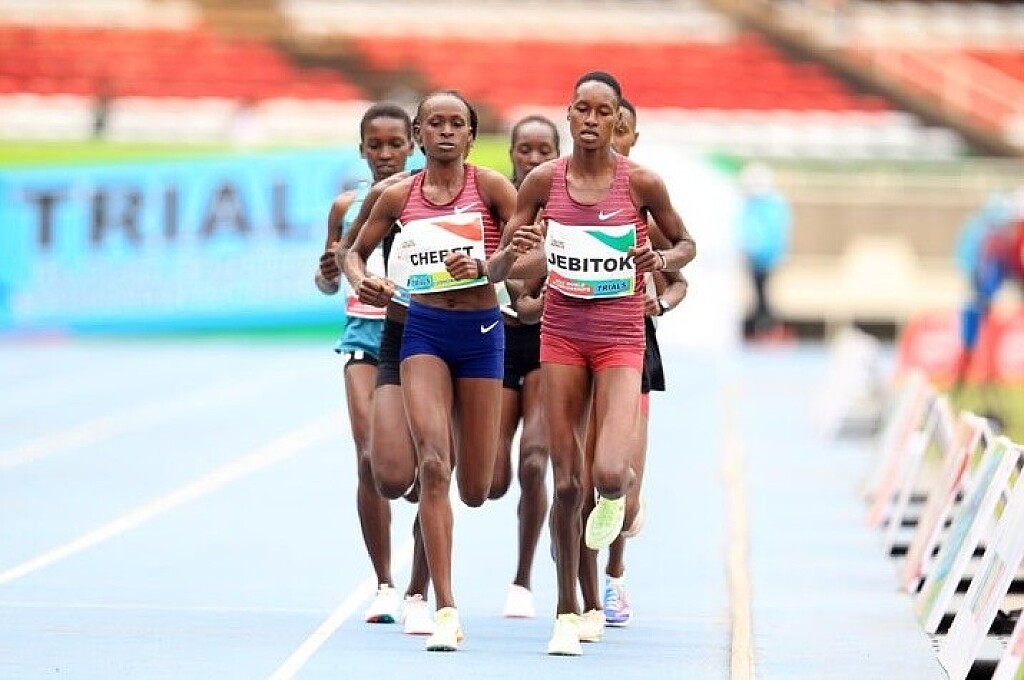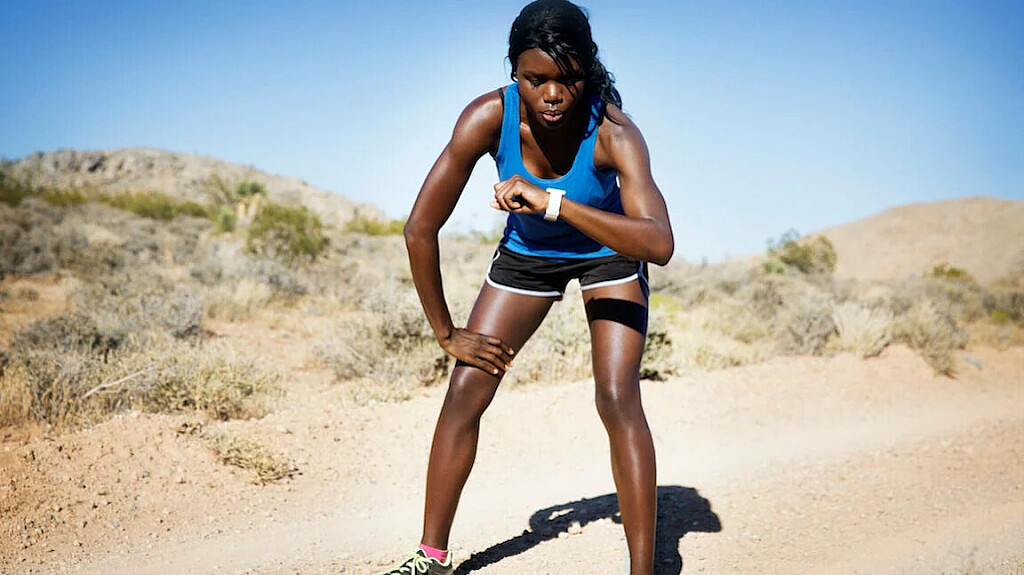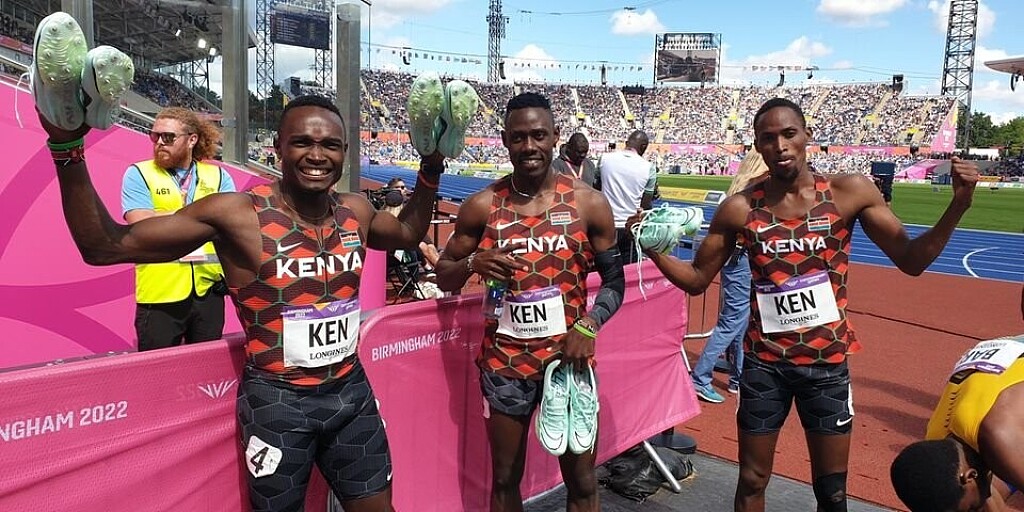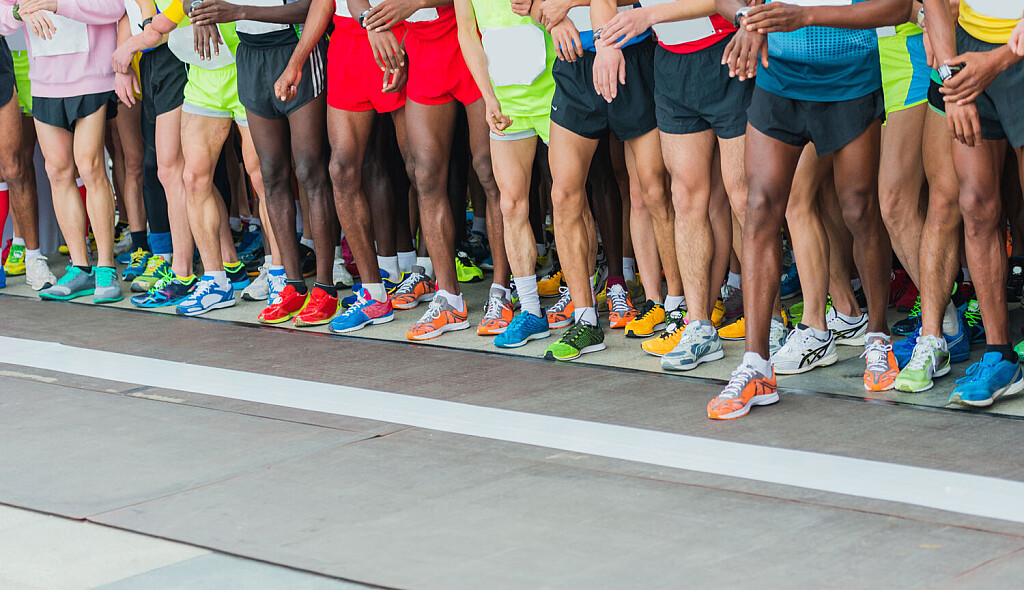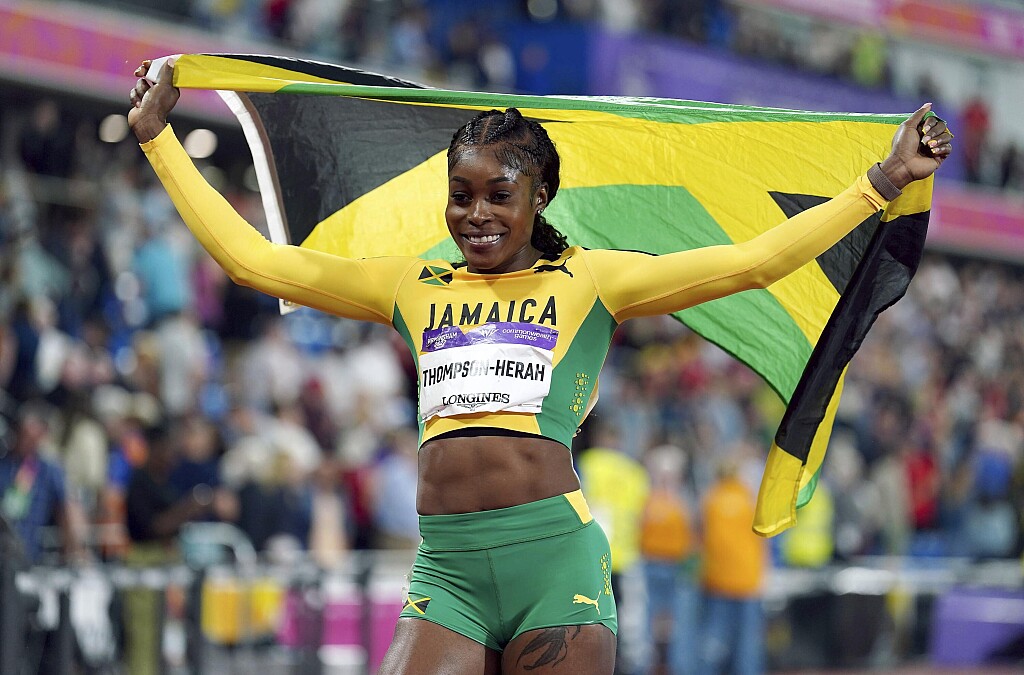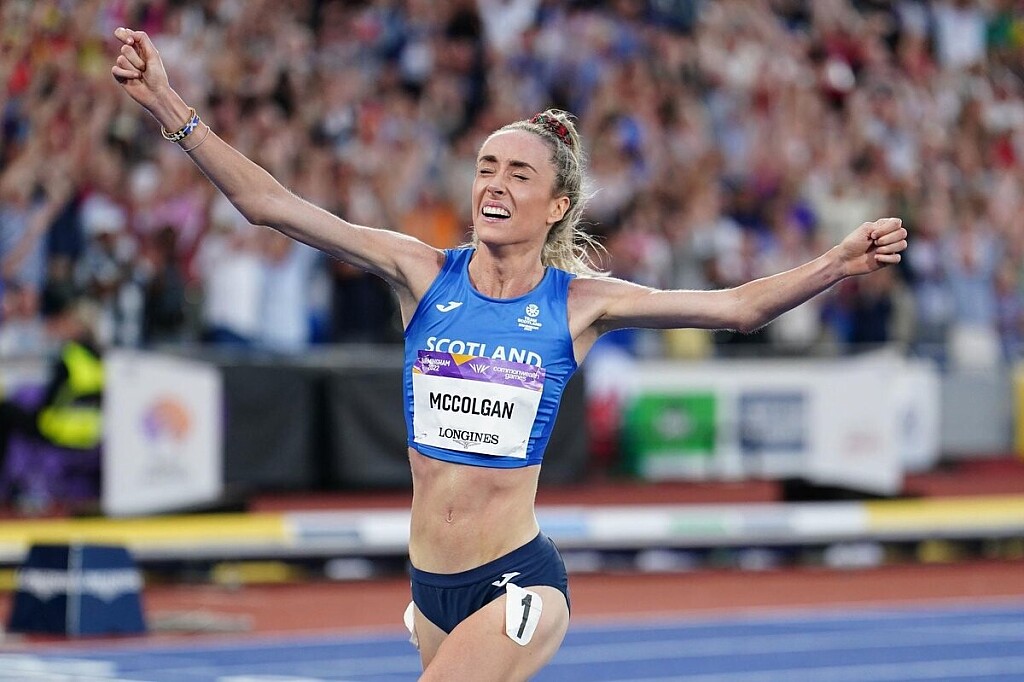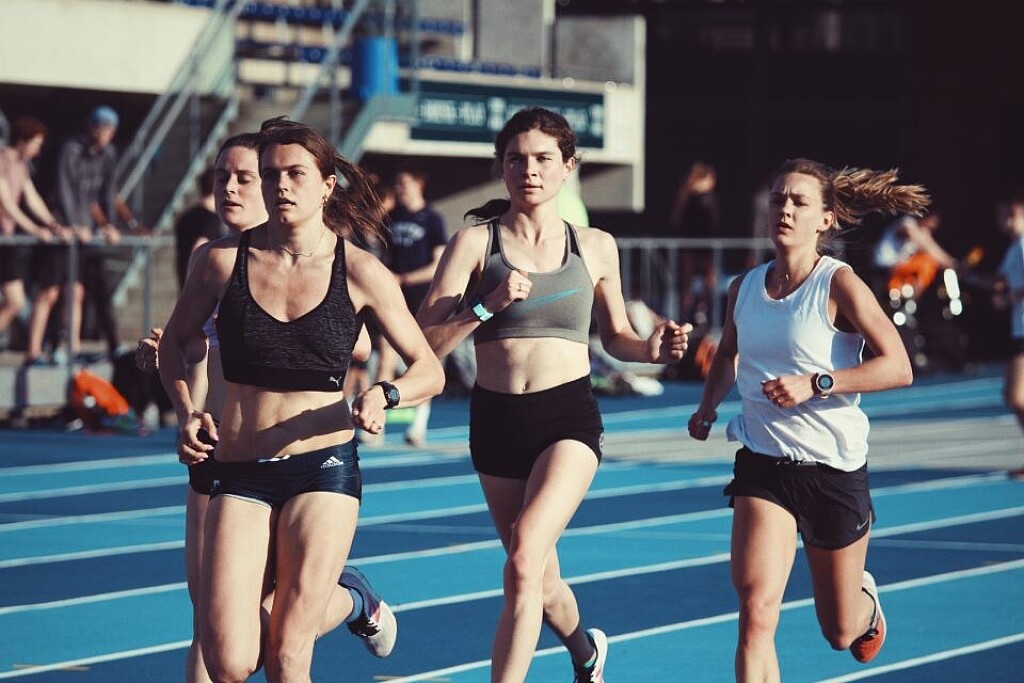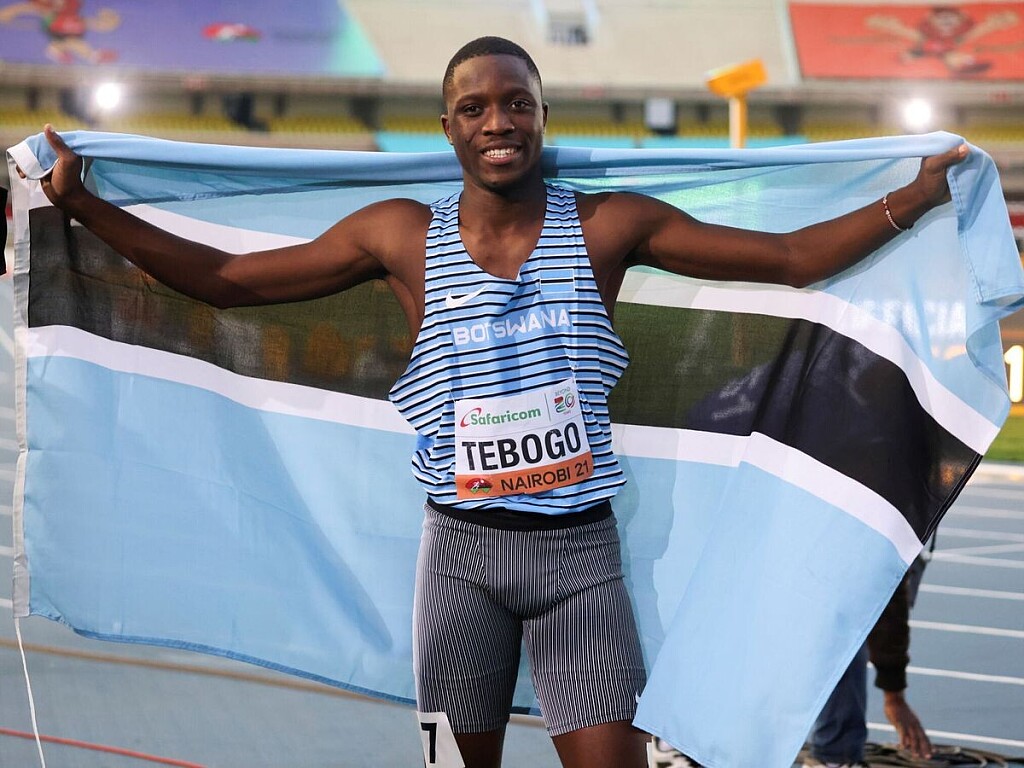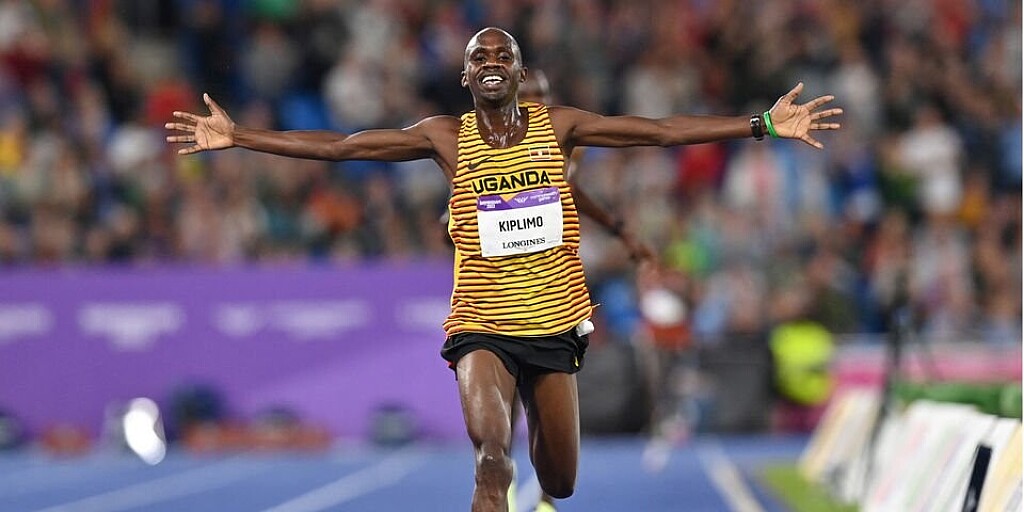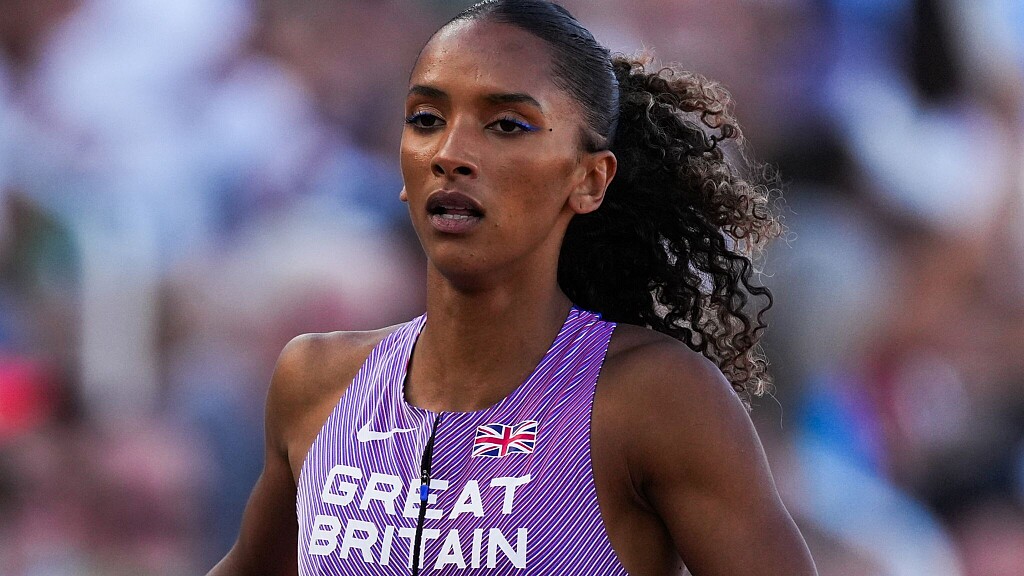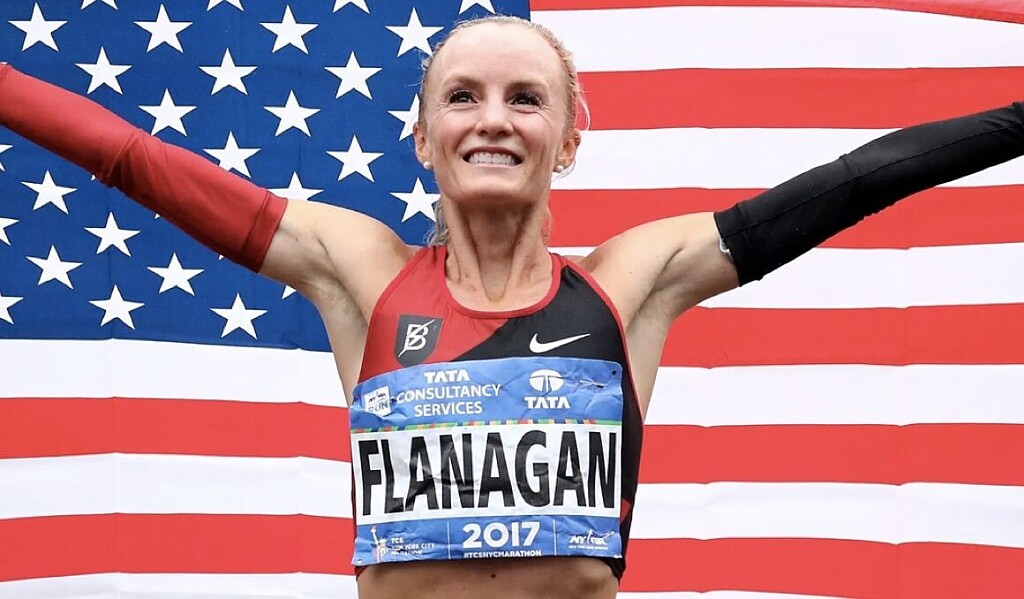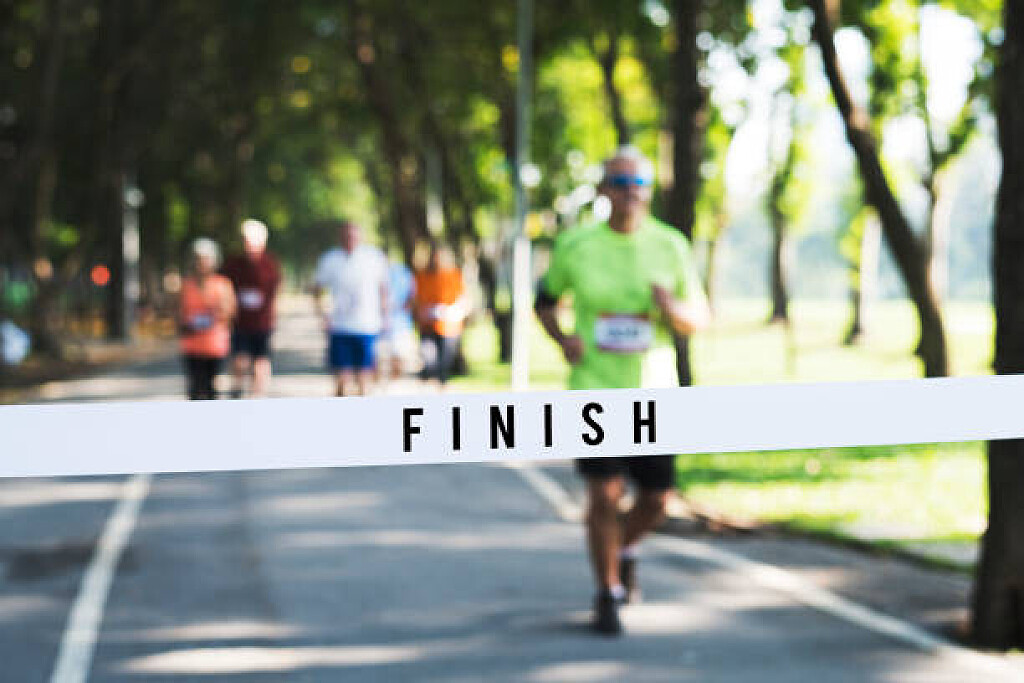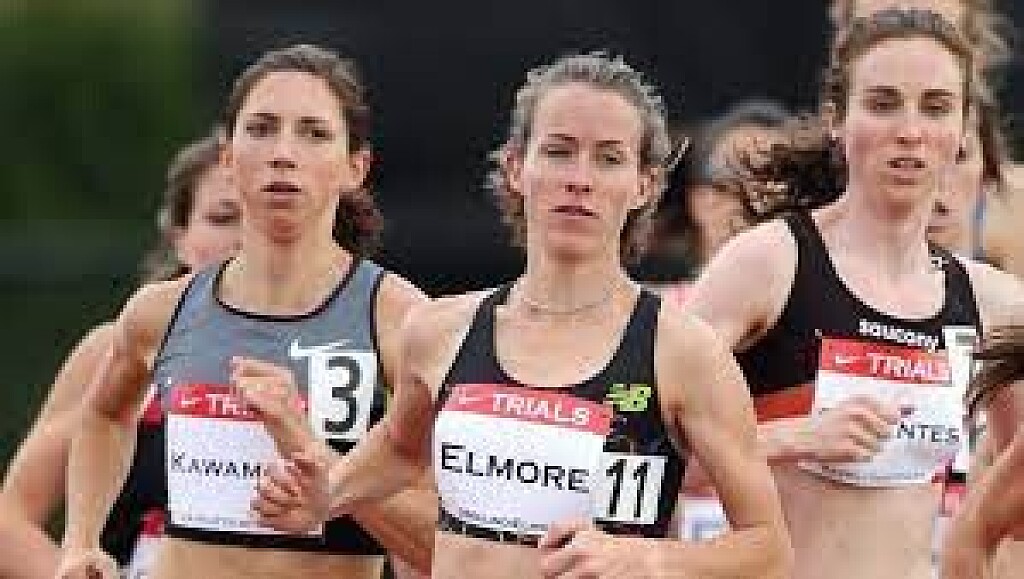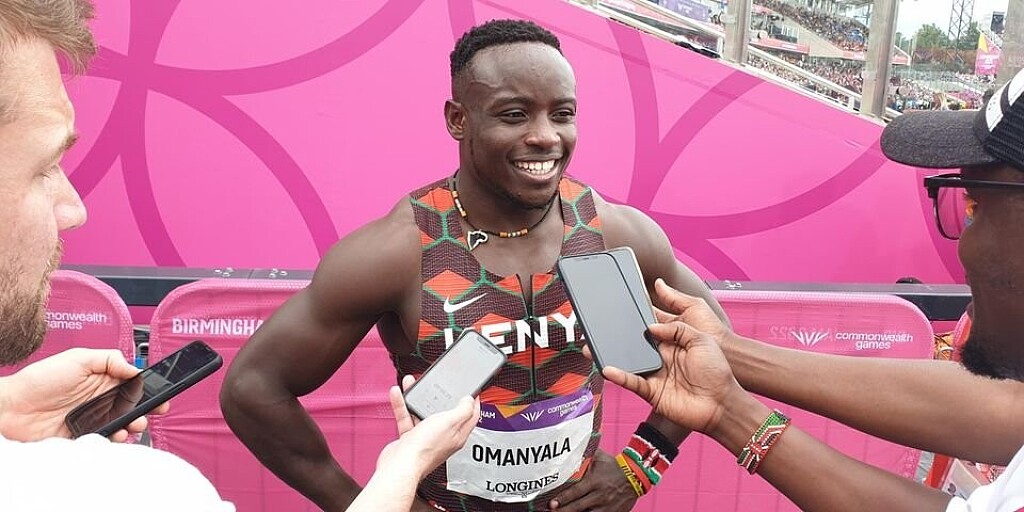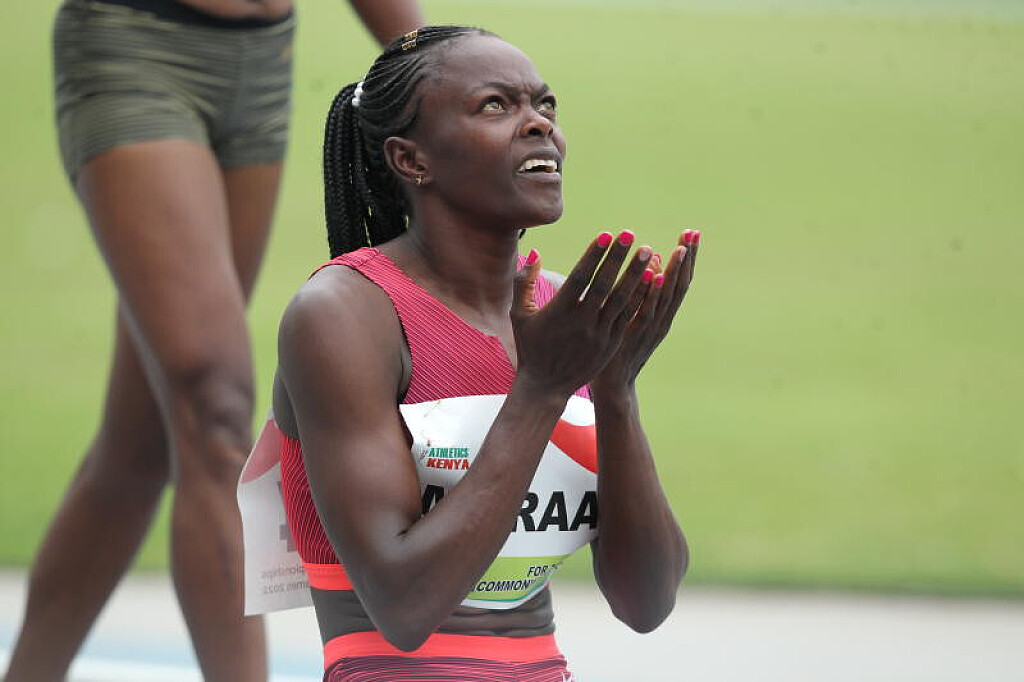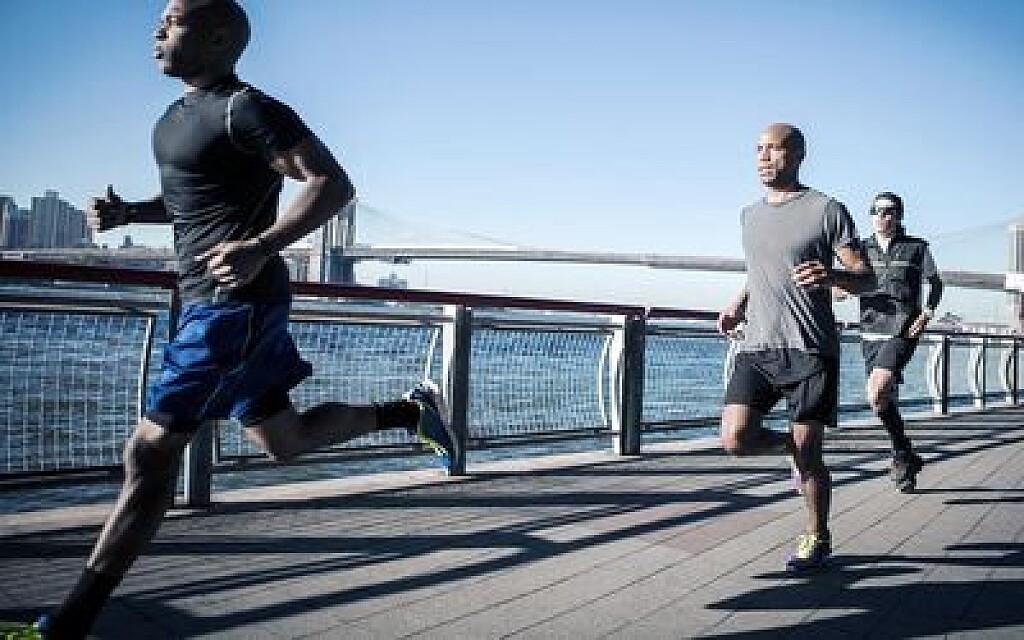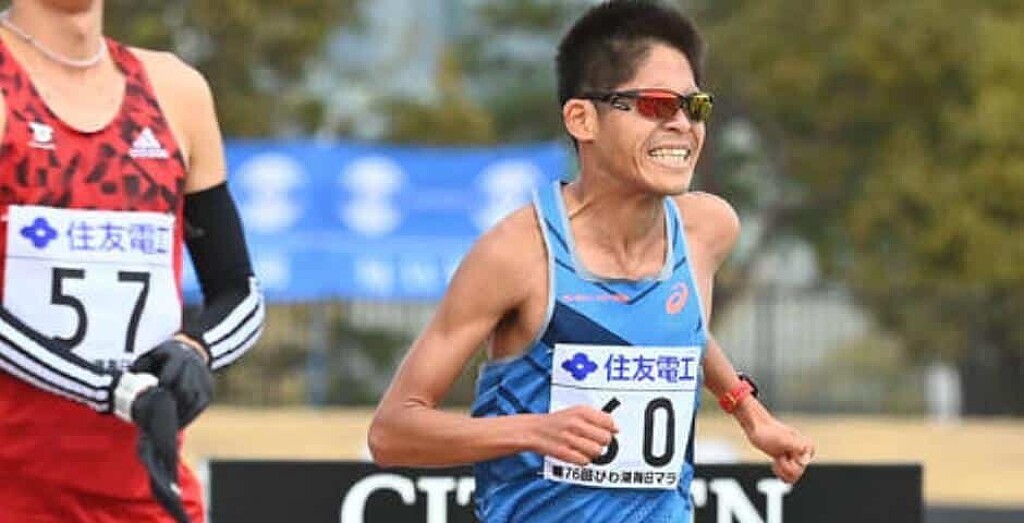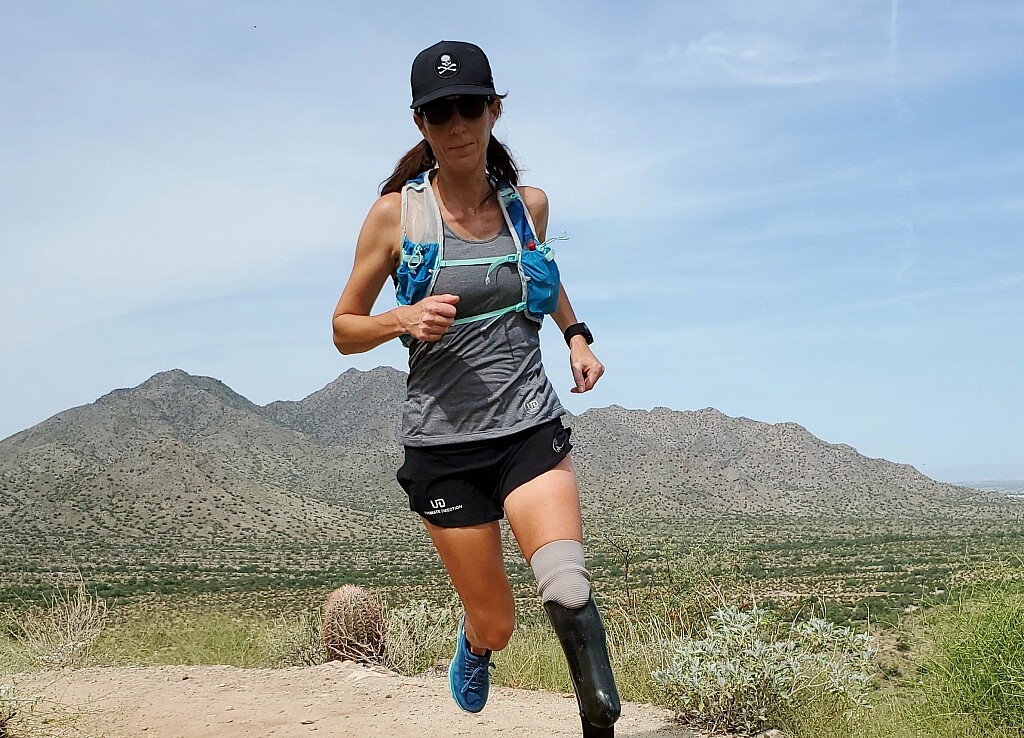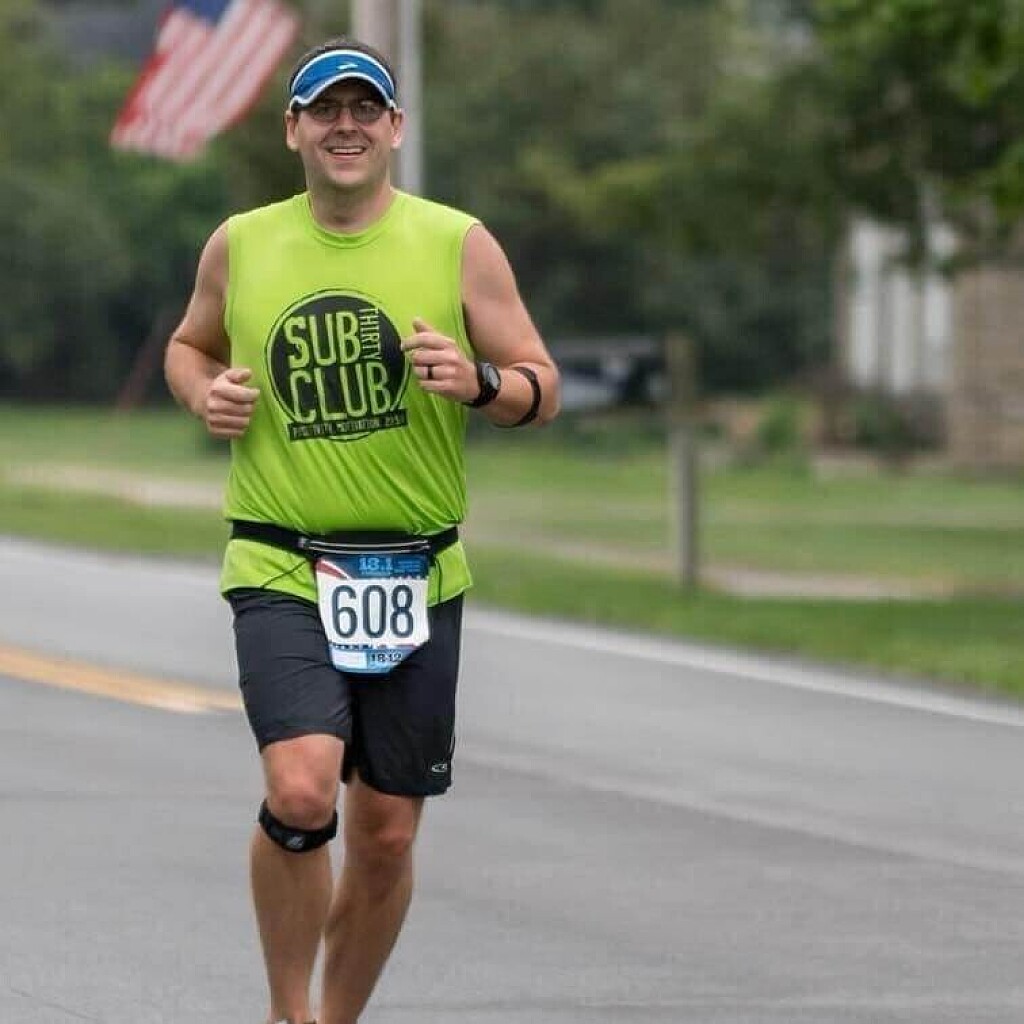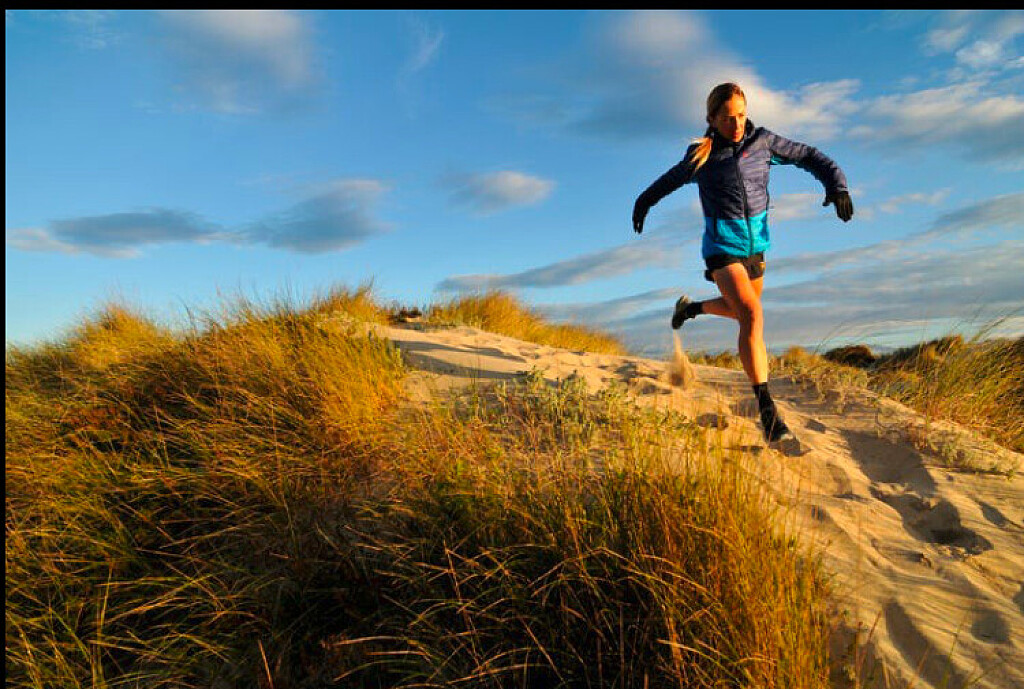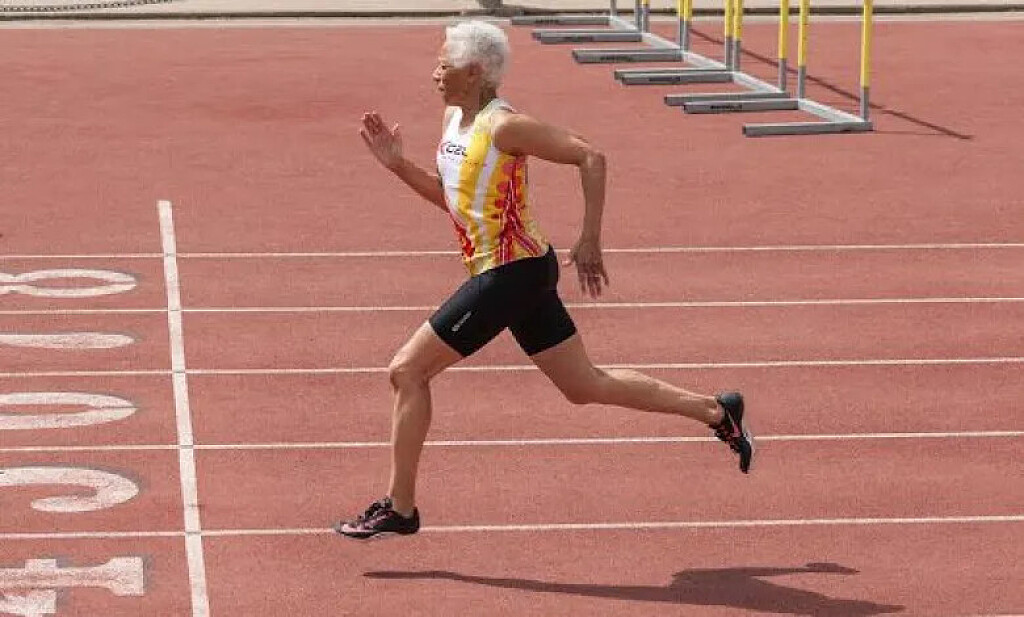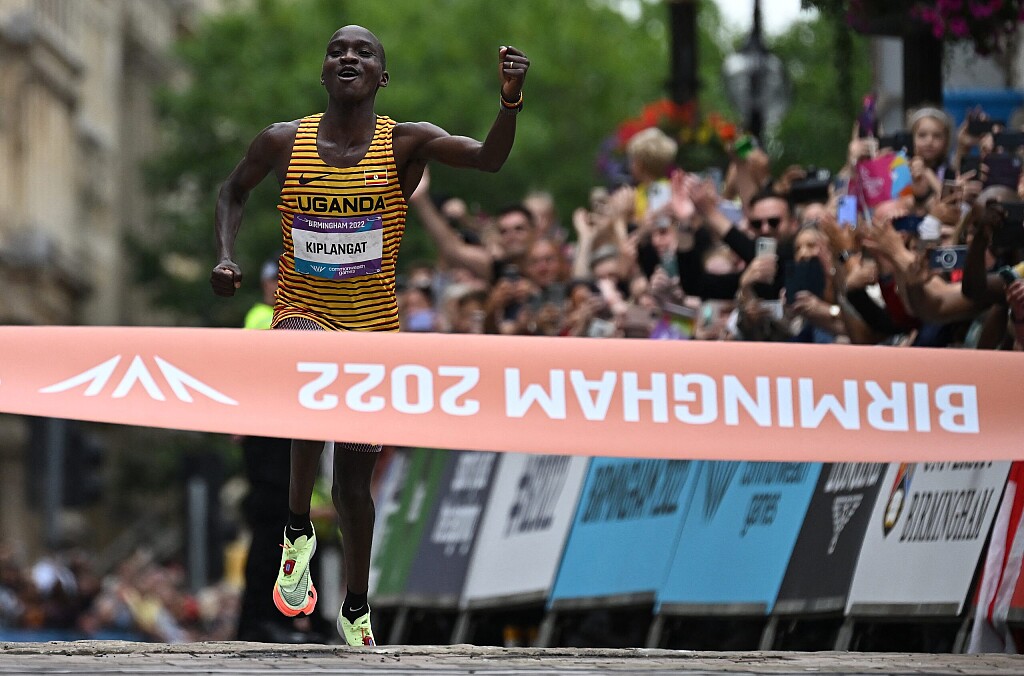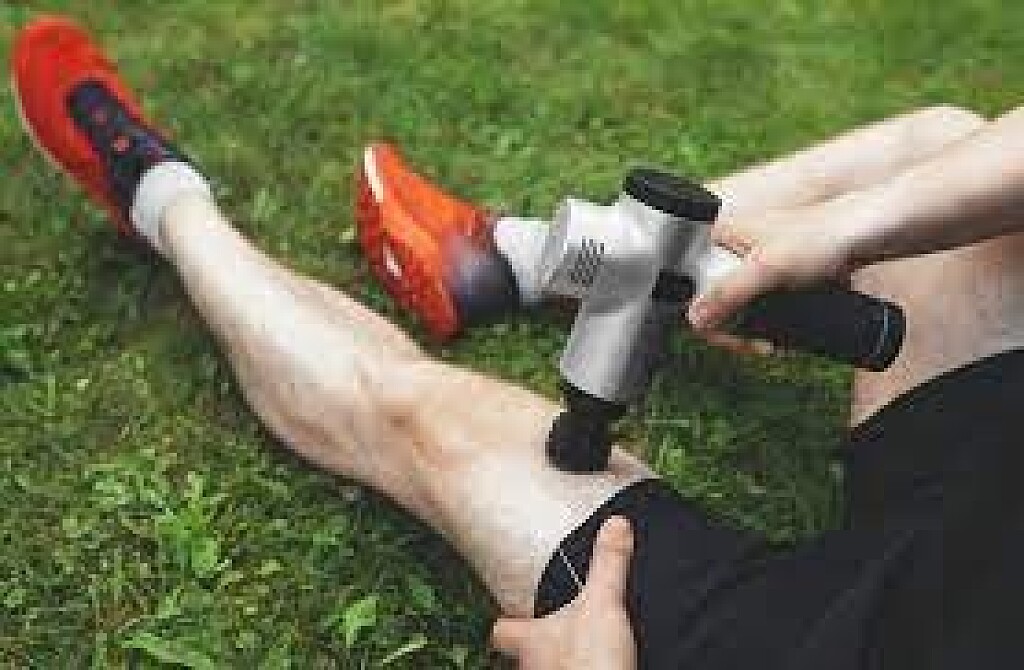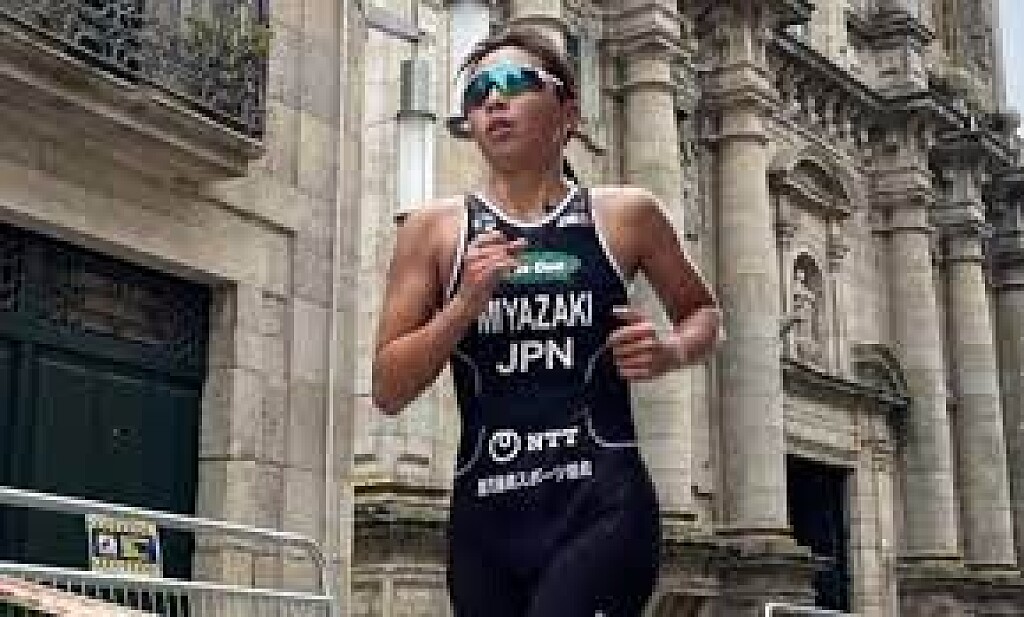Running News Daily
Running News Daily is edited by Bob Anderson in Mountain View, California USA and team in Thika Kenya, La Piedad Mexico, Bend Oregon, Chandler Arizona and Monforte da Beira Portugal. Send your news items to bob@mybestruns.com Advertising opportunities available. Over one million readers and growing. Train the Kenyan Way at KATA Running Retreat Kenya. (Kenyan Athletics Training Academy) in Thika Kenya. Opening in june 2024 KATA Running retreat Portugal. Learn more about Bob Anderson, MBR publisher and KATA director/owner, take a look at A Long Run the movie covering Bob's 50 race challenge.
Index to Daily Posts · Sign Up For Updates · Run The World Feed
Sydney McLaughlin ran the sixth-fastest 400m hurdles time in history in what she said beforehand was her last race of the season
Sydney McLaughlin, who lowered her world record at June’s USATF Outdoor Championships (51.41) and July’s world championships (50.68), ran 51.68 at a Continental Tour meet in Hungary on Monday.
McLaughlin, who turned 23 on Sunday, extended her win streak to seven meets since her last defeat at the 2019 World Championships. Her time on Monday would have been a world record up until the Tokyo Olympics, where she lowered it from 51.90 to 51.46.
Next season is another world championships year. McLaughlin has a bye into next August’s worlds in Budapest in the 400m hurdles as reigning champion but has said she could add or change events, perhaps to the flat 400m, as the 2024 Paris Olympics approach.
(08/08/2022) ⚡AMPAmusan and Richards join list of double champions at Commonwealth Games
World champion Tobi Amusan and world indoor champion Jereem Richards had a successful Sunday (7) on the final day of athletics action at the Commonwealth Games, as they joined Elaine Thompson-Herah and Jacob Kiplimo as double gold medalists in Birmingham.
The Nigerian sprint hurdler started the day by winning her specialist discipline, the 100m hurdles, in a Games record of 12.30 (-0.2m/s) – the second-fastest wind-legal clocking of her career behind the world record of 12.12 she clocked at the World Athletics Championships Oregon22.
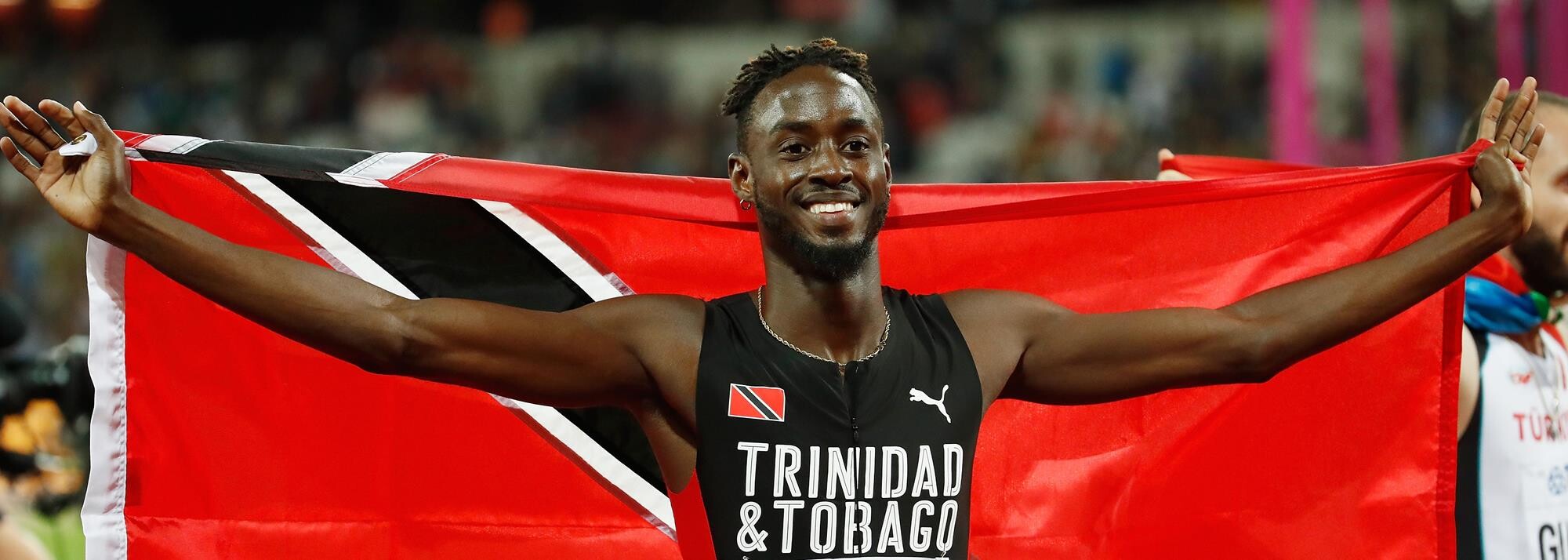
She won by a clear margin from Devynne Charlton of The Bahamas (12.58) and England’s Cindy Sember (12.59), all of whom finished inside the previous Games record.
“I think my first five hurdles were rusty but then I got it together,” said Amusan. “I’m just thankful for the win.”
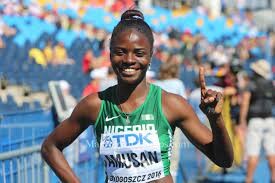
Later in the morning session, Amusan ran the lead-off leg for Nigeria in the 4x100m. She gave her team a strong start and handed over to 200m silver medalist Favour Ofili, who kept Nigeria level with England’s Imani Lansiquot. Rosemary Chukwuma than ran a storming third leg to give Nigeria a clear lead, then Grace Nwokocha anchored them to victory in 42.10, taking 0.12 off the African record they had set when finishing fourth at the recent World Championships.
England finished second in 42.41 and Jamaica, anchored by double sprint champion Elaine Thompson-Herah, took bronze in 43.08.
Much to the delight of the home crowd, England took victory in the men’s 4x100m just moments before the women’s race. They won in 38.35 from Trinidad & Tobago (38.70) and Nigeria (38.81).
Later in the day, Commonwealth 200m champion Jereem Richards added another gold medal to his collection, anchoring Trinidad & Tobago to victory in the men’s 4x400m. The world indoor 400m champion teamed up with Dwight St Hillaire, Asa Guevara and Machel Cedenio to win in 3:01.29 with Botswana finishing second in 3:01.85. Kenya placed third in 3:02.41.
The women’s race was much closer with hosts England crossing the line in first place 0.01 ahead of Canada. But England was later disqualified for a lane infringement, giving Canada gold in 3:25.84 ahead of Jamaica (3:26.93). Scotland took the bronze medal.
(08/08/2022) ⚡AMPby World Athletics
The Commonwealth Games
The Commonwealth Games are coming to Victoria - bringing an action packed sports program to our regional cities and delivering a long-term legacy for our future. From 17 to 29 March 2026, Geelong, Bendigo, Ballarat, Gippsland and Shepparton will be on the world stage, attracting millions of viewers and creating thousands of jobs. The multi-city model will...
more...Matthew Kimeli (28:38) And Fentyea Belayneh (32:06) Win Beach To Beacon 10k
Beach to Beacon returns after 2-year absence: ‘It’s great to be back!’
A carnival of calves, quads and cowbells came back to this seaside town Saturday, after an absence of 1,099 days.
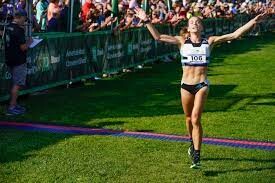
More than 5,000 runners paraded over the roads of Cape Elizabeth on a warm and cloudless morning in the 24th edition of the venerable TD Beach to Beacon 10K Road Race. Because of the pandemic, the race was canceled in 2020 and held virtually in 2021.
“It’s great to be back!” said Joan Benoit Samuelson, the race founder who grew up in Cape Elizabeth and went on to win the inaugural women’s Olympic marathon in the Los Angeles Games of 1984.
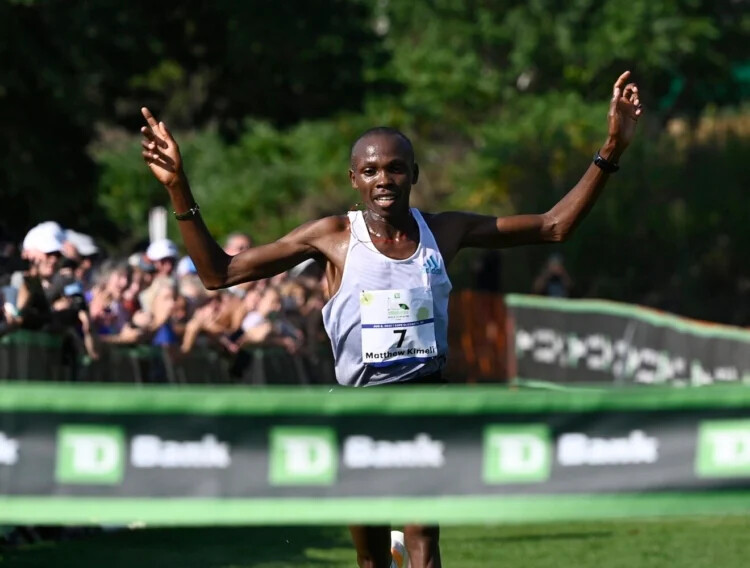
Along the route, which winds onto Old Ocean House Road before returning to Route 77 and continuing onto Shore Road until entering Fort Williams for the finish along a well-watered strip of green grass in sight of the lighthouse, spectators were abundant if not as thick as in past years.
The folks near the Mile 5 marker who grill bacon were back, enticing runners with mouth-watering scents of breakfast. (Beach to Bacon, reads their sign.) Bands and music added merriment and encouragement.
“It was so fun,” said Amy Davis, a Wisconsin native who placed fourth among all women. “The crowds get into it and the community, and it propels you forward. You feel like you’re never alone. That was really cool.”
Davis, 25, is the daughter of Nan Doak-Davis, a former national marathon champion who competed alongside Samuelson back in the day.
Befitting the 50th anniversary of Title IX legislation that opened doors long closed to female athletes, the women’s field on Saturday featured a dramatic race led for long stretches by Standish native Emily Durgin, a graduate of Cheverus High in Portland and the University of Connecticut.
The 28-year-old Durgin, now living and training in Flagstaff, Arizona, was runner-up by nine seconds to Fentaye Belayneh of Ethiopia. In her American road-racing debut, the 21-year-old Belayneh covered the 6.2 miles from Crescent Beach to the Portland Head Light in 32 minutes, 7 seconds.
No American woman has won Beach to Beacon. The only American man to do so is North Yarmouth native Ben True, six years ago. On Thursday night, True decided for health reasons to remain home in New Hampshire.
True’s absence paved the way for Mathew Kimeli, 24, of Kenya to run away from the men’s field. Hampered only by a brief entanglement with yellow caution tape after he turned onto Shore Road in Mile 4, Kimeli crossed the line with arms upraised in a winning time of 28:39.
Belayneh and Kimeli each received $10,000 for their victories. Durgin took home $5,000 for second place and another $5,000 as the top American finisher.
Because her connecting flight was canceled Thursday night, Durgin rented a car with her boyfriend and drove to Maine from Philadelphia on Friday, stopping at her favorite Connecticut diner (in Vernon) along the way.
“It was less stress because I knew I was coming to a familiar place,” said Durgin, whose parents picked up their luggage from the Portland jetport. “If I was going anyplace else, I probably would have gotten back on the plane and gone back to Phoenix.”
Once on the course, Durgin said she was surprised by the relatively pedestrian early pace – the first mile passed in 5:12 – until she realized her competitors were playing it safe amid hot and humid conditions.
“Then I found myself leading the whole race,” she said. “This is the first time that I’ve seen myself in the lead. It was not a super-familiar feeling.”
Kimeli’s time was the slowest for a men’s champion in race history. Belayneh’s was the slowest winning women’s time since 2011.
“The race was humid, and a lot of slopes,” said Kimeli, who was forced to stop to remove the tape from his leg when he couldn’t shake free from it. “Thank goodness we were not in a group. Maybe I would fall down if we were in a group.”
Twenty seconds passed before the surprise runner-up, Athanas Kioko, passed beneath the final banner. A recent graduate of Campbell University in Georgia, the 27-year-old Kioko registered for the race on Monday, picked up his four-digit bib number Saturday morning after a travel nightmare rivaled only by that of Durgin, and picked off two runners in the final mile to beat every invited elite athlete save Kimeli.
Two flight cancellations Friday morning in Atlanta forced Kioko to accept a diversion to Chicago, endure a four-hour layover, and eventually wind up in Manchester, New Hampshire. After a brief night in a motel, some Kenyan friends from Boston picked him up at 4:30 a.m. on their way to Maine. He got his bib at Cape Elizabeth High School less than an hour before the race, hopped on a bus to the start and enjoyed a 10-minute warm-up before the gun fired.
“Due to traveling, my lower back was a bit painful,” Kioko said. “But right now, I’m not tired.”
The Maine resident category saw a pair of first-time winners. Biddeford native Sam Mills, 21, whooped with joy before crossing the finish line in 31:09. Aly Ursiny of Yarmouth, 34, a mother of two who moved here from Boston last winter, was the fastest Maine woman in 36:17.
(08/08/2022) ⚡AMPby Glenn Jordan
TD Beach to Beacon 10K
Joan Benoit Samuelson, a native of Cape Elizabeth, Maine, won the first-ever women's Marathon at the 1984 Olympics in Los Angeles and is founder and chair of the TD Bank Beach to Beacon 10K. "A long time dream of mine has been realized" says Samuelson. "I've always wanted to create a race that brings runners to some of my most...
more...Crush your half marathon goals with these workouts
It’s racing season, and every sunny weekend seems like an opportunity to jump into (or train for) a fun event. If the half marathon is your jam, try these workouts to finesse the unique balance of endurance and speed that the distance requires.
Fatigue resistance repeats
Running some fast intervals after a tempo session can be an effective way to mimic maintaining that goal pace when you feel those slightly heavy mid-race legs.
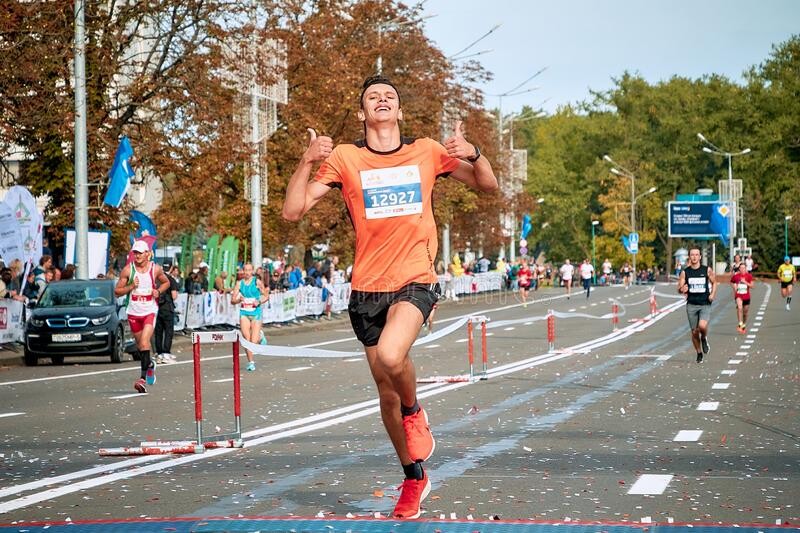
10 minutes easy running to warm up
25-30 minutes at a pace you can maintain for one hour
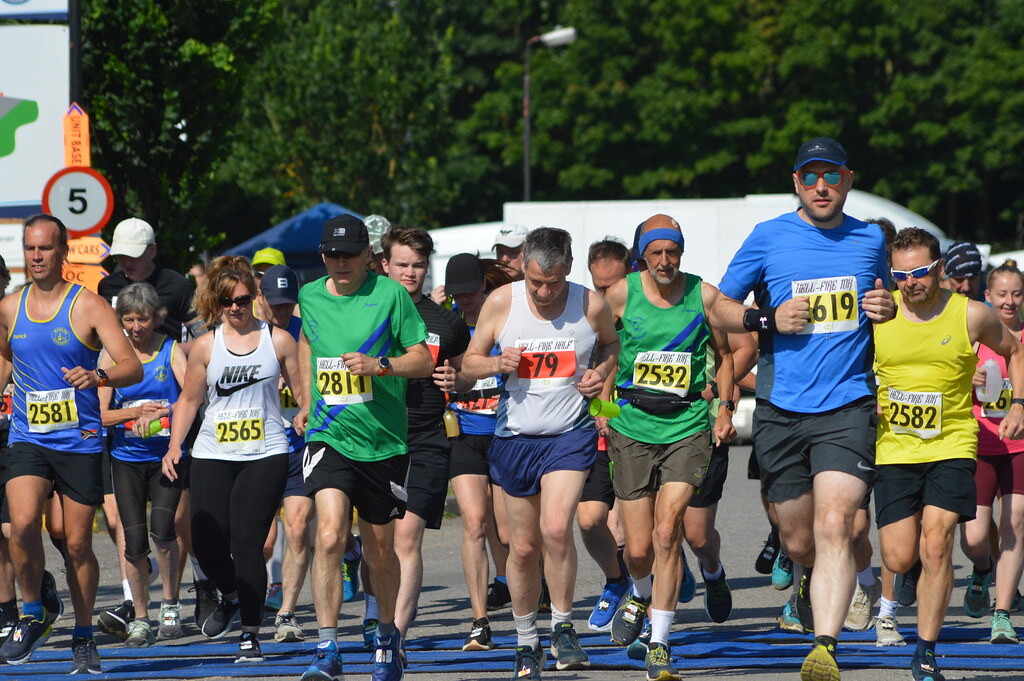
3-4 minutes recovery running
5 x 1 minute hard/1 minute easy
10 minutes easy running to cool down
Master the mile
Threshold pace intervals (roughly around a 10K race pace) are perfect training for the half marathon distance. On race day, you’ll have the stamina to maintain that tough, slightly below-threshold pace for the entire distance.
10-15 minutes easy running
4-5 x 1 mile (1,600m) at 10K race pace, with one minute of easy recovery between each repeat
10-15 minutes easy running
Practice the pace
Half marathon pace workouts should generally only be done a few times, close to race day (but before taper-time). You’ll gain familiarity with running at that perfect speed and add a confidence boost before the big event.
15 minutes easy running
3-4 x 3.5 km at half marathon pace, with 1 km easy recovery running between repeats
10 minutes easy running
Follow a speedwork session with an easy running or rest day, and hydrate well, especially in the summer heat.
(08/08/2022) ⚡AMPby Running Magazine
Ultra running is exploding in popularity around the world, but what actually is an ultramarathon?
The term Ultra covers a broad range of races, from mountains to road
Ultra running is fast becoming a mainstream sport. Once, it was the realm of a few crazy runners, and not the pastime of everyone from your boss to your neighbour. But what actually is an ultramarathon?
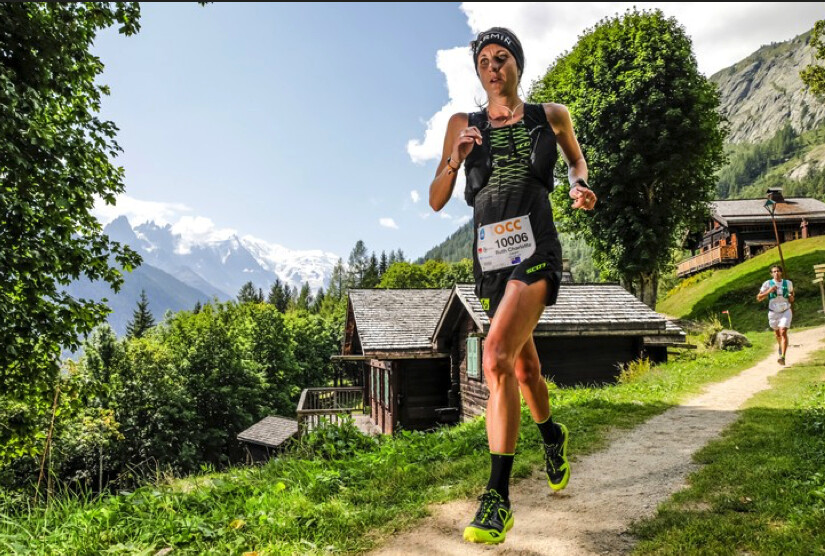
How long is an ultramarathon?
An ultramarathon is anything longer than a marathon, which is 26.2 miles (42.195km). So, you could complete a marathon and run back to your car and you’ve technically run an ultra distance.
Typically, ultramarathons start at 50km and go up from there. Standard distances are 50km, 100km and 161km (100 miles), the latter often being referred to as a “miler”.
While a marathon is never longer than 26.2 miles, ultras tend to vary a bit. For example, the Hong Kong 100 is in fact 103km. And the Ultra Marathon du Mont Blanc, a miler, is in fact 171km. Others are a bit shorter than advertised, too.
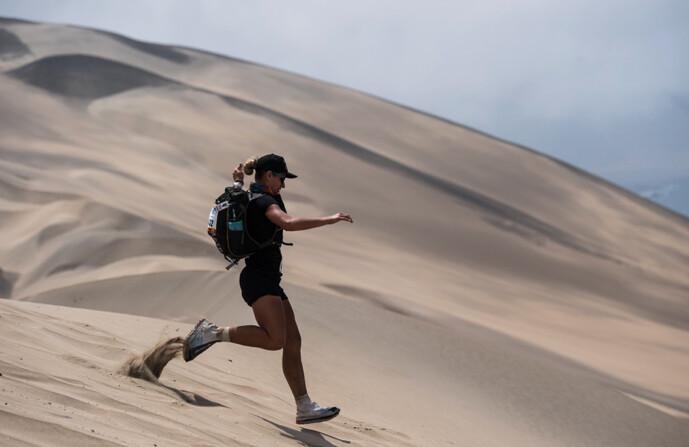
Aside from the above three types, there are ultra races of all sorts of distances and formats. As long as it’s more than a marathon, the distances and formats can be limitless.
An increasingly popular format is 250km split over stages, such as the Marathon Des Sables. Runners complete different distances each day, some less than an ultra, and sleep at night.
As the sport continues to grow, others try to push the boundaries – such as the 298km Hong Kong Four Trails Ultra Challenge, which is non-stop and has no support on the trails. Runners finish the distance in between around 48 and 70 hours.
The formats are becoming increasingly imaginative. A backyard ultra, for example, is around a 6.7km loop. The runners start on the hour every hour until there is just one runner left, so the distance is not set. It keeps going and going. Runners have gone on for more than 80 hours.
Outside organised events, runners often complete ultramarathons just for fun, to set a personal best or a Fastest Known Time (FKT), which is ultra terminology for a specific course record. This can be anything from the 44km Hong Kong Trail, which takes a few hours, to the 4,172km Pacific Crest Trail, which has an FKT of almost two months.
What terrain is an ultramarathon on?
With an infinite range of distances come infinite terrains. An ultramarathon can be road, flat, track, pavement, mountain, trail, snow and more. As long as you can run on it, you can run an ultramarathon on it.
A famous road ultramarathon is the 246km Spartathlon. It follows the legendary route run by Pheidippides, who ran from Athens to Sparta before the Battle of Marathon in Ancient Greece, thus inventing the marathon.
The most high-profile mountain ultra is the Ultra Marathon du Mont Blanc, which has a total of 10,040 metres accumulative elevation gain in the Alps.
Track ultras often take the format of a set time rather than distance. For example, how far you can travel in 24 hours, round and round the same athletics track.
When Zach Bitter set the 100-mile world record, which has since been broken again, he ran it around a 443m track by doing 363 laps.
The distances and terrains are so varied race to race they are essentially different sports. Kilian Jornet is considered one of the best ultra-mountain runners ever, but comparing him with Yiannis Kouros, considered one of the best ultra road runners ever, is like asking who is better at football: Tom Brady or Lionel Messi.
Is an ultra harder than a marathon?
The word ultra refers to the distance, not difficulty. An ultramarathon is inherently hard, but not inherently harder than a marathon or any other distance for that matter.
If you have a specific and demanding finishing time in mind for your marathon, you will have to stick to a specific split, keep your legs spinning and spinning, all the time concentrating on your pace and pushing your body.
Is that easier or harder than a 24-hour 100km over mountains, with variation in terrain and elevation, when you walk some parts and rest at check points?
What about a 5km? If you want to run a fast 5km, you will be at your absolute limit for the entire time and collapse over the finish line.
Non-runners often think an ultramarathon is the “next step” for runners looking for a new challenge. Searching for a faster time is just as challenging as searching for a longer distance.
Either can be harder than the other – it’s down to the runner.
The same is true within ultra running. Ruth Croft, one of the best runners, dominates races around 50km. She was repeatedly asked when she would do a 100 miler once she had “completed” a 50km. Croft resisted the urge to cave to the pressure to run further until she was ready, understanding that fast and far are two often incomparable metrics.
When you consider all of the above, the simple definition of “longer than a marathon” does not quite do justice to the massive range of events encapsulated by the term ultramarathon.
(08/08/2022) ⚡AMPCanadian Evan Dunfee smashes two records for gold at Commonwealth Games
Dunfee broke his own Canadian record along with the Commonwealth Games record in the 10,000m race walk
“Elation,” Evan Dunfee posted on social media Sunday morning. The Richmond, B.C. native won the men’s 10,000 meter race walk in a record-setting performance on Sunday at the Commonwealth Games in Birmingham, U.K. Dunfee, 31, broke his own national record along with the Commonwealth Games record, in 38:36.37.
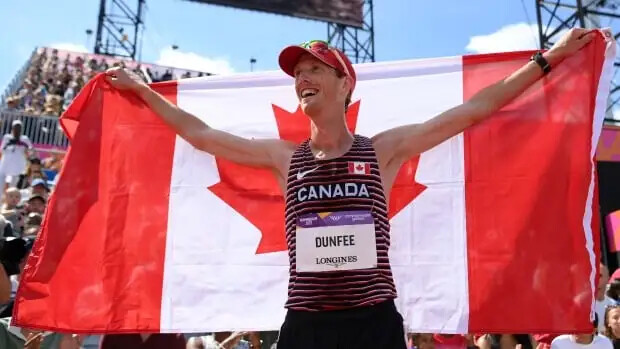
“Today’s goal was to believe in myself as much as my family and closest friends believe in me. I wavered in the middle but found it again in the closing stages,” Dunfee said. He fell back to fifth place around the halfway point, but moved up to take the lead in the closing stages. With 300m to go, Dunfee broke away to solidify the win.
Dunfee won bronze at the Tokyo Olympics in the 50K race walk (now non-existent), and finished sixth in the 35, 000 km race walk at the World Athletics Championships last month in Eugene, Ore. His previous national record was 3.35 seconds slower, in 38:39.72, set in June 2021 at the Harry Jerome Track Classic.
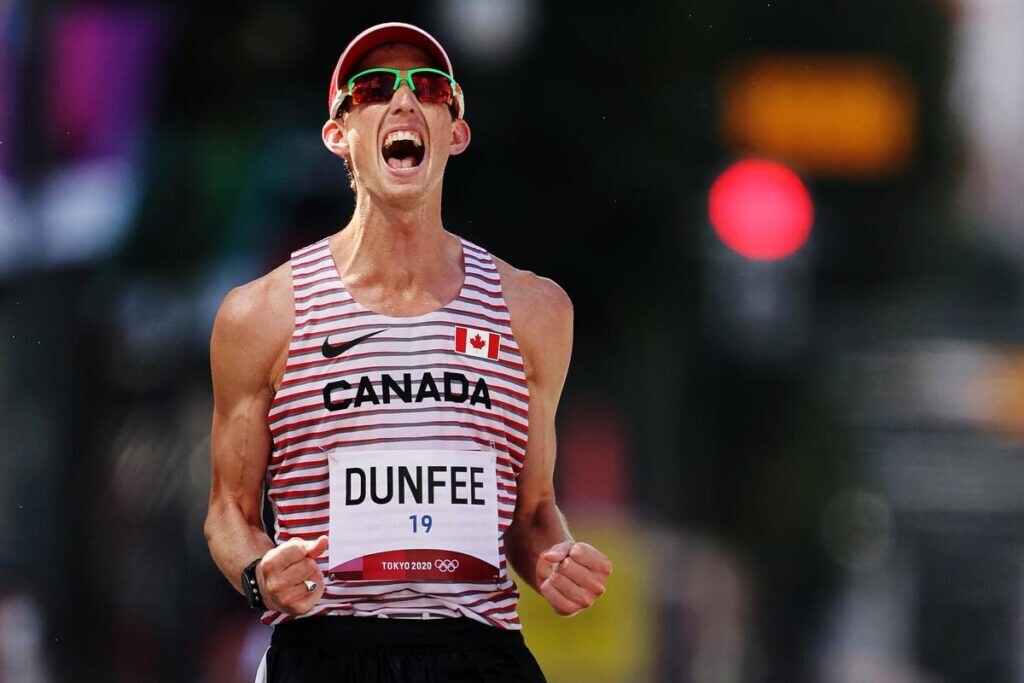
This is Dunfee’s first Commonwealth medal, and his third appearance at the Games. It’s Canada’s 23 gold medal at the 2022 Commonwealth Games.
How to watch?
Daily live coverage will be available on CBCSports.ca, the CBC Sports app and CBC Gem, with 10 hours of additional weekend broadcast coverage
(08/08/2022) ⚡AMPby Keeley Milne
The Commonwealth Games
The Commonwealth Games are coming to Victoria - bringing an action packed sports program to our regional cities and delivering a long-term legacy for our future. From 17 to 29 March 2026, Geelong, Bendigo, Ballarat, Gippsland and Shepparton will be on the world stage, attracting millions of viewers and creating thousands of jobs. The multi-city model will...
more...Eileen Gu, Freestyle Skiing Gold Medalist, Runs 1:41:07 in San Francisco Half Marathon
Gu placed second in her age group on July 24 after “spontaneously” signing up for the race.
At only 18 years old, Eileen Gu is a two-time Olympic gold medalist, model, and soon-to-be Stanford freshman. She is fluent in English and Mandarin Chinese and can play classical piano, too. With so many varied accolades and talents, one may wonder: Is there anything Gu can’t do?
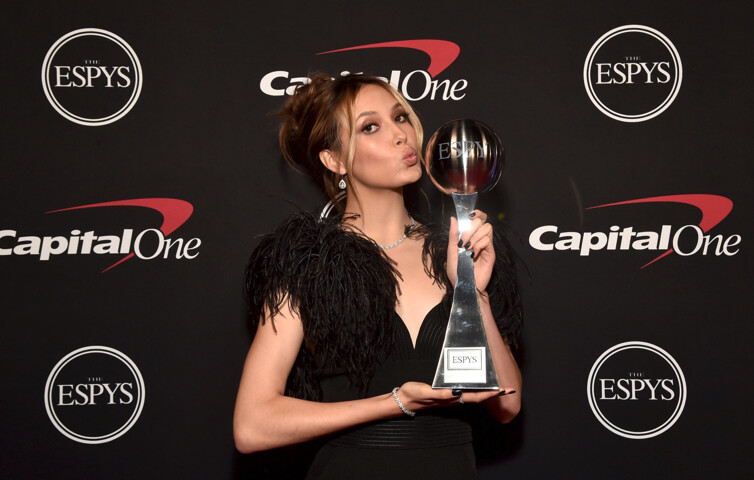
As if seemingly responding to this unspoken question, Gu recently added another achievement to her already lengthy list.
On Sunday July 24, Gu completed the San Francisco Half Marathon—and placed second in her age group. This happened several days after she won two ESPY Awards: Best Breakthrough Athlete and Best Athlete, Women’s Action Sports.
Without formally training for the 13.1-mile race, Gu crossed the finish line in ç, an impressive 7:43 mile pace.
In an Instagram post she wrote, “Landed in San Francisco 36 hrs ago and spontaneously signed up for the San Francisco half marathon. Went in with the relatively simple goal of finishing the race but got a bit competitive around mile 7 & wanted to see what I could make happen… hyped to walk away with an unexpected second place in the 19 and under age group!! Still on a high. What a day.”
Although racing in San Fran was an impromptu decision, Gu has history with the sport. She was a competitive cross country runner for seven years and has expressed admiration and gratitude for her former coach.
In an Instagram post celebrating International Women’s Day in 2021, after thanking her grandma and mother, Gu wrote, “…to my unbelievably strong high school cross country coach (who showed me focus and fearlessness).”
Over the years, Gu has also posted on Instagram about her cross country meets and running workouts.
Running is an integral component of her training routine; she even credits it for helping her get ready for her Olympic debut where she represented China. Gu is American-born – her mother is Chinese, and her father is American – but has competed for China since 2019.
“It’s definitely not easy. But I ran a half-marathon every week over the summer to prepare,” she said in an interview before Beijing. “I feel proud of the work I’ve done to build up my endurance base, so this is what I’ve been preparing for.”
Gu’s former training camp coach, Peter Olenick, told the New York Post, "She is the first one at training and the last to leave. She competes in multiple events; then she goes home to run and train. That is unusual."
Her unconventional tactics worked. Gu snagged Olympic gold medals in big air and halfpipe and a silver medal in slopestyle. She became the youngest freestyle skiing Olympic champion and the first freestyle skier to medal three times in a single Winter game appearance.
All of this came on the heels of winning numerous gold medals at the 2021 World Championships and Winter X Games as well as two gold medals at the 2020 Winter Youth Olympics – in big air and halfpipe.
Despite her success on the slopes, Gu said that running is her second favorite sport.
"I can break my own boundaries through running. Running is a bit different from skiing, because running can be done by everyone. There is no need to fall and stand up again. Everyone can enjoy the joy of sports and nature."
(08/07/2022) ⚡AMPby Runner’s World
The Real-Life Diet of Ultramarathoner François D'Haene, Who Makes Dominating 100-Mile Races Sound Low-Key
France’s François D’haene is one of the best ultrarunners in the world. He’s won some of the hardest 100-mile foot races out there like the Ultra Trail du Mont Blanc in Chamonix (3-time winner) and the Hardrock 100 in Silverton, Colorado (he's the 2021 champion and course record holder). But he’s not a one-dimensional athlete, he’s stood atop over 50 podiums in both running and ski mountaineering. And in addition to being a freakishly good athlete, he’s also a wine producer in Beaujolais.
But the father of three children and takes a refreshingly chill approach to his success: there’s no rules, no training plans, no strict diet. We chatted with D’Haene as he was gearing up for the 2022 Hardrock this weekend.
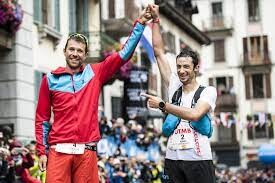
For Real-Life Diet, GQ talks to athletes, celebrities, and other high performers about their diet, exercise routines, and pursuit of wellness. Keep in mind that what works for them might not necessarily be healthy for you.
GQ: When you’re training for a big event, like the Hardrock 100, what time do you usually wake up? What’s the first thing you do?
François D'Haene: When I’m training for a big event, what time I wake up is different every day because I have to adapt every day—I also have a job and a family. I don’t have a regular plan!
Can you walk us through what a typical day looks like?
There is no typical day for me, but I always have something to do. This week I was cycling on Saturday (a casual 230-mile bike ride that took nearly 19 hours), with my children on Sunday, and wasn’t able to train on Monday because I had to deliver some wine to a few huts in the mountains by foot. Each day is totally different.
How do you balance training, raising three kids, and your wine business? Is it difficult to do all those things well?
It’s hard to manage it and get everything done, but I don’t want to make any compromises so I try to do as good as possible. I train when I can. I try to get some long days in the mountains and keep some moments for training, some moments for the business, and some for family. I work on my calendar with my wife. Of course, I don’t have so many moments for rest but I have to make room for the things I love.
What kind of workouts are you doing each week? How much mileage or how many hours do you spend training? How much vert are you getting in? Are you self-coached? Has your training in physiotherapy helped you develop your training plan?
I don’t have any regular training and I don’t want to have any regular training or workouts. I really just try to adapt myself and be happy with that and play in the mountains when I can. Because of my schedule, I don’t have a coach. I discuss my race calendar a lot with my team manager and we try to make it as good as possible. I just have to adapt.
Do you remember when you first fell in love with trail running or racing ultramarathons? Was there a specific moment?
It’s something that built up slowly over many years. I remember when I was a kid I always loved being in the mountains. For me it was a dream to understand what happened between the earth and the top of a mountain. I started to build my relationship with the mountain and adventure and trail running. When I was finally able to go by myself with friends (at around 16 or 17 years old when we had a car) I was so happy. The adventures became longer and longer and I fell in love with trail running. That was in 2002, so 20 years ago, and I’m still passionate about it.
What’s the most fun race or run that you’ve ever done? Why?
There are many many racing projects that are very fun. I like to do official races with bib numbers but I also like to do my own projects. I think that’s really cool and interesting. Doing the 211-mile John Muir Trail with friends was a nice experience and I think it’s one of the best memories I have in my trail running experience.
You say on your website that you are careful about keeping a healthy lifestyle. Can you expand on that? What does that mean for you, and what does it look like in your daily life?
For it’s more about longevity, about practicing activities that I love and being okay socially and with my job. This is my way to stay healthy: I ski a lot during winter, I try to do cycling too and not only running. I try to figure out my body and reset my body. When I have pain, I try not to run. Of course, you have some pain every day and every time, but it’s important to make the good choice sometimes and rest a bit. My way to stay healthy is to try to live a normal and well-balanced life and to think about it in terms of longevity. If it’s too stressful for you you won’t be able to do it for long, but if it’s okay in your life you can do it as long as you want.
Can you walk us through what you typically eat for each meal?
I think I won’t tell you because you will get afraid! No, I just try to eat normal. I mainly just eat by feel. I have some children and try to educate them about eating seasonally and locally. I like food and I like fat and I like to play with my food. I try to eat what I want and just try to think about what’s good for my body and for my children and the planet.
What do you eat and drink while running and what’s your strategy with that? How often do you eat or drink while training and racing?
There’s not one right strategy for this so it’s important that people figure out what works for their body. It is crucial to test everything out before the race. For me, I never drink water. I only drink nutrition drinks and I always drink the same one. For food, every hour I eat some sort of gel.
You’re a wine lover—do you drink wine at night during training periods or no?
During training, no! I try not to drink wine or beer. I’m not just a wine lover, I drink anything. I have a normal social life and I’m so happy to share beer with my friends, or a glass of wine. If you run 10 hours with friends then you are so happy to share beer or coffee or wine with them after. Do what you want—take pleasure in that. I think my best advice is to make sure you have longevity and continue to perform.
Can you talk to us about your work as a wine producer? How did you get started doing that and what kind of wine do you make?
It was a project with my wife so we could be together more and spend more time together. We were interested to spend some time in nature. Wine is something very interesting in France and all over the world because it’s always different from area to area, with the taste, the production, and the history. It’s a very interesting thing and to be a wine producer is a very complex job. You have many things to do. Of course we like the taste of wine and the moment when you drink wine. The kind of wine that we did in Beaujolais is a Gamay wine, 100%. It’s very social and fruity so I'm sure you should enjoy it.
Why do you want to go back to the Hardrock 100? What do you like about that race and what are your goals this year?
Just because I won last year and got the opportunity to come back! No, what I like about the race is it’s an interesting race and an iconic race. It’s 160 people and a very strong and deep community. It’s a very nice place and the mountains are amazing. It’s a mix between the altitude and technical trail and easy trail, and it’s just a perfect mix of everything for me to combine strategic training. I have very nice memories from the race and I hope we can build some new good memories this year.
(08/07/2022) ⚡AMPHow to Train for Technical Trails
Technical trails can ask a lot out of the runner. They demand a fine balance of concentration, strength, and agility that can take years to hone. But being a strong runner of technical trails can quickly translate to improved efficiency, faster races, and overall health.
Like anything, upping your game on technical trails requires practice and preparation. That's why we turned to our favorite coaches and athletes, asking them how best to build the skills for staying upright and moving fast through tricky terrain. Here's what they said:

Fancy Footwork
"One of my favorite sets of drills to build skills for technical trail running is Lauren Fleshman's dynamic drill routine," says elite mountain runner and coach Mason Coppi. "The routine includes dynamic drills that improve overall biomechanics, coordination, foot speed, and ability to move in multiple planes of motion."
Though the routine was originally designed for track and road runners, it targets skills and agility that translate well to trail running. These dynamic, multi-directional movements keep you on your toes and help with the precise footwork you need for tough terrain. Coppi likes the athletes he coaches to do the routine after each run, to reinforce good footwork and form, especially when the legs are fatigued.
Take action: Do 10-15 minutes of mobility and drills after two to three runs a week to improve agility and footwork. Use the video above, or try using a ladder, cones or even chalk your own "ladder' on the sidewalk to practice.
Strength Train
"Pure strength is always in fashion for any difficult race, so it's a good idea for trail runners to improve their maximum strength output," says Strength Running coach Jason Fitzgerald. "By getting substantially stronger, runners will be able to cover steep and technical sections with ease. And (of course!) spending time on technical trails is the best way to get better at them."
San Diego-based Coach Jessica Riojas Schnier agrees, and says athletes should specifically target their toes and feet with strength training.
"I do toe yoga (stretches that target the feet and toes) and ankle inversion/eversion exercises while sitting at my desk and occasionally use a wobble board to help strengthen my ankles," says Riojas Schnier. She also recommends toe yoga for athletes who struggle with foot and lower leg injuries, which can help with agility and stability on technical trails.
Being a strong runner of technical trails can quickly translate to improved efficiency, faster races, and overall health.
"When technical terrain is not available, I often utilize movement-specific strength work. The roots and rocks simply aren't ladders on the ground - that would be nice and predictable, but there is more to running technical trails than a quick high knee," says Coach Jenny Quilty.
Quilty and Schneir recommend David Roche's Speed Legs and Mountain Legs routines, which target limbs individually in addition to ankle and foot strengthening.
"To prepare for technical terrain, I use run-specific strength moves that best replicate the movement patterns of climbing or descending on trails," says Quilty. "A few of my favorite go-to strength moves often focus on eccentric loading to build stability and strength with downhill running. Since technical terrain often requires more time in the mid stance of the running gait (when the foot is planted on the ground) I incorporate a few moves to target stability and power navigating movements while a single leg is under load." She recommends moves like step downs, single leg lateral slider squats, step-ups, and reverse nordics.
Take action: Incorporate a wobble board or Mobo board into your mobility routine. Don't neglect your feet and toes when it comes to strength! Try this routine for a strong foot foundation.
Just Run
The best way to improve your technical trail running ability is to just get out there and do it.
"Go out on the trails and get comfortable," says coach and elite trail runner Tabor Hemming. She and her husband and co-coach Eli Hemming recommend getting out on the trails as much as possible, while augmenting that trail running with some targeted strength training.
"Some of our favorite strength exercises are lunges (front, back, and lateral) and then planks. These are the biggest bang for your buck exercises, especially for a time-crunched runner. We recommend incorporating them two to three times a week following your run."
trengthening your lower core with stabilization exercises like planks and leg lowers will also help with stability when moving quickly through technical terrain. But, there's no replacement for getting out on the trails, and honing your skills in the real world.
Nike pro runner and coach Matt Daniels recommends repetitive running on technical terrain. "It always helps to have someone who is faster than you on technical terrain to run in front so you can practice just staying with them and reacting to what's ahead quickly!"
"If it is accessible, the best way to improve is to practice, by following others, joining a group, doing sessions on a specific section of trail where you run for a few moments, walk back, and repeat to test out and build confidence in footing," says Quilty.
Take action: Grab a friend or join a running group and hit the trails. Notice the quick turnover and shortened stride most folks adopt when moving quickly through technical terrain, and see what lines your trail buds take.
(08/07/2022) ⚡AMPby Trail Runner Magazine
The Joys of Small Local Races
But what it lacks in high-falutin' swag, it more than makes up for in community and character. While there are speedsters at the front of the pack, pushing each year to lower the course record (now a mind-boggling 4:07:48), some runners take well over nine to complete the course, marshaled by regional runners and the Ouachita Amateur Radio Association.
The race is capped at around 90 runners and remains small enough to fit all entrants in an annual start line group photo. The race is the destination, not a waypoint en route to some larger, shinier thing.

"I think that ABF has always been special because it is one of those events that feels like a big family reunion," says Stacey Shaver, who's been the race director for ABF for the past five years. "It's also just a cool corner of the state, where you can forget that modern (in)conveniences like smartphones and email exist for a few hours. We have runners come back year after year and from across several states. Even for runners new to our event, it feels like going to grandma's house. Grandma's house means fun, games, laughter, and leaving well fed. That is exactly what our runners get."
In addition to the homey feel of Grandma's house, the past few year's awards for first place finishers have included hand-harvested local honey, hand-soldered fork statuettes, and a charming cross-stitched winner's plaque.
Community Roots
As more races are becoming consolidated under increasingly large banners, company sponsors, and race series, many runners are looking to smaller, home-grown events with a family feel. Few things top the feeling of seeing friends and run family out along the course and feeling supported by your home community.
Runner Justin Grigg recommends Missoula, Montana's Double Dip race for just that reason.
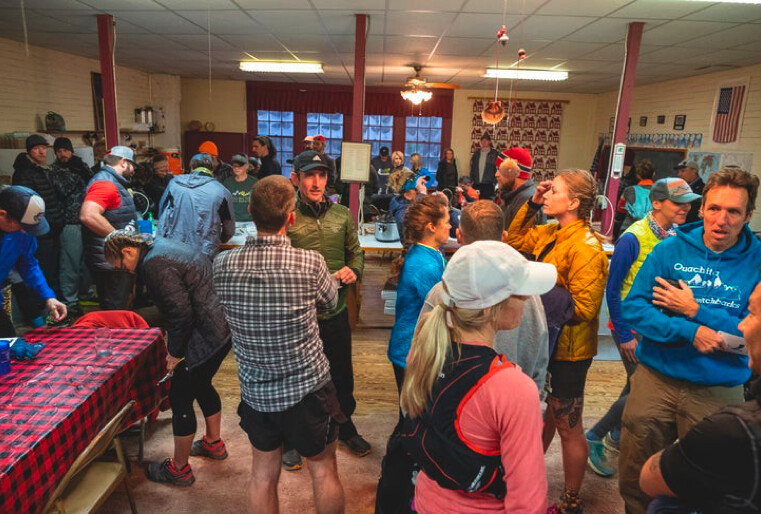
"You'll usually see friends racing, but also working aid stations, spectating along the course or gathered at the start/finish area. With the two out-and-back sections, you more than likely will see friends who are racing ahead of or behind you, and people who aren't racing will run up University and Sentinel to watch," says Grigg.
Many runners appreciate being able to share their race-day experience with the larger community and enjoy being cheered on while they're competing. Live music, food, and adult beverages don't hurt either when it comes to incentivizing community members to come and bask in the finish line stoke. Some events can almost feel at odds with the communities they happen in, and it's a breath of fresh air when everyone feels included in race day festivities.
Close to Home
The International Trail Running Association (ITRA) estimates there are around 3,600 trail races every year, and approximately 1,400 of those are in the U.S. While big events garner the most press and social media attention, there are hundreds, if not thousands of smaller, local races that are providing the bulk of opportunities for runners to lace up their shoes and hit the trails.
Aside from the accessibility, there are economic and environmental reasons that racing closer to home is more appealing.
Sam Robinson, from Oakland, California, loves the local Woodmonster Trail Race because it's practically in his backyard.
"I've run over every trail in the park numerous times. The main climb in the race is a spicy 0.9-mile ascent with a 14% grade-one of my favorite hills to run up in California. I know and love almost every inch of those trails and that makes the race joyous to me."
Traveling is a hassle. Trying to make sad hotel-room oatmeal in a tiny coffee maker from the 1990s at three a.m. before having a blow-out fight with my phone's GPS system to find the start line in the pitch dark of rural Nowhere is never fun. You know what's even better? Sleeping in your own bed, eating your own properly-cooked oatmeal, and navigating your own self to the start line.
Race locally. If not for the community or environmental plusses, then for the extra 20-90 minutes of sleep.
It's Not About Speed
"I love when a race director focuses more attention on the experience than the results of the race itself," says pro athlete Jeff Colt. "it makes the event fulfilling for the entire field instead of just some of the top runners. Jemez Mountain Trail Runs is another good example of this - instead of making grandiose prizes for the top three or some fancy sweatshirt included with registration. It makes the event fulfilling for the entire field instead of just some of the top runners." Colt's favorite small race is the Randolph Ramble, based in Randolph, New Hampshire.
Many RD's are subbing out swaggy grab bags filled with gear and gels no one wants with bespoke items and experiences instead. "The Jemez Mountain Runs offer breakfast before the race, amazing aid stations, a live band at the finish, and a full dinner after the race," says Colt.
Registration for the Ramble? Just $45. Many big ticket races cost hundreds of dollars to enter, before even forking over cash for housing and meals, making smaller, local races an affordable alternative. Washington State's Capitol Peak 50 only costs $50. At a dollar a mile, you'd be breaking even, even if you didn't have a lick of fun. Additionally, many smaller races like ABF invest in their home communities. Every cent raised at ABF goes directly to the Big Fork Community Center.
The community created by the races is important, too. While many larger races inspire buy-in from the community they happen in (I was recently blown away by the volunteers at the Western States Endurance Run, many of whom abandoned their weekend running plans to stand in a river or hand out flat coke), many volunteers at smaller races aren't trying to up their chances in a lottery or waitlist. They're simply there because they want to be. Whether it's operating a HAM radio or flipping pancakes at the finish, a race that's stacked with community-run aid stations feels extra special.
"I want to meet people at races and the ones that foster community are the ones that attract me the most. The Randolph Ramble welcomes runners in and makes them feel like a neighbor. I'd be surprised if you didn't end up with a new running buddy after running the Ramble," says Colt.
The worse the website the better the race.
The worse the website the better the race. For years, the race existed only as a Facebook page, with no website or online registration, a testament to the "if you build it they will come" spirit nascent in the true grassroots of trail running.
"At the Ramble, expect lumberjacks to be out there in their leather hiking boots, elite trail runners who prefer to stay out of the limelight, mountain wanderers who descend from above the clouds only to resupply for food and to run the Ramble, and other local north country neighbors who want a good morning workout," says Colt.
Race Director Doug Mayer (also a columnist for this magazine) says that the community feel is very much by design.
"We turn to our community for everything we need, from food courtesy of the local pub and cafe to handmade finisher awards. There's a strong sense of community and self-reliance in the White Mountains, so we're used to thinking this way. If you just stop and look for a moment, you'll discover all kinds of talents and services practically at your feet. And when the community is powering the event, almost by default it will have a great local vibe," says Mayer.
Are Small Races on the Rise?
"The big races grab the headlines, but under the surface, every day and all around the country, local trail runners are coming together to create authentic, unique, and wonderful events," says Mayer. "Most of us got our start that way. I'm deep in the world of marquee races now, but it's still true that nothing makes me happier than seeing 100 runners head up Mount Crescent at the start of every Ramble."
"Trail running as a whole is growing, and people who can't get into those events but still want the challenge of a mountain race will find that and much more at Athens Big Fork Trail Marathon but without the big race fees," says ABF RD, Stacey Shaver.
"We simply ask people to pay what they can. We don't want money to be the reason someone misses out on experiencing our races or feeling connected to the club and community. I also think it's really special to help people see the fantastic beauty that we have here in our backyard. I always feel such a sense of local pride when I see the beauty here, and I'm so grateful that we get to enjoy it in this special way."
Because local races are often directed by, well, locals, they can be more responsive and receptive to the community's needs, whether that's access or affordability. At ABF, it's not uncommon to see competitors hiking in full hunting get-ups. I've seen makeshift garbage bag ponchos, blue jeans, and an actual, hand-carved wooden hiking staff. And maximizing points of entry to the sport via affordable local events is a great way to grow the sport.
But what happens when races become victims of their own success? As a younger runner, sometimes it's hard not to feel nostalgic for a trail running world I never experienced but hear frequently about - one without waitlists or golden tickets, a utopic vision where you could register for marquee ultras day of, at the start line. The way these stories are passed down from my older trail buds, it seemed as though at every race you might see Scott Jurek flipping finish line pancakes, or that running Western States wasn't a matter of "if" but "when." It's hard not to pine for the trail running days of yore, even if they frequently involved non-technical fabrics and carrying your water in a Gatorade hockey bottle a la Matt Carpenter. It's not "Make Trail Running Great Again" nostalgia, but the ability to connect with the running community stripped of the pretenses of needing something flashier than the simple appeal to come and run.
Even so, I'm glad trail running is growing. And I'm glad it's getting more competitive. I'm especially glad that more folks every day might have the opportunity to race, wherever they are, and fall more in love with this wonderful, heart-breaking, silly sport.
Should I be more worried about people "discovering" my favorite local race? Will gushing about its unique charms be the very thing that causes it to become a big box event?
"I'm not worried about sharing how great this event is with a national publication, because the beauty of this event is that it can be recreated with little effort, and SHOULD BE recreated in your little pocket of the country," says Colt. "It's a local race, but it is a great example of what is needed to replicate this in your own backyard. You need an idea, a desire to gather some runners together, and maybe some local sponsors who dig what you're trying to doHave a fun, local event on the 10K of trails nearby your house and build that community where you are. We all have the tools to make something special."
There's nothing wrong with big races either. Getting to compete with the world's best athletes in amazing locations with well-trained aid station attendees is amazing - but it's no replacement for the local rotary club dishing out Fireball and pie on a 30-degree drizzly morning in the Ozarks.
Meanwhile, Back at Big Fork
I'll keep signing up for big races. I'll keep accepting swag bags full of expired lube samples and discount massage flyers. I'll keep setting alarms for the crack of dawn to register for races and I'll keep refreshing my browser to see if my name is moving up the waitlist.
But, I'll also still keep rolling up to the Big Fork Community Center on the second Saturday in January to subject my ligaments to the indifference of Ozark trails. I'll keep showing up to run a course that's only marked by comically sporadic blazes to get a result that will never show up on UltraSignup, or affect my ITRA score whatsoever.
I'll keep running ABF because I like that you can't upload the race to Strava for hours due to a lack of cell service. By the time you have enough bars to post a recap on Instagram, the urge to seek validation via screen has faded into a warm glow of post-run beer and real-life high fives.
I'll keep doing it because sometimes my legs and my heart need a reminder of why I trail run: not for accolades, recognition, or points, but for community and homemade chili. In lieu of a finishing chute, there's a chalk line etched onto the highway, a lone man clad in his warmest hunting wear with a clipboard marking down finishing times. Finish line IPAs and fresh biscuits are a bigger reward than any kudo, and time spent running in the woods with close friends will always be my favorite way to spend a Saturday.
here's no gun.
No timing mat. No official start line.
The Athens Big Fork Trail Marathon starts at the Big Fork Community Center, the barn-quilted hub of an unincorporated community in southern Arkansas boasting 179 residents, at last count. Nestled in the Polk County region of the Ouachita Mountains, the trail itself was constructed by the U. S. Postal Service 125 years ago along pre-established Choctaw and Caddo trade routes and game trails and was partially restored in 1986. Summits along the course, which boast (according to my GPS, though the thick foliage can fool even the highest of tech) almost 8,000 feet of climbing, are charmingly named Brushy, Big Tom, Brusheap, and Hurricane Knob. The average grade is 12%.
I was drawn to this race after reading about it in this very magazine, a story called The Toughest Trail Marathon You've Never Heard Of. After seeing how close this southern trail test-piece was to the Ozark hills, where I spent my childhood, I was drawn by the allure of something that felt comfortably familiar, and familiarly uncomfortable. There's a warning on the race's website meant to deter beginners. Below that, a secondary deterrent should the original warning have the opposite of its intended effect.
"Please do not be enticed into trying this run because of the difficulty warning-it is merely an honest attempt at preventing the run organizers from having to find and rescue someone ill-equipped for the event."
For the uninitiated, the trails of the southeast are punishingly steep and Dantean in nature - where the trail exists at all. For much of ABF (what locals lovingly call the marathon) the "trail" is in fact, a dried-out ol' crick. Mossy "baby-heads" (aptly named rolly-polly rocks approximately the size of a baby's head) and slick roots cackle at the futility of rubber outsoles and lugs. Forest Service literature euphemistically refers to it as "unsurfaced".
There's no entry fee. No timing chip. No YouTube stream.
(08/07/2022) ⚡AMPHow Your Mindset Can Play a Role in Injury Prevention
Sometimes, an obsession with running can raise your injury risk. Here’s how to recognize it.Research published by the Technische Universiteit Eindhoven in the Netherlands says your mindset could play a major role in reducing injury risk.
Researchers found a link between lower injury risk and the ability to detach from running, whereas an obsessively passionate mindset was linked to worse health outcomes.

The study includes a list of statements to help you figure out your psychological view on running.
As a long-distance runner, you probably aim to do everything you can to prevent injury. You build your mileage gradually in your training, plan for rest days, strength train, and change your shoes once they’ve maxed out on mileage. But do you pay attention to your mindset when it comes to preventing injuries? According to research published by the Technische Universiteit Eindhoven in the Netherlands, that could play a major role in reducing injury risk.“How you view and manage your running from a psychological perspective appears to be important for which health outcomes you’ll experience from your sport,” Luuk van Iperen, Ph.D., researcher at the Human Performance Management group at the university tells Runner’s World. “There are good practices that can affect injury risk and fatigue associated with long-distance running.”
The Role Your Mindset Plays in Injury Risk and Prevention
Looking at more than 1,000 runners included in two studies, Iperen and his fellow researchers analyzed the effectiveness on injury prevention of functional self-regulatory mechanisms. He defines this self-regulation as a blend of physical, cognitive, and emotional components. In terms of psychology, these mechanisms include the ways runners cope with the demands of the sport.
They found a link between lower injury risk and certain mindsets, including the ability to “detach” from running. Being able to detach from running means you’re able to stop being cognitively and emotionally occupied with the sport when not training.
“Being obsessively passionate seems to link to both worse management of one’s running efforts, as well as worse health outcomes,” says Iperen. “Make sure you remain flexible in your efforts.”
This doesn’t mean trying to turn off your enthusiasm for the sport, he clarifies. In the research, Iperen and his team separated passion into two categories: obsessive and harmonious. The latter is characterized by flexibility and balance with other parts of your life—such as skipping a run on your training plan if your body needs rest, or making sure you don’t miss social gatherings or time with family due to running—while obsession involves more rigidity. How can you know the difference? Control, he says.
“If you feel like you’re lacking control over your efforts, that implies you’re out of balance with your passion, and that could increase injury risk,” he noted. For example, you may skip rest days, keep running even though you feel fatigued, and increase mileage too quickly if you have a more obsessive mindset toward running and less control over your commitment to hitting every workout.
How to Know if Your Mindset is Putting You at Risk of Injury
To help runners assess their own psychological perspective, the researchers developed a test with 12 statements—available in the appendix of the full study—that asks how often runners agree with sentiments like these:
If I could, I would only engage in running.
I can’t mentally distance myself from running.
After running, I don’t shake off the physical exertion from running.
I have trouble focusing my emotions on aspects other than running.
After running, I don’t tend to put all thoughts about running aside.
Strong or frequent agreement with these statements can imply a runner may be at higher risk for the “obsessive passion” that might lead to injury and fatigue.
That doesn’t mean you’ll automatically get injured if you’re deep into the running obsession—after all, the weeks leading up to a marathon or other race can get pretty intense and focused for many runners and tend to take over the psyche—but Iperen says that taking mental breaks can be helpful for reducing your risk level. That might include simple strategies like reading a book or magazine, meditating, spending time with friends, or even working.
The Role Your Mind Plays in Dealing with Current Injuries
Using psychological strategies to prevent injury may be helpful, but what about when you’re already injured? That can create a tricky balance. You might want to keep challenging yourself and push through the pain, but you need to recognize if doing that will worsen your injury, says Clint Soppe, M.D., orthopedic surgeon and sports medicine specialist at Cedars-Sinai Kerlan-Jobe Institute in Los Angeles, and orthopedic consultant for the LA Galaxy team.
Some ways to tell if you’re overdoing it, he suggests, include pain that’s sharp instead of a dull ache, and if pain persists for more than a few minutes once you stop running.
Your mindset and your larger running strategy should include knowing when to stop yourself from running, especially if you’re experiencing pain—which Soppe says is often a sign your body is sending as a way to get you to change what you’re doing.
This is usually the case with stress fractures, for example, a common running injury, Soppe tells Runner’s World. Because these fractures happen over time due to microtrauma to the bone, your mindset needs to include awareness about how your body is feeling on each run, not just in general, he says, so you can recognize the pain and take a few days off or seek help before it becomes something that really sidelines you.
“You can definitely get into a psychological frame of mind where you ignore signs of problems and brush them off as minor aches and pains, particularly if you’ve been running for a long time,” Soppe adds. “That’s true with stress fractures, but also for any type of potential issue. You really need to pay attention to mobility throughout the body and adjust as needed, because you can’t just think your way out of injury. Your mindset should be: What is happening with my body today, and how can I support that?”
(08/06/2022) ⚡AMPby Runner’s World
Kenya's Abraham Kibiwot digs deep to deliver Commonwealth steeplechase gold
Abraham Kibiwot was made to sweat before winning the 3,000m steeplechase gold at the ongoing Commonwealth Games at the Alexander Stadium on Saturday.
Kibiwott had to weather strong challenge from India's Avinash Mukund Sable to win in eight minutes and 11.15 seconds.
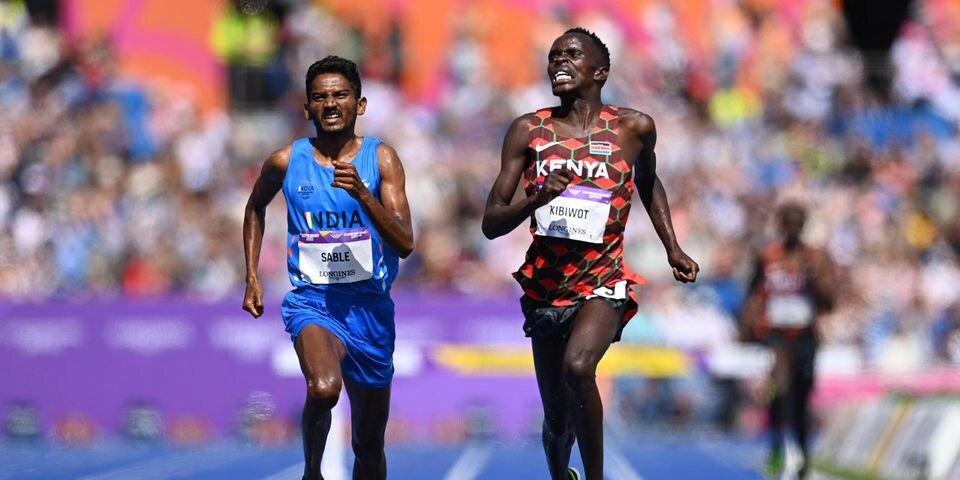
Mukund claimed silver in a Personal Best time of 8:11.20 as 2021 World Under-20 3,000m steeplechase Amos Serem grabbed bronze in 8:16.83.
Defending champion Conseslus Kipruto finished sixth in 8:34.98.
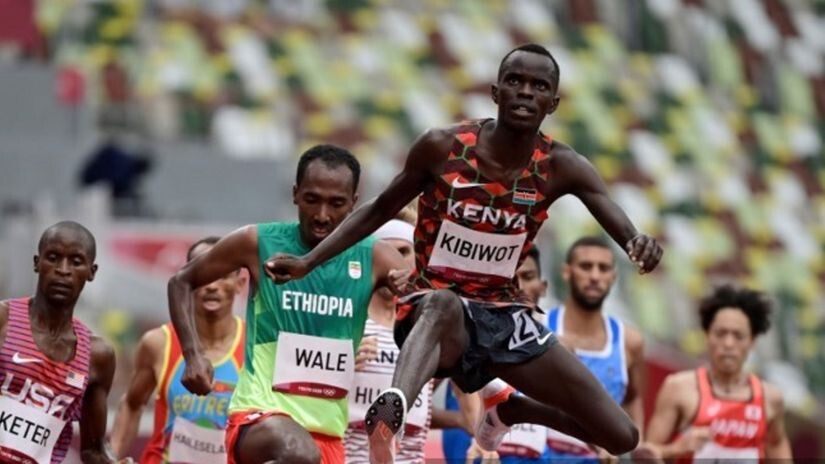
It was the third victory for Kenya at the Games with Ferdinand Omanyala (100m) and Jackline Chepkoech (3,000m steeplechase) having won gold in their respective events.
It brought to 12 the number of medals for Kenya; three gold, three silver and six bronze.
It was the first time Kenya failed to sweep all the podium places since 1998 Kuala Lumpur Games.
"I am happy to finally win after I got silver in 2018. It feels good," said Kibiwott adding that Kenya could have lost the title to the Indian if he had failed to inject in the pace.
"I know Mukund well from the World Athletics Championships in Oregon. He has beaten me once at some Diamond League race," said Kibiwott explaining that he is now at peace after the Tokyo Olympic Games and World Athletics Championships disappointment. "I won't rest until we have the Olympic and World titles back in Kenya," explained Kibiwott.
"I thank God for bronze. It was a fast race but I am happy Kibiwott's tactics worked otherwise it could have been bad. We thank God this far we have reached," said Serem.
"My lower back problem recurred midway through the race hence I couldn't push any further. I had to slow down," said Kipruto. "It's not a good performance but I am glad I finished the race. There's nothing much you can do with an injury."
(08/06/2022) ⚡AMPby Ayumba Ayodi
The Commonwealth Games
The Commonwealth Games are coming to Victoria - bringing an action packed sports program to our regional cities and delivering a long-term legacy for our future. From 17 to 29 March 2026, Geelong, Bendigo, Ballarat, Gippsland and Shepparton will be on the world stage, attracting millions of viewers and creating thousands of jobs. The multi-city model will...
more...Sleep better to run faster, getting enough sleep is the best hack out there for improving your performance
If you’re putting in training time, fuelling your body well, and still feel like you are not making improvements, you might just need more (and better) sleep. Neuroscientist and podcast host Dr. Andrew Huberman often emphasizes the importance of sleep and how it carries over to every aspect of life.
“Sleep is the foundation of our mental and physical health and performance in all endeavours,” Huberman explains.” If you’re not sleeping deeply and for long enough for most nights, you are not functioning at your full capacity.”
Here are five of Huberman’s top tips to incorporate more and better sleep into your life and take your running performance to the next level.

View sunlight by going outside within 30-60 minutes of waking
If you live in North America, you probably read that sentence and scoffed due to our lack of daylight hours during the winter. Huberman suggests that if you wake up when it is still dark out and you need to be awake, turn on artificial lights and then go outside once the sun rises.

Wake up at the same time each day and sleep when you start feeling sleepy.
Forcing yourself to stay up and going to sleep too late (for you) is one reason people wake in the early hours of the morning.
Avoid caffeine within eight to 10 hours of bedtime
We have all heard it before, and many tend to ignore it. I know that I feel like I can fall asleep just fine without keeping track of my caffeine intake, but I’m probably not getting quality rest.
Limit daytime naps to less than 90 min, or don’t nap at all.
Naps are great until they impact your overall sleep. Keep your naps short (90 minutes max is ideal) if you must have them.
Avoid alcohol, or at least know that it causes disruptions in your sleep.
For the best night’s sleep and an easier wake-up, you’ll want to limit your alcohol intake. If you are planning to have a few alcoholic beverages, try to alternate with water, and be aware that your sleep may not be the best.
No one manages sleep perfectly, and that’s OK. “The occasional night out or missing sunlight viewing here and there is not a big deal, so don’t obsess about that,” says Huberman. “However, if any of us drift from these and the other behaviours for too long, we start to suffer,” he adds. Being aware of how sleep impacts your running performance (and entire life) is the first step to optimizing your nightly routine.
(08/06/2022) ⚡AMPby Keeley Milne
How 30 Days of Running Changed These Bodybuilders’ Physiques
Running every single day for a month proved a physical and mental challenge for YouTube's Buff Dudes—but did it kill their gains?
A hugely popular trend among fitness influencers a little while ago would be to take on various military fitness tests without any prior training, as a way of showcasing their own strength and endurance. However, a common stumbling block in each of these challenges would be when swole bodybuilders, who had aced the bodyweight exercise rounds, simply didn't have the sufficient level of cardiovascular fitness to complete the running portion of the test.

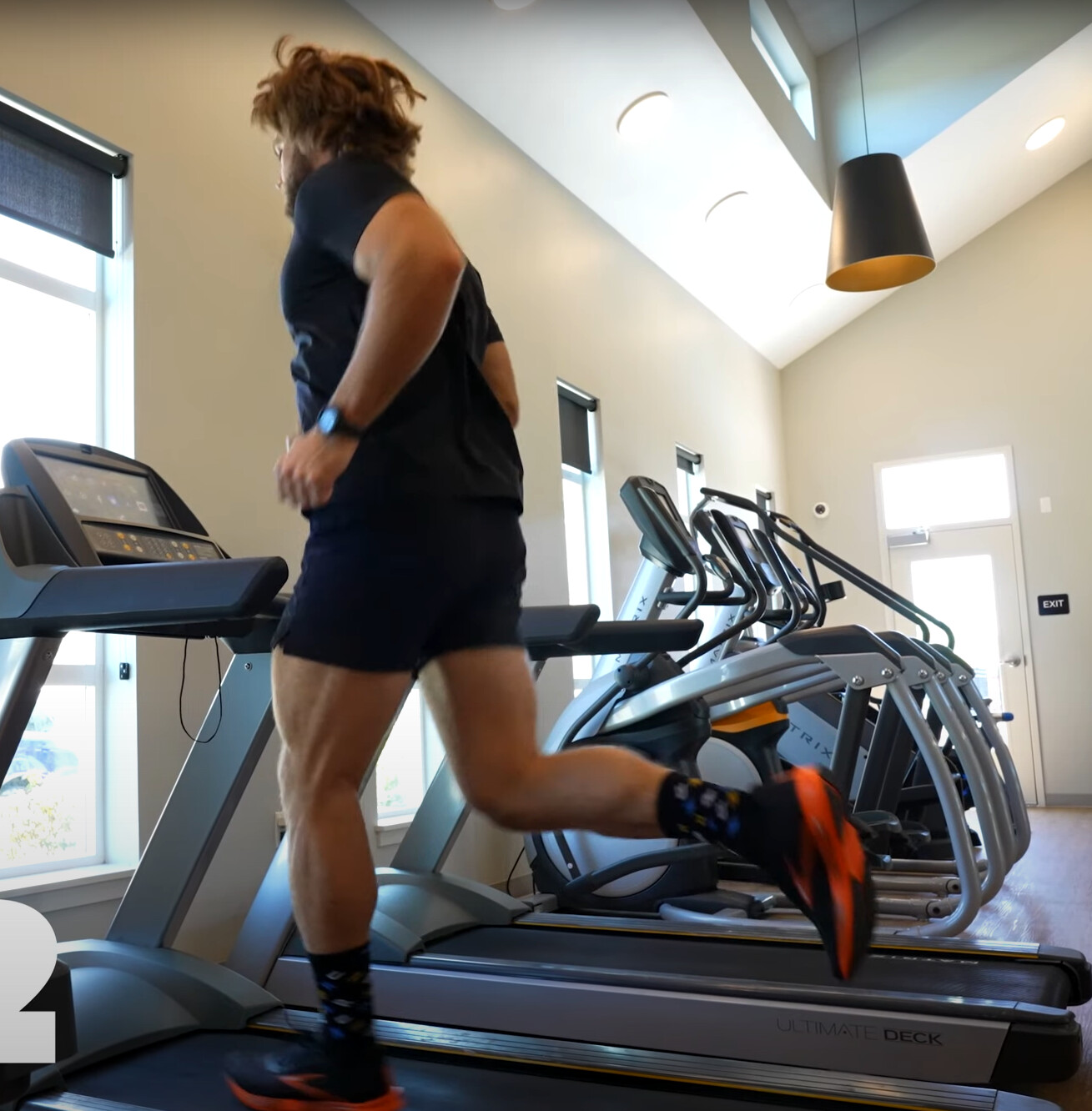
The Buff Dudes, aka bodybuilding brothers Brandon and Hudson White, fared better in those runs than some of their peers, but they were still curious as to what might happen if they increased the amount of running they were doing in their everyday lives—and how it might affect their gains. In a new video, the Dudes decide to run every single day for a month while preparing to take part in a 10K alongside a group of considerably more experienced runners.
"My legs are killing me on these runs," says Brandon after the first week, noting that he's essentially working his lower body twice as hard during this challenge as he is still doing his regular training in addition to all of the cardio. "The good thing is, my cardiovascular strength is there, I feel very strong there... But because I'm working out pretty regularly, and the workouts are strenuous, I'm definitely feeling the fatigue in my muscles."
In order to ensure his body is recovering as much as possible in between runs and workouts, Brandon incorporates stretching and mobility exercises into his routine, tracks his nutrition closely, and sets himself a sleep schedule of at least 8 hours per night.
For Hudson, the real challenge lies in running every single day without taking a break, as this is something he isn't used to. His aim is to run 6 miles each day, but he is "pretty beat" by the time he gets to the halfway mark. "I'm used to the gym, where you're doing 8 reps of deadlift, then you get a nice healthy break there before continuing on to the next set," he says. "But with this, there are no breaks, and it can be so psychological, because I want to quit by the end of that first half mile, and I still know I've got a long way to go."
One takeaway from the challenge is that they feel able to confidently bust the myth that cardio kills gains. Each of them loses around 1 pound, so if anything, the experience has helped them get a little bit leaner.
As the day of the 10K approaches, both brothers feel optimistic about the progress they are making on their speed and stamina... then on the day of the race itself, they place a tied dead last. "That was humbling," says Hudson. "Hell of a lot of fun, though... and it only makes you want to get better."
(08/06/2022) ⚡AMPby Runner’s World
Enhance your training with the Jevitty app for masters runners
A new health and fitness app has been created out of Vancouver to enhance the performance of the current and next generation of masters runners. Jevitty is an app that tracks your progress on essential health metrics like body fat percentage, distribution, lean mass and bone density with one tap of the finger, helping you get the most out of your training while you age
The app takes the user’s current lifestyle and body composition information and provides them with a health score rating out of 200. When the user moves into a healthier way of living, that health score is updated in real-time, giving them a chance to track their progress.
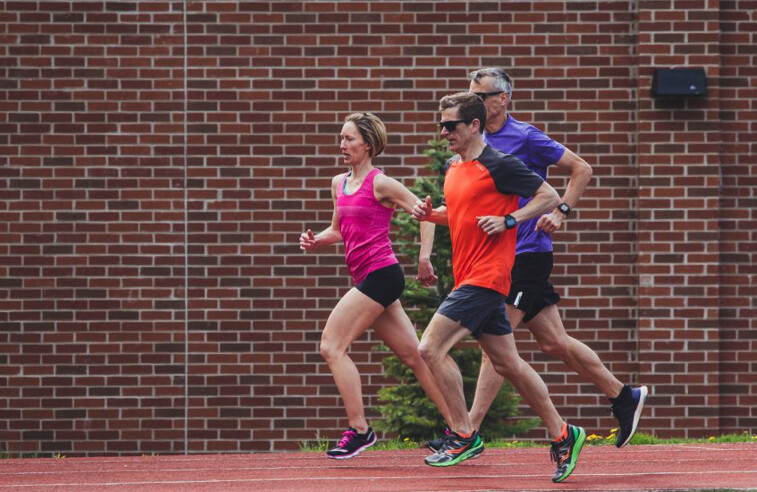
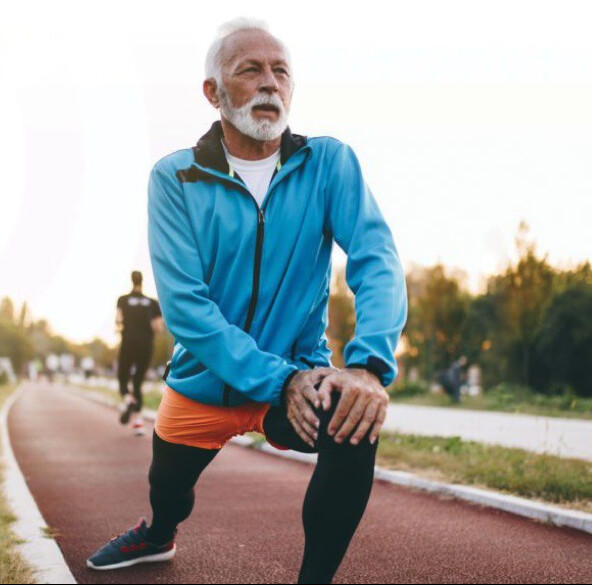
You can also sync the Jevitty app with your fitness tracker or GPS smartwatch and track other metrics like heart rate, sleep quality, activities and even how much oxygen your body uses while running (VO2 max).
The mind behind the app is Jerry Kroll, an experienced masters marathoner who found his inspiration while trying to break the three-hour barrier at the 2005 Toronto Waterfront Marathon at age 42. He was passed in the final few kilometres by the late Canadian running legend, Ed Whitlock, who ran 2:58:40 to become the world’s oldest man to run a sub-three-hour marathon.
“We want to change the way people think about life by giving them access to tools, professionals and services they need to turn the fear of getting older into a dream to be achieved,” says Kroll. “The app is a fun, engaging, research-informed way to create an optimal balance of body and mind and help redefine people’s true potential.”
At the 2022 Vancouver Half Marathon in June, Jevitty teamed up with Canada Running Series to offer a cash prize for the oldest sub-two-hour finisher. Janet Pritchard of Burnaby (W65-69) and Rick Horita of White Rock, B.C., (M70-74) won the inaugural Golden Shoe Award.
“We hope the award inspires younger athletes to live healthier when they are older and keep running,” says Kroll.
The company plans to reach out and partner up with more races around Canada to bring more awareness to Jevitty’s mission. “We want to ensure people are getting out to exercise regardless of age,” says Kroll.
The Jevitty app just launched for iOS users and will soon be available for Android.
(08/06/2022) ⚡AMPby Running Magazine
The Health Benefits of Sweet Potatoes and Why Runners Should Eat Them All Year
You don’t need to save this veggie for the fall.
You might relate sweet potatoes to the fall or holiday season. But there’s good reason to add them to your plate all year. In fact, considering the plethora of health benefits you get from sweet potatoes, they’re certainly worthy of adding to your list of foods to fuel your runs.

What are the nutrition facts for sweet potatoes?
Just like regular potatoes, sweet potatoes come in a variety of colors and tastes, from orange to purple to cream and ranging in level of sweetness. This means, also just like regular potatoes, the nutritional value of any given sweet potato will vary slightly depending on the type. But ultimately, no matter which kind you buy, sweet potatoes pack the nutrients runners need.
For example, a study published in the journal Food Measure in 2017 examined 14 varieties of Virginia-grown sweet potatoes. Researchers determined the sweet potatoes with lighter colored flesh had the highest starch content, while those with purple flesh had the highest amount of flavonoid and phenolic compounds, which are known for helping to reduce inflammation. Orange flesh sweet potatoes contain the most sugar, according to the research.
All these different types of sweet potatoes are similarly rich in vitamins and minerals such as vitamin A, vitamin B6, vitamin C, potassium, and also fiber, says Robin Foroutan, R.D.N., integrative and functional dietitian in private practice in Garden City, New York. “For example, orange sweet potatoes are richest in beta carotene. But the purple ones are the highest in an antioxidant called anthocyanins. The pigment is a reflection on the amount of the antioxidants. But they’re all healthy for us,” she explains.
Just how healthy? According to the USDA, a medium sweet potato contains:
115 calories
2 g protein
<1 g fat
27 g carbs
4 g fiber
9 g sugar
347 mg potassium
41 g sodium
41 g calcium
27 mg of magnesium
19 mg of vitamin C
That’s a whole lot of nutrition for one sweet potato.
What are the health benefits of sweet potatoes?
There are multiple ways you can benefit from adding sweet potatoes to your plate.
As we mentioned, sweet potatoes pack nearly 4 grams of fiber, which supports good gut health. You can encourage the formation of resistant starch (a gut-friendly fiber) in a sweet potato by cooking it and then letting it cool for an hour, says Foroutan. This starch is a very important prebiotic, which feed probiotics—both are super important for the gut, she explains.
Also, sweet potatoes contain a variety of antioxidants, which are known for helping the body fight free radicals and keep you healthy. For example, orange flesh sweet potatoes are rich in beta carotene, the antioxidant that causes its orange hue and helps runners fight inflammation, says Kelly Pritchett, Ph.D., R.D., C.S.S.D., professor of nutrition and exercise science at Central Washington University. This makes sweet potatoes a great recovery food because cooking them enhances the availability of beta carotene which can help runners combat the oxidative stress they build up on the run, Pritchett says.
A review published in the journal Nutrition Research supports the idea that beta carotene can reduce oxidative stress. Meanwhile, a review published in the Archives of Biochemistry and Biophysics in 2018 also highlighted beta carotene as an antioxidant that can help improve cognitive function, skin health, and immunity.
Sweet potatoes also contain 27 grams of carbohydrates, and those carbs are considered complex, says Pritchett, so they can provide runners with steady energy. This is because, Foroutan explains, complex carbs can be broken down in the body more slowly than refined carbs. Meaning complex carbs take longer time to digest and have slower impact on blood sugar.
However, the most powerful way to maintain steady blood sugar is to combine any carbohydrates with protein and fiber, so Foroutan suggests avoid eating this veggie alone unless you’re having it soon before a run and want those carbs more quickly available for fuel.
How can you incorporate more sweet potatoes into your diet?
The best way to eat a sweet potato, Foroutan says, is baked with either chicken, turkey, lean grass-fed beef, lentils, eggs, and/or other veggies. To mix things up and get creative, consider cubing up a few different colored sweet potatoes and roasting them together for a side dish, or making a sweet potato hash and adding them to your breakfast plate with eggs and spinach, she says.
The combo of carbs and potassium make sweet potatoes a great prerun snack. To have one before you hit the road, bake them, then sprinkle with a bit of salt. Just be mindful of their fiber content. “Runners will want to experiment in training to see how their gut responds to eating them prerun,” says Pritchett.
If you’d rather save sweet potatoes for after your workout, Pritchett suggests mixing them into a recovery smoothie, or topping them with beans, cheese, and salsa for dinner.
One thing to avoid: frying sweet potatoes, as the mixture of high temperatures, oils, and starch creates the formation of a compound called acrylamide, which is known to be a potential carcinogen, Foroutan says. Also avoid adding too much marshmallow topping, which is the fastest way to turn this sweet veggie into a sugar bomb, she says.
(08/06/2022) ⚡AMPby Runner’s World
Chebet, Jebitok sail through to Commonwealth Games 1500m final
The 2018 Continental Cup 1,500 meters champion Winny Chebet and Edinah Jebitok are through to women's 1,500m final in athletics at the ongoing Commonwealth Games at the Alexander Stadium.
Both athletes finished third in their respective heats to ease through to the final due for Sunday.
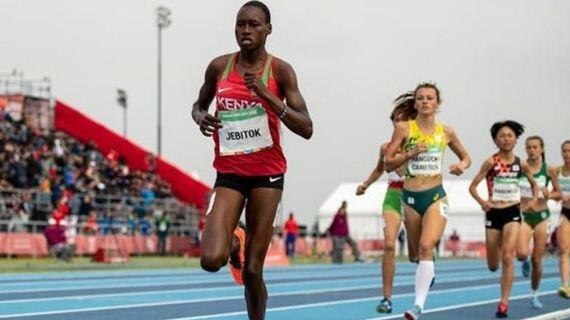
Jebitok clocked four minutes and 13.84 seconds as Ciara Mageean won the heat one in 4:13.52.
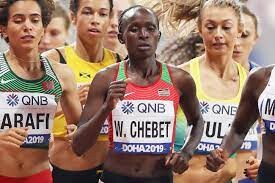
Australia Abbey Caldwell came third in 4:13.59 to also qualify.
Chebet timed 4:16.11 to finish third behind Winnie Nanyondo from Uganda and Briton Katie Snowden in 4:16.04 and 4:16.09 respectively.
(08/05/2022) ⚡AMPby Ayumba Ayodi
The Commonwealth Games
The Commonwealth Games are coming to Victoria - bringing an action packed sports program to our regional cities and delivering a long-term legacy for our future. From 17 to 29 March 2026, Geelong, Bendigo, Ballarat, Gippsland and Shepparton will be on the world stage, attracting millions of viewers and creating thousands of jobs. The multi-city model will...
more...How much rest should you take between intervals?, The time of your rest between reps is just as important as the interval itself
Runners rely on interval training as one of the most effective ways to build speed and endurance. The thing about high-intensity interval training is that you can only do it for so long before you hit a wall or have to stop due to the build-up of lactic acid or fatigue in your muscles. When working out at high intensity, the active interval has to go hand and hand with the rest interval to help you get the most out of your performance.
How long should your rest be between intervals?
There are a few ways you can structure your interval workouts: You can keep the interval short with very high intensity and the rest periods long or keep the rest and interval phases roughly equal or do longer intervals with shorter rest to improve your aerobic capacity. What is the best way to structure your training? Or does it not matter?
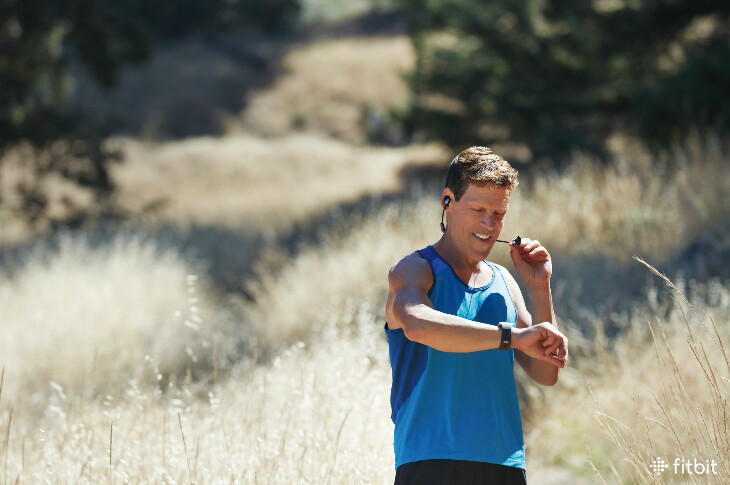
A study published in the Journal of Strength and Conditioning looked at this issue. The researchers asked six people to run on a treadmill as fast as they could for four minutes with various rest periods between. The study found that the rest depends on your training goals and what you’re looking to improve.
Reducing the rest interval from two minutes to one minute made it difficult for the six runners to maintain the same intensity during the high-intensity intervals. Another interesting observation was that the rest interval of four minutes did not improve performance any more than the previous two-minute recovery period.
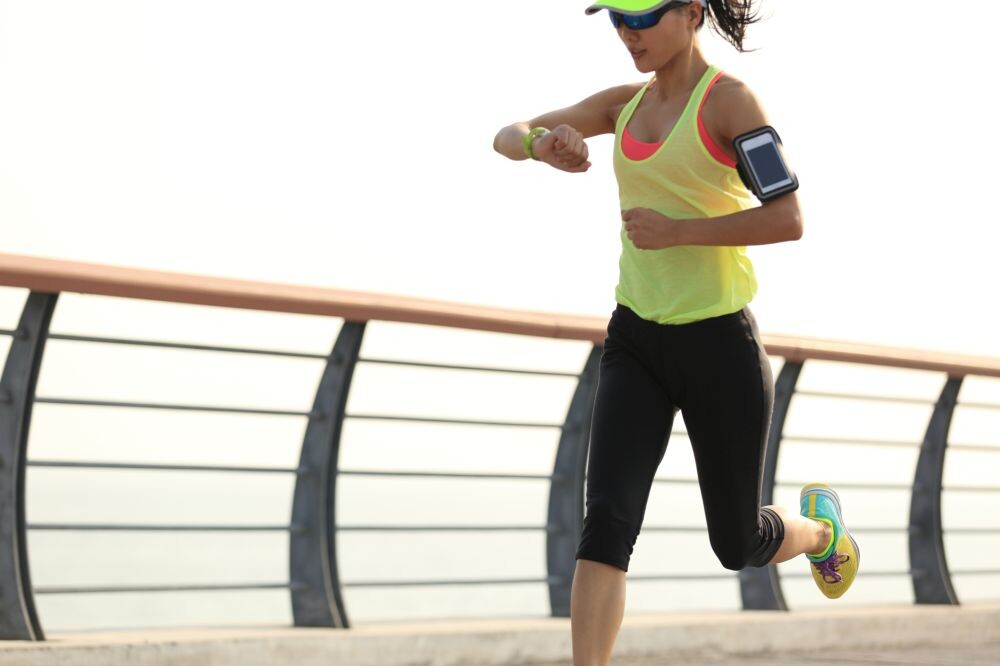
Regardless of this study, there is no single right or wrong way to structure interval training, but it does depend on what you are trying to achieve. If your goal is to improve your aerobic capacity, longer active intervals of two to five minutes and roughly equal recovery periods seem to work best.
But if you want to improve your top-end speed or anaerobic levels – 30 seconds to two minutes of rest is prescribed for those who want to run at a higher intensity for longer or faster.
(08/05/2022) ⚡AMPby Marley Dickinson
Boniface Mweresa anchors Kenya to 4x400m Commonwealth Games final
The 2015 African Games 400m silver medalist Boniface Mweresa anchored Kenya’s 4x400m to victory in their heat to storm the final in athletics at the ongoing Commonwealth Games at the Alexander Stadium.
Team Kenya head coach Julius Kirwa was forced to make changes at the last minute when Olympic and world 800m champion Emmanuel Korir, who was to compete, went missing.
Mweresa rallied from three places behind, taking down India Trinidad and Tobago to win heat two in season’s best three minutes and 06.76 seconds.
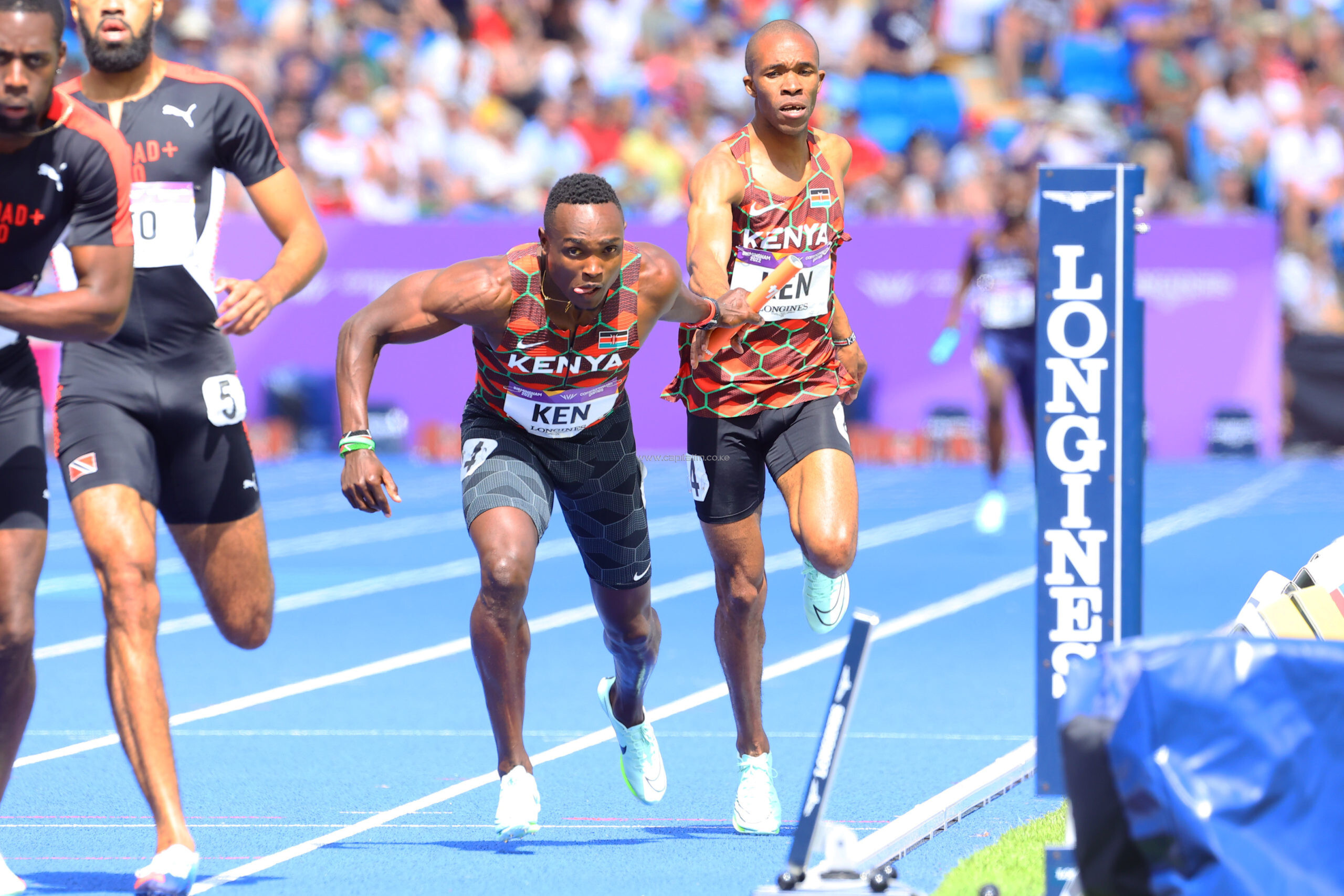
India settled second in 3:06.97 as Trinidad and Tobago came third in 3:07.22.
Defending champions Botswana won heat one in 3:05.11, beating Jamaica and Zambia to second and third places in 3:05.20 and 3:06.02 respectively.
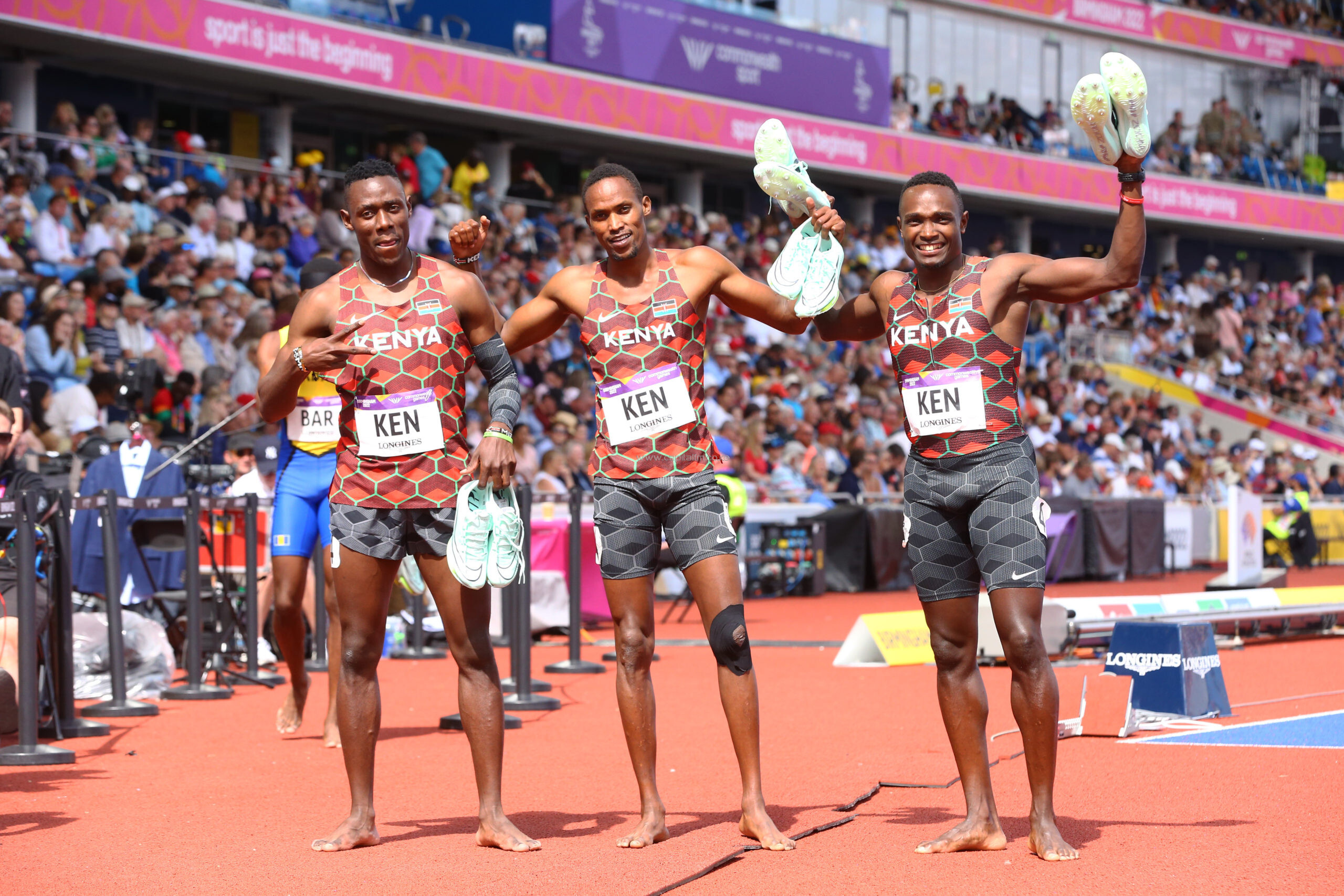
It’s Wiseman Were who was the first man on the blocks to hand over the baton to William Rayan in third place before he stepped up, handing over the baton to William Mbevi in second place.
Mbevi fell back one place in the last changeover to Mweresa, who injected in some pace to swing to the lead at the last bend before winning.
The quartet of David Kitur, Samson Kitur, Simeon Kipkemboi and Stephen Mwanzia is the last to win the 4x400m title for Kenya during the 1990 Auckland Games in New Zealand.
Kenya had won three 4x400m titles back-to-back starting with the inaugural Edinburgh Games in Scotland before the 1974 Christchurch, New Zealand and 1978 Edmonton, Canada Games.
After the 1990 exploits, Kenya has only claimed one medal from the Games since then, the silver medal from the 2010 Delhi Games, India.
“We took it easy just to put our foot in the final before planning how we shall pitch for a medal. We hope that medal will be gold,” said Rayan. “We are really prepared and ready for the final.”
Rayan said staying focused and having a settled mind will deliver victory for Kenya.
Mbevi, who fell at the exchange was wheeled out of the arena for medical attention.
"I am not in a position to tell you where Korir went. We have been looking for him but couldn't locate him," said Kirwa.
However, Korir, who won his 400m heat but got disqualified for lane infringement, is drawn in the men's 800m final at the Silesia leg of the Diamond League on Saturday in Poland.
(08/05/2022) ⚡AMPThe Commonwealth Games
The Commonwealth Games are coming to Victoria - bringing an action packed sports program to our regional cities and delivering a long-term legacy for our future. From 17 to 29 March 2026, Geelong, Bendigo, Ballarat, Gippsland and Shepparton will be on the world stage, attracting millions of viewers and creating thousands of jobs. The multi-city model will...
more...How do you train for a marathon to ensure you make it to the finish line?
Around 17% of runners who sign up for a marathon do not finish – whether it’s because they don’t show up or don’t make it to the finish line. Falling short can devastate your pride when you set a goal as big as a marathon.
So, how do you train for a marathon to ensure you make it to the finish line?
First, you must prepare and ensure you’re in an excellent position to run a marathon. Keep reading to learn about the top considerations for marathon runners before planning their training regimen.

Evaluating Your Schedule
A marathon is a serious undertaking; it takes a lot of time and effort to get your body into shape and ready for the big day. Before you commit to running a marathon, you must take a realistic look at your schedule. Do you have time to train for the marathon?
If you have existing hobbies and interests that usually fill up your free time, you can consider placing them on pause to allocate time for your training schedule. Or, you can split your time between your training regimen and your current hobbies. Either way, it’s essential to create time for training – you won’t reach the finish line if you haven’t trained rigorously for the event.
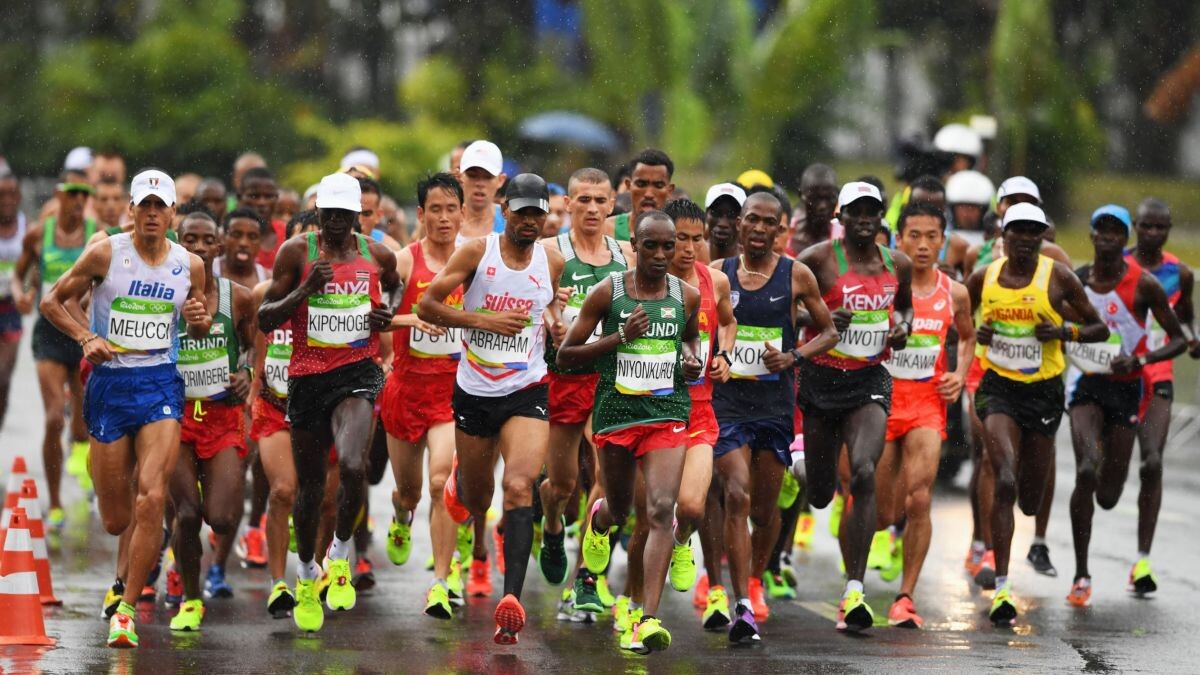
Getting Familiar With Your Body And Health
A marathon requires discipline, but you must ensure your body is healthy enough to participate. Before signing up for the marathon, you must understand your body’s limitations. If you do not exercise regularly and have a poor diet, reaching the fitness level required to run a marathon in the set time frame could be difficult. Take a realistic look at your fitness level and whether you’re in an excellent position to train for a marathon.
Certain health conditions, such as a heart condition, could be contraindications that make you unfit to run a marathon. You should consult your doctor before signing up for a marathon and have a physical exam performed to determine whether you have any underlying conditions that could affect your ability to run a marathon. You should also ask your doctor about the best diet regimen to help you get leaner muscle, which is ideal for running.
Avoiding Large Gatherings
As your marathon race approaches, you must ensure you don’t get set back by any illness or injury. In light of the recent pandemic, it’s best to avoid large gatherings, which could be a hub for the spread of coronavirus.
If you contract coronavirus, you could be sick for up to a week, which will seriously affect your ability to train and would be detrimental to your performance on the big day. Not to mention, if you test positive for coronavirus around the marathon date, you may not even be able to participate – which would mean all your training has been for nothing.
Selecting A Gym That Suits Your Needs
Let’s get down to training. You should run outdoors to gather endurance and practice pacing. Cold weather and pavement can damage your joints. So, it’s best to train for your marathon indoors during the colder months, and you should select a gym to perform your training.
Plus, at a gym, you gain access to rollers for stretching, and you can measure your progress more accurately using the built-in features on the machines. Below are some of the best features to look for in a gym for your marathon training.
24/7 Access
You need a gym that fits your schedule. If you work late shifts, you may wish to train in the late evening after you finish work. If your gym is only open from 9-9, that may not be possible. Selecting a gym with 24/7 access will give you more opportunities to train frequently.
Gyms that provide 24/7 access can do so using hygiene-based technology. If you need to enter a code to get inside, you will be touching buttons and keys that are hubs for germs – and, as we mentioned earlier, you can’t afford to get sick and skip your training.
So, look for a gym with hygienic contactless access control that allows you to enter touchless. With a keyless building entry system, you can simply wave your hand over the reader, which will trigger communication with your mobile device to confirm your mobile credentials and gain entry. You don’t need to remember a fob or keycard – you can simply download access credentials to your mobile phone.
Amenities
You’ll need a few amenities in your gym to get your performance up to scratch. A sauna can increase your exhaustion rate by 30% and improve your run performance. Of course, you’ll also need a gym with plenty of treadmills to ensure you always have access to running equipment.
You need to run around 50 miles weekly to ensure your fitness level is up to scratch, and you must leave yourself at least 12 weeks to train. Though training is essential for a marathon, you must also ensure you’re resting and rehabilitating your body with stretching. Look for a gym with plenty of stretching equipment. You may also consider looking for a gym with yoga classes and spa facilities. You can improve your balance, flexibility, and core strength on rest days and soak your muscles in a jacuzzi to stimulate recovery.
Summary
Suppose you’re thinking of participating in a marathon – good for you! It’s a great way to reach peak fitness levels and keep your body young. However, you’ll need to take your training seriously to ensure you perform well on the big day. So, sign up for a gym, consult your doctor, make room in your schedule, and get training!
(08/05/2022) ⚡AMPby Colorado Runner
Thompson-Herah and Omanyala take 100 meter golds
Elaine Thompson-Herah, the only one of Jamaica's "Big Three" women to show up at the Commonwealth Games, was rewarded with the 100 meters gold medal on Wednesday, while Kenya's Ferdinand Omanyala powered to the men's title.
Thompson-Herah, twice the 100/200m sprint champion at the Olympics, finished third in last month's World Championship 100 final behind Shericka Jackson and Shelly-Ann Fraser-Pryce. She was originally only a reserve for the Commonwealths but when Fraser-Pryce opted out, she stepped in.
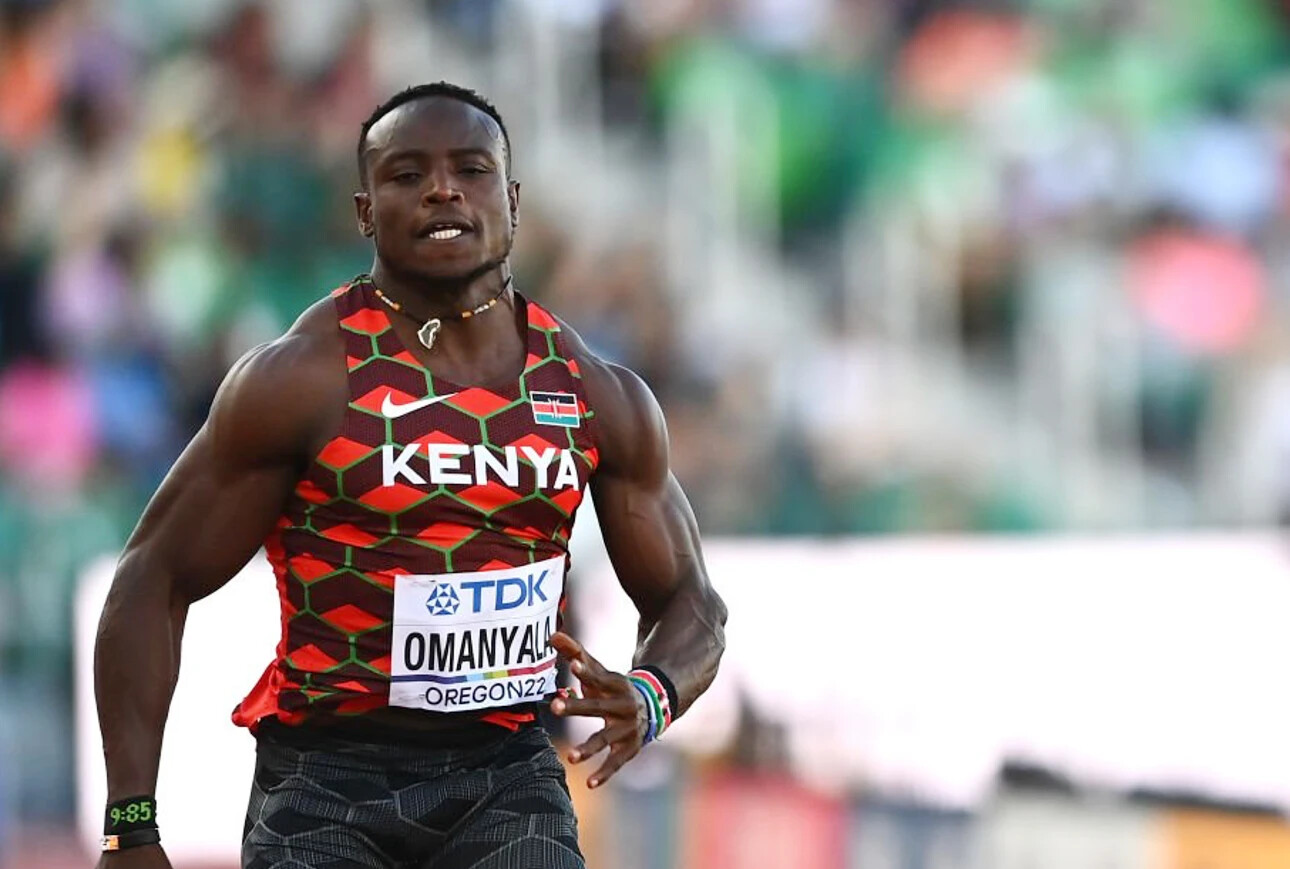
With Dina-Asher Smith, fourth in Eugene, also absent through injury, Thompson-Herah was the clear favorite for her first individual Commonwealth title.
She had looked a little tired in her semi-final but grabbed the early lead in the final and ran her usual smooth race to finish a comfortable winner in 10.95 seconds.
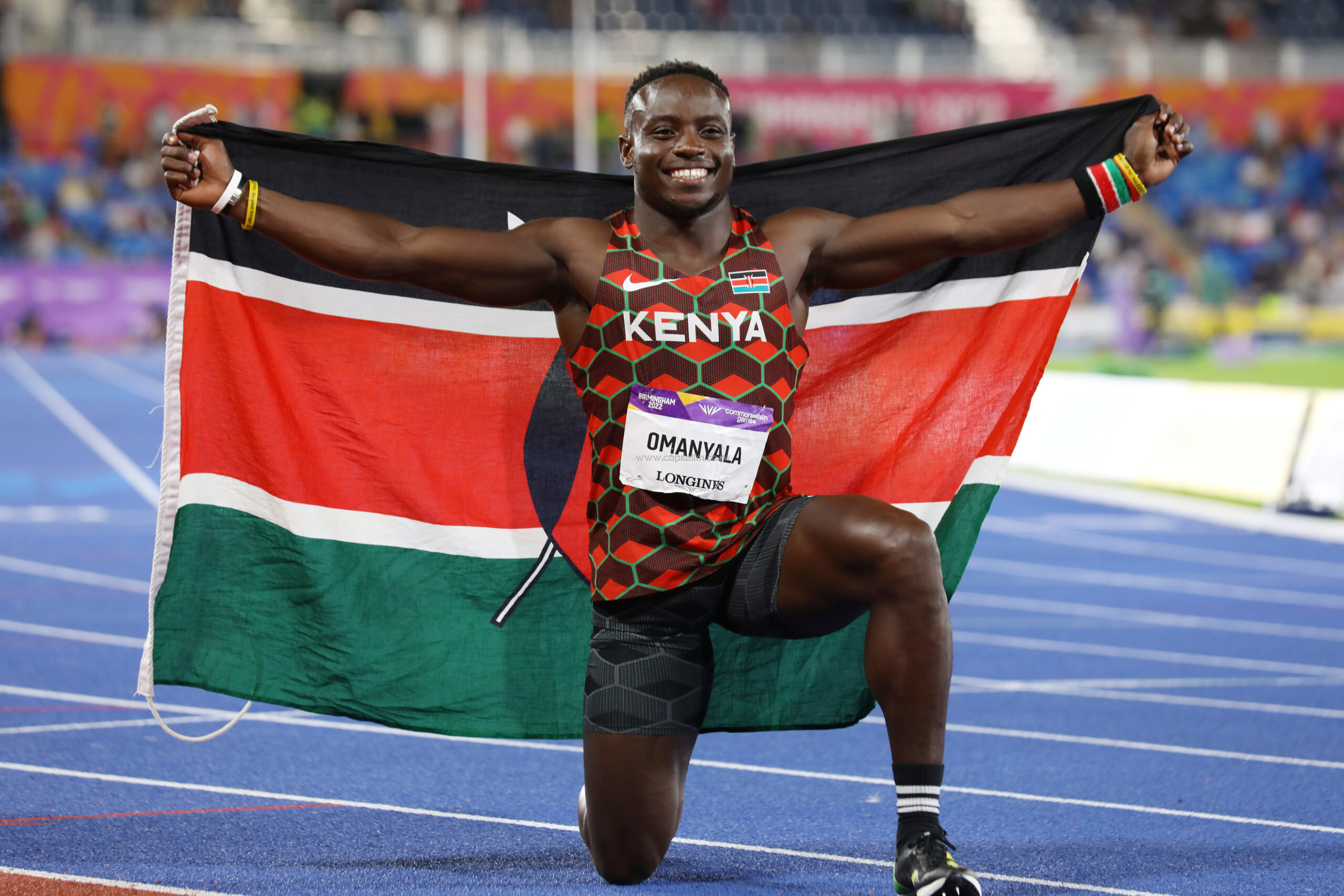
"Feeling good, I didn't have the best execution but nevertheless I had to dig for that one but I am still grateful to win my first Commonwealth Games," she said.
"I started in 2014 in the 4x100m. Then in 2018 in the 200m I came fourth and now I upgraded to a gold."
Saint Lucia’s Julien Alfred was on her shoulder throughout for silver in 11.01 while England’s Daryll Neita recovered well from a terrible start to grab bronze in 11.07.
Omanyala, who set an African record of 9.77 seconds last year, served a 14 month doping ban four years ago. He failed to make the final at last month's World Championships after arriving in the United States hours before the heats due to visa problems.
Impressive in the semi-final he looked the favourite on Wednesday and duly controlled the final from gun to tape, flying out of the blocks and surging clear and looking more like a barrelling rugby prop than a sprinter to win in 10.02 seconds.
He is the second Kenyan to take the title after Seraphino Antao in 1962, when the event was still run over 100 yards.
South Africa's defending champion Akani Simbine took silver in 10.13 with Yupun Abeykoon from Sri Lanka getting the bronze in 10.14.
(08/04/2022) ⚡AMPThe Commonwealth Games
The Commonwealth Games are coming to Victoria - bringing an action packed sports program to our regional cities and delivering a long-term legacy for our future. From 17 to 29 March 2026, Geelong, Bendigo, Ballarat, Gippsland and Shepparton will be on the world stage, attracting millions of viewers and creating thousands of jobs. The multi-city model will...
more...Eilish McColgan wins Commonwealth gold in a dazzling record performance
Scotland’s Eilish McColgan ran the race of her lifetime to win Commonwealth Games gold in the women’s 10,000m with her coach and mom Liz McColgan watching on (second photo). She ran a Commonwealth Games record of 30:48.60 to follow in the footsteps of her mother 32 years ago.
McColgan took the lead early on and began to inject some speed into the race after 6,000m. Irine Cheptai of Kenya followed suit, with the two athletes battling over the final 2,000m, surging back and forth. Cheptai put on a surge with two laps to go and McColgan held on. With 200 meters to go, the two were stride for stride, then McColgan pulled ahead, achieving glory in front of a (near) home crowd.
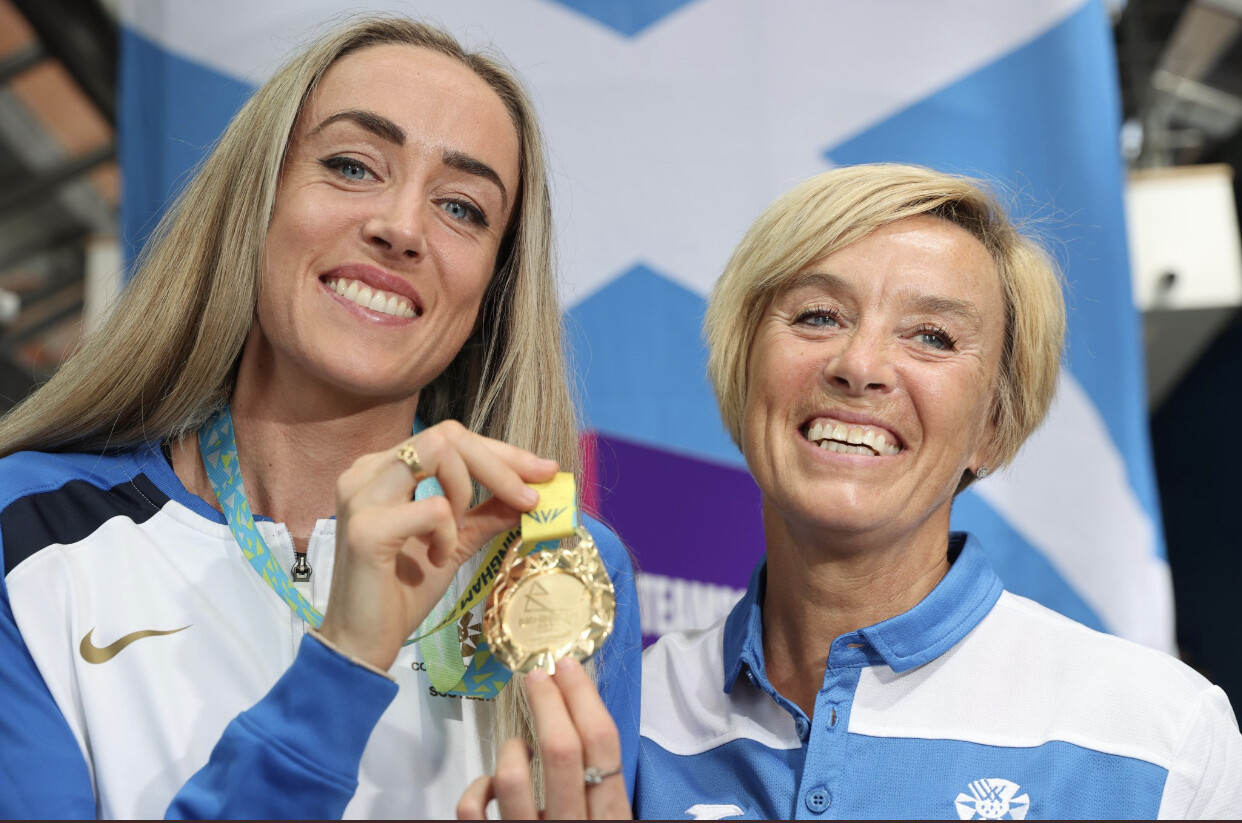
The sold-out crowd of 32,000 at Birmingham’s Alexander Stadium roared as McColgan sprinted to her first gold medal at an international competition. She ran straight to her the arms of her mother, Liz, where the two shed tears of joy and triumph, while wrapped in the Scottish flag.
Cheptai, the 2017 world cross country champion, won the silver in 30:49.52 and her compatriot Sheila Kiprotich won bronze in 31:09.46.
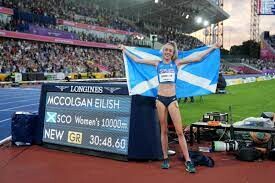
This gold medal is a story of redemption for McColgan, who caught COVID-19 only weeks before her race at the 2022 World Championships last month.
The 31-year-old from Dundee, Scotland has previously won silver and bronze at the European Championships over 3,000 and 5,000m. She currently holds the British record over 5,000m, 5K, 10K and the half marathon.
McColgan will now shift her focus to training for London Marathon this October, where she hopes to become the first woman from Scotland to win the race since her mother did it 26 years ago.
(08/04/2022) ⚡AMPby Marley Dickinson
The Commonwealth Games
The Commonwealth Games are coming to Victoria - bringing an action packed sports program to our regional cities and delivering a long-term legacy for our future. From 17 to 29 March 2026, Geelong, Bendigo, Ballarat, Gippsland and Shepparton will be on the world stage, attracting millions of viewers and creating thousands of jobs. The multi-city model will...
more...Chase your personal best with this broken interval 5K workout
Sick and tired of doing one-kilometer reps? Try this broken interval workout to improve your lactate threshold
Although one-kilometer repeats can be the best judgment of where you are in your 5K training, running them over and over again can get boring. There are several ways you can add a little zing to your repeats by breaking up the interval or changing the speed.
The broken kilometer workout is designed to get you more comfortable and confident with your goal 5K pace and improve your lactate threshold.
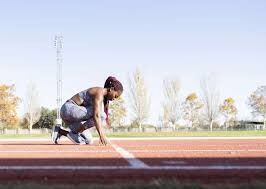
When running at a fast pace, your muscles use lactate as a source of energy. The longer and faster you run, the more lactate your muscles produce and use. The goal of interval training is to build up your lactate threshold, so it can be cleared as quickly as it is produced. Having a higher lactate threshold can help your muscles work efficiently at a faster pace.
The broken kilometer workout alternates between 600 and 400 meters at 5K race pace, separated by a short rest between intervals and a slightly longer rest between sets.
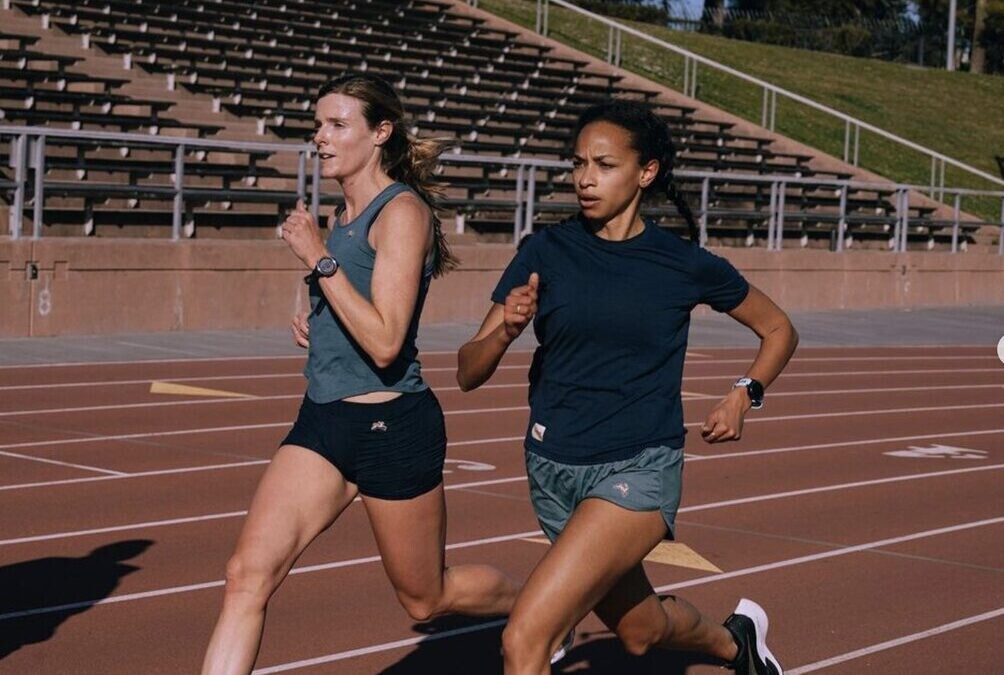
The workout:
Six sets of 600m/400m with 200m jog rest between reps and two minutes slow jog rest between sets.
There are two or three ways to do this workout. Firstly, it can be done on an athletics track to precisely measure the distance and your rest. Another way of doing this workout is by finding a 1,200m loop and setting markers along the way.
If you do not have access to a track or a 1,200m loop, make modifications and do six reps of three minutes/90 seconds with one-minute jog rest between reps and two minutes jog rest between sets.
The pace of each rep should be done at your goal 5K pace or slightly faster. If your goal is to break 20:00 minutes, do the reps at 3:55 to 3:58/km. The short active rest between reps will develop your lactate threshold, preparing your muscles for race day.
(08/04/2022) ⚡AMPby Running Magazine
Botswana sprinter Letsile Tebogo could be the next Usain Bolt
On Tuesday evening, Botswana’s rising sprint star Letsile Tebogo smashed his U20 world record, clocking 9.91 seconds in the 100m final at the U20 World Athletics Championships in Cali, Colombia. The 19-year-old could have gone faster but celebrated over the final 30 metres on his way to his second straight U20 gold.
This is the third time Tebogo has broken the world U20 100m record this season. Tebogo ran a personal best time of 9.94 seconds in the 100m heats at the 2022 World Athletics Championships in Eugene to set a Botswanan national record and U20 record. He made it to the semi-finals at his first senior championship but did not qualify for the final in Oregon.
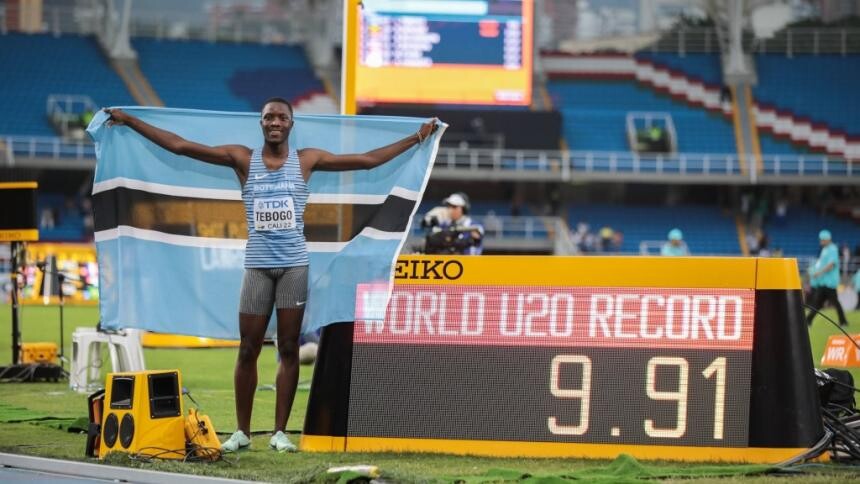
Many have compared Tebogo to the Jamaican track legend Usain Bolt, who celebrated early when he won the first of eight Olympic gold medals at the 2008 Beijing Olympics, where he ran a world record time of 9.69 seconds before breaking it the following year in Berlin in 9.58 seconds.
After Tebogo won gold, he addressed his early celebration in the mixed media zone. “The goal was to come out and enjoy the race,” said Tebogo. “If somebody took offence or as disrespect, I’m sorry.”
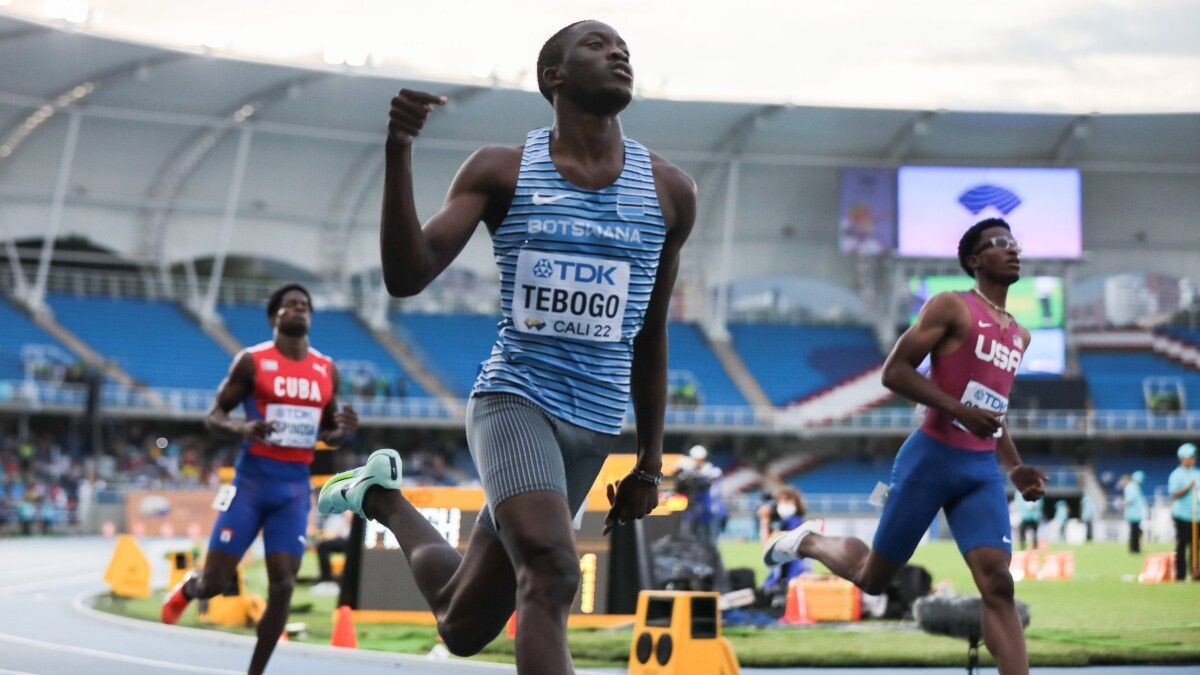
Track fans online speculated that Tebogo could have posted a time in the 9.70 to 9.80 range if he didn’t celebrate.
The intention of his celebration wanted to remind everyone of what Usain Bolt did back in the day. “He is my idol, the person I look up to,” Tebogo said.
(08/04/2022) ⚡AMPby Marley Dickinson
Elevate your long run with these workouts
Along run of some kind is on most runners’ weekly schedules. Whether you’re training for a marathon or hoping for a 10K PB, long runs improve running economy and fat-burning efficiency, increase stamina, and strengthen muscles and connective tissue.
Even the most enthusiastic runner can find their long run gets tedious on occasion. Try one of these variations to add some spice to your endurance session this weekend.
Long run fartlek
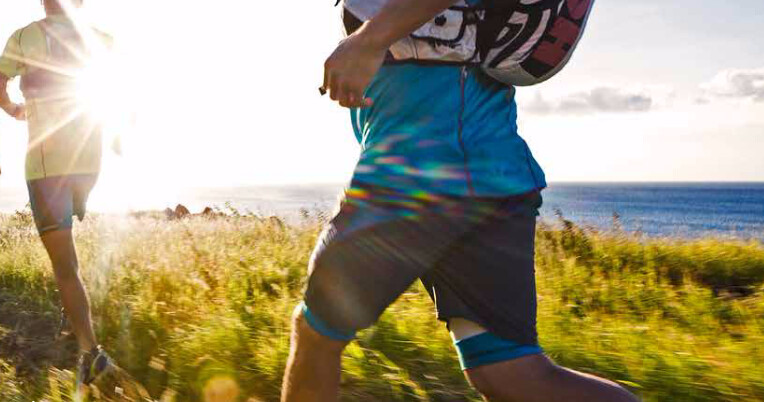
Break up the monotony of a slow, steady long run by incorporating a fartlek workout. Fartlek is a Swedish word meaning speed play, and a fartlek session involves a continuous run in which periods of faster running are mixed with periods of easy or moderately paced running.
The workout
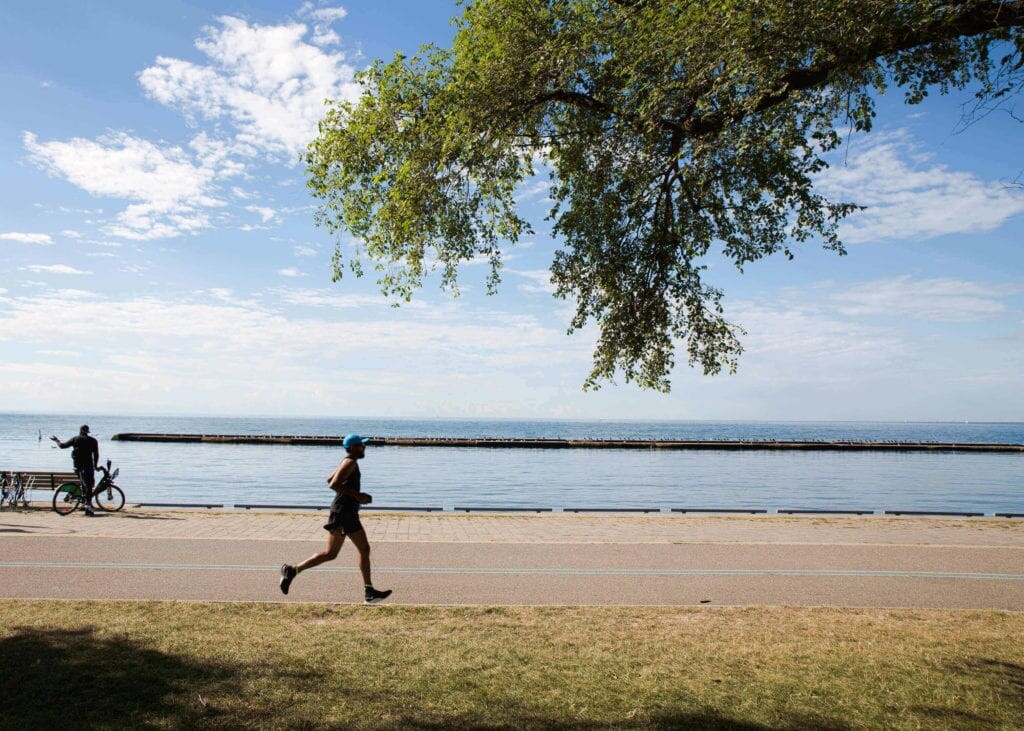
Run for 20 minutes at a very easy pace
Gradually speed up to about 30 seconds per km slower than your marathon goal pace (if marathon pace is 6:00/km, increase pace to 6:30/km)
After the 60-minute mark, do the first 20 to 60 seconds of each remaining km up to 30 seconds per km faster than marathon pace (if marathon pace is 6:00/km, increase up to 5:30/km)
Feel free to adjust your effort if you’re training for a shorter distance or not as familiar with marathon pace. The purpose of turning your long run into a fartlek is simply to add some variety and challenge. As long as you keep the majority of your run conservative, have fun with the fartlek portion.
Surge long run
It takes focus and determination to increase your speed towards the end of a long run. You’ll also be recruiting fast-twitch muscle fibers, and teaching them to kick in even at slower paces. Surges, sometimes called strides or accelerations, are smooth, continuous increases in pace.
The workout
Run for 40 to 60 minutes at a very easy pace–or about 90 per cent of your long run, whatever duration that may be.
In the last few km of your run, add five 30-second surges, with two minutes of easy running between each one.
Keep the surges comfortably hard, but not a flat-out sprint.
Tempo long run
If the marathon is your goal, you might be familiar with the challenge of staying strong in the last 10 km of the race after already running for hours. This hard tempo (think comfortably-hard pace) workout helps prepare you. Insert it instead of your regular long run once or twice before your big race.
The workout
Run at a very easy pace for 5K
Run two to three kilometres at tempo, or comfortably hard pace
Run at an easy pace for 30 minutes
Repeat two to three kilometers at tempo pace
Run the remainder of your distance at a very easy pace
Remember to hydrate well during your longer runs, being especially mindful of how much water you are taking in when it’s warm out. The day following a long run should be an easy running day or rest day.
(08/04/2022) ⚡AMPby Keeley Milne
Ugandan Jacob Kiplimo wins 10,000m gold at Commonwealth games
Kenya once again fell short of recapturing the men's 10,000m title at the Commonwealth Games as Uganda's Jacob Kiplimo won in a Championship Record time at the Alexander Stadium on Tuesday.
Kenyans Daniel Simiu and World Half Marathon silver medalist Kibiwott Kandie settled for silver and bronze medals respectively.
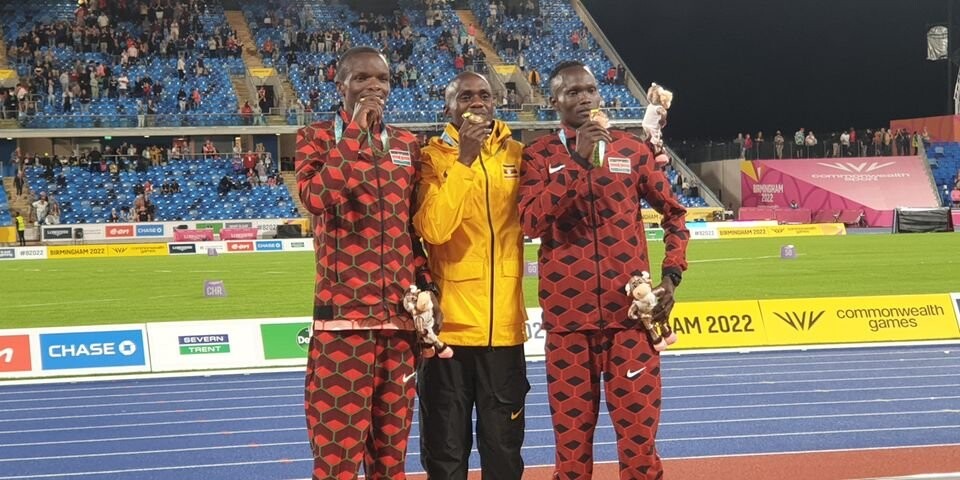
Kiplimo clocked 27 minutes and 09.19 seconds to win as Uganda upheld their dominance, winning for the fifth consecutive time.
Simiu and Kandie returned personal best times of 27:11.26 and 27:20.34 respectively.
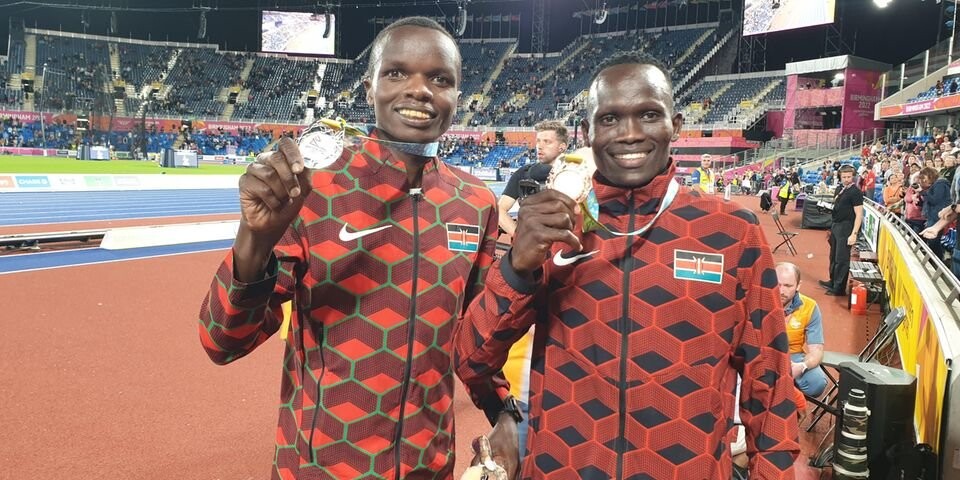
Wilberforce Talel is the last Kenyan to win the 10,000m title at the 'Club Games'.
Kiplimo is the fifth consecutive Ugandan to win the title. Simui and Kandie might have were happy to pull through with career best times.
“We had great team work but I guess Kiplimo’s good finishing kick was superior,” Simiu said.
“I tried to summon the rest with two laps to go but Kandie and Zakayo had drifted back.”
Simiu said he decided to hit the front with some energy left after the bell but it failed to work.
The victory by Kiplimo, the World Half Marathon champion, made the “Club” Games a family after his cousin Victor Kiplangat won men’s marathon on Saturday.
“My body simply failed to react. I knew I would best Kiplimo is the last two laps but I simply couldn’t move,” said Kandie. “I came here with the intentions of winning but at times it becomes difficult to explain some situations.”
Simiu and Kandie now turn their focus to next year's World Championships in Budapest, Hungary, having hit the qualifying times at the Commonwealth Games.
Kiplimo said he knew he had the gold medal when he went into the last two laps with the Kenyans.
"I am a good finisher and the race played well into my hands," said Kiplimo, who hopes to double up in the 5,000m.
(08/03/2022) ⚡AMPby Ayumba Ayodi
The Commonwealth Games
The Commonwealth Games are coming to Victoria - bringing an action packed sports program to our regional cities and delivering a long-term legacy for our future. From 17 to 29 March 2026, Geelong, Bendigo, Ballarat, Gippsland and Shepparton will be on the world stage, attracting millions of viewers and creating thousands of jobs. The multi-city model will...
more...British athlete Lina Nielsen makes her debut at the Comonwealth Games this week and she has bravely revealed her multiple sclerosis diagnosis
Jessica Ennis-Hill has led the chorus of support for Lina Nielsen after the 400-meter hurdler revealed she has multiple sclerosis.
Nielsen makes her Commonwealth Games debut for England on Thursday - 10 years to the day since Ennis-Hill was star of Super Saturday at the London 2012 Olympics.

She lines up revealing that the MS she first experienced at the age of 13, and which remained dormant for years, flared up last week, ruining her World Championship hopes.
“The only reason I share it is that I hope it holds the power to inspire many,” said Lina, whose identical twin Laviai also competes for Britain.

“And to give an understanding into the idea that sometimes you might never know what some athletes truly face before the start line.”
Ennis-Hill posted: “I have so much admiration for this incredible woman!
“@linaruns you continue to amaze me with all you have achieved on and off the track and the genuinely lovely person you are!
“Thank you for telling your story. We’ll all be cheering you on as always.” Aided by a course of anti-inflammatory corticosteroids the 26-year old's symptoms have subsided and she has been able to return to the track.
(08/03/2022) ⚡AMPby Alex Spink
The Commonwealth Games
The Commonwealth Games are coming to Victoria - bringing an action packed sports program to our regional cities and delivering a long-term legacy for our future. From 17 to 29 March 2026, Geelong, Bendigo, Ballarat, Gippsland and Shepparton will be on the world stage, attracting millions of viewers and creating thousands of jobs. The multi-city model will...
more...Shalane Flanagan takes coaching role at University of Oregon
U.S. Olympic medallist and 2017 New York City Marathon champion Shalane Flanagan announced on her social media that she’ll be joining the University of Oregon coaching staff as an assistant coach to help lead the team’s distance program.
Since 2019, Flanagan has been an assistant coach for the Nike Bowerman Track Club alongside Jerry Schumacher, who was recently named head coach of Oregon’s track and field program.
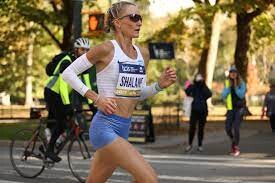
During her career and guidance, Flanagan has been part of the emergence of the Bowerman Track Club, which is considered one of the top running groups in North America.
Flanagan joined Bowerman Track Club in 2009 and made two U.S. Olympic teams in the marathon (2012 and 2016). In 2012, Flanagan finished 10th and in Rio 2016, she finished sixth in 2:25:26.
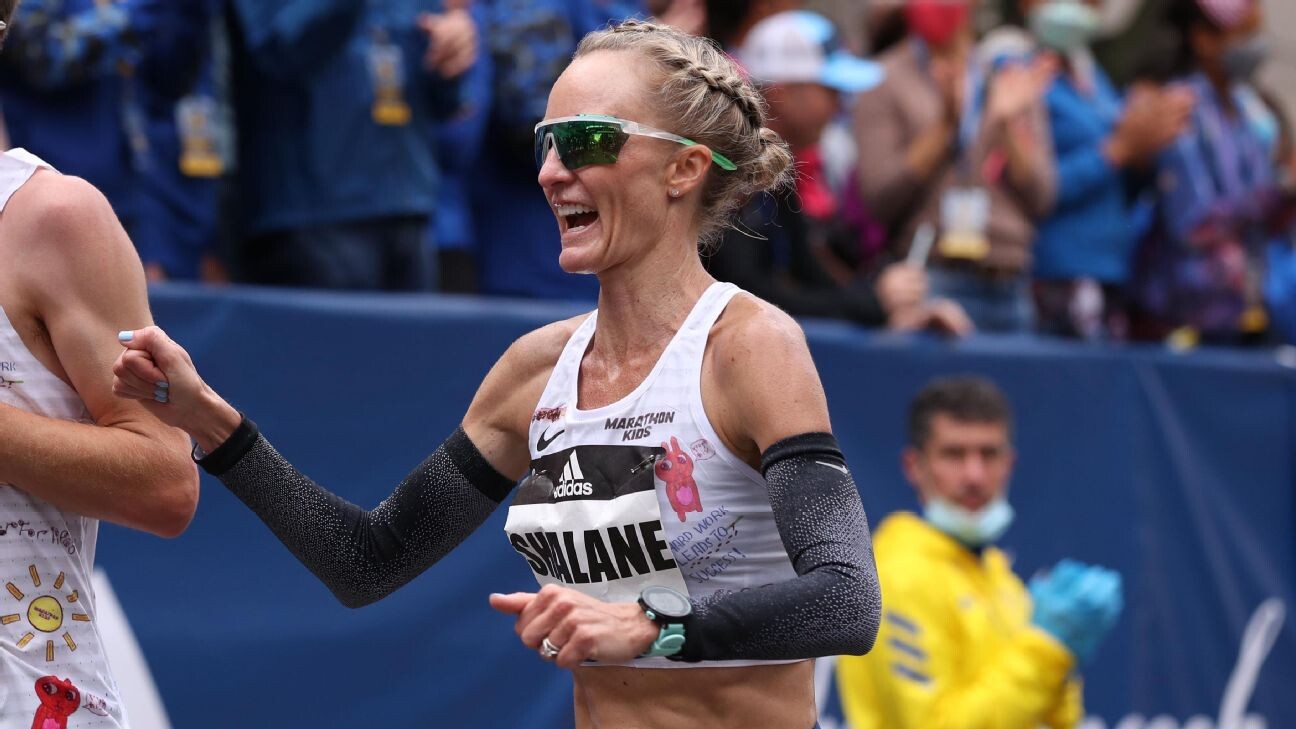
In 2017, Flanagan ended a 40-year winless drought for American women at the New York City Marathon by winning the prestigious event.
Flanagan made her Olympic debut in 2004 when she was 23, and returned in 2008 to win a silver medal in the 10,000m. Flanagan also has a bronze medal to her credit from the 2011 IAAF World Cross Country Championships in Spain.
Flanagan, now 41, is an 18-time U.S. champion with six titles in each discipline (track, road and XC). She won two of her 18 titles at the Historic Hayward Field in Eugene, Ore, which is the training ground for the University of Oregon track and field program.
In 2019, she announced her retirement from running but then paused her retirement in 2021 to complete all six Abbott Marathon Majors in seven weeks. She ended up finishing all six races in under three hours.
(08/03/2022) ⚡AMPby Marley Dickinson
Crush your half marathon goals with these workouts, you'll nail the balance of endurance and speed needed on race day
It’s racing season, and every sunny weekend seems like an opportunity to jump into (or train for) a fun event. If the half marathon is your jam, try these workouts to finesse the unique balance of endurance and speed that the distance requires.
Fatigue resistance repeats
Running some fast intervals after a tempo session can be an effective way to mimic maintaining that goal pace when you feel those slightly heavy mid-race legs.

10 minutes easy running to warm up
25-30 minutes at a pace you can maintain for one hour
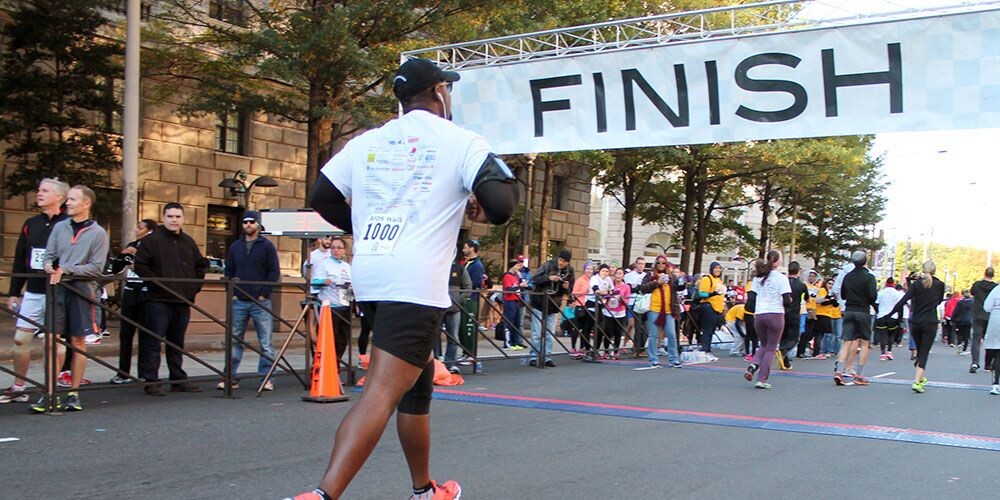
3-4 minutes recovery running
5 x 1 minute hard/1 minute easy
10 minutes easy running to cool down
Master the mile
Threshold pace intervals (roughly around a 10K race pace) are perfect training for the half marathon distance. On race day, you’ll have the stamina to maintain that tough, slightly below-threshold pace for the entire distance.
10-15 minutes easy running
4-5 x 1 mile (1,600m) at 10K race pace, with one minute of easy recovery between each repeat
10-15 minutes easy running
Practice the pace
Half marathon pace workouts should generally only be done a few times, close to race day (but before taper-time). You’ll gain familiarity with running at that perfect speed and add a confidence boost before the big event.
15 minutes easy running
3-4 x 3.5 km at half marathon pace, with 1 km easy recovery running between repeats
10 minutes easy running
Follow a speedwork session with an easy running or rest day, and hydrate well, especially in the summer heat.
(08/03/2022) ⚡AMPby Running Magazine
Canadian Malindi Elmore will race TCS Toronto Waterfront Marathon
The fastest Canadian female marathoner in history will be racing on Canadian soil this fall. Malindi Elmore has announced that she will be running the 2022 TCS Toronto Waterfront Marathon on Oct. 16.
Enticed by the opportunity to lower her Canadian record, she is attracted to the fast and flat course on home soil. Elmore set the Canadian record with her 2:24:50 clocking at the 2020 Houston Marathon in what was only her second marathon.
“I definitely feel I haven’t had my best race yet,” Elmore said in a press release. “I think it’s going to line up with the perfect conditions to put together a fantastic build. That’s why I am excited to do Toronto.”
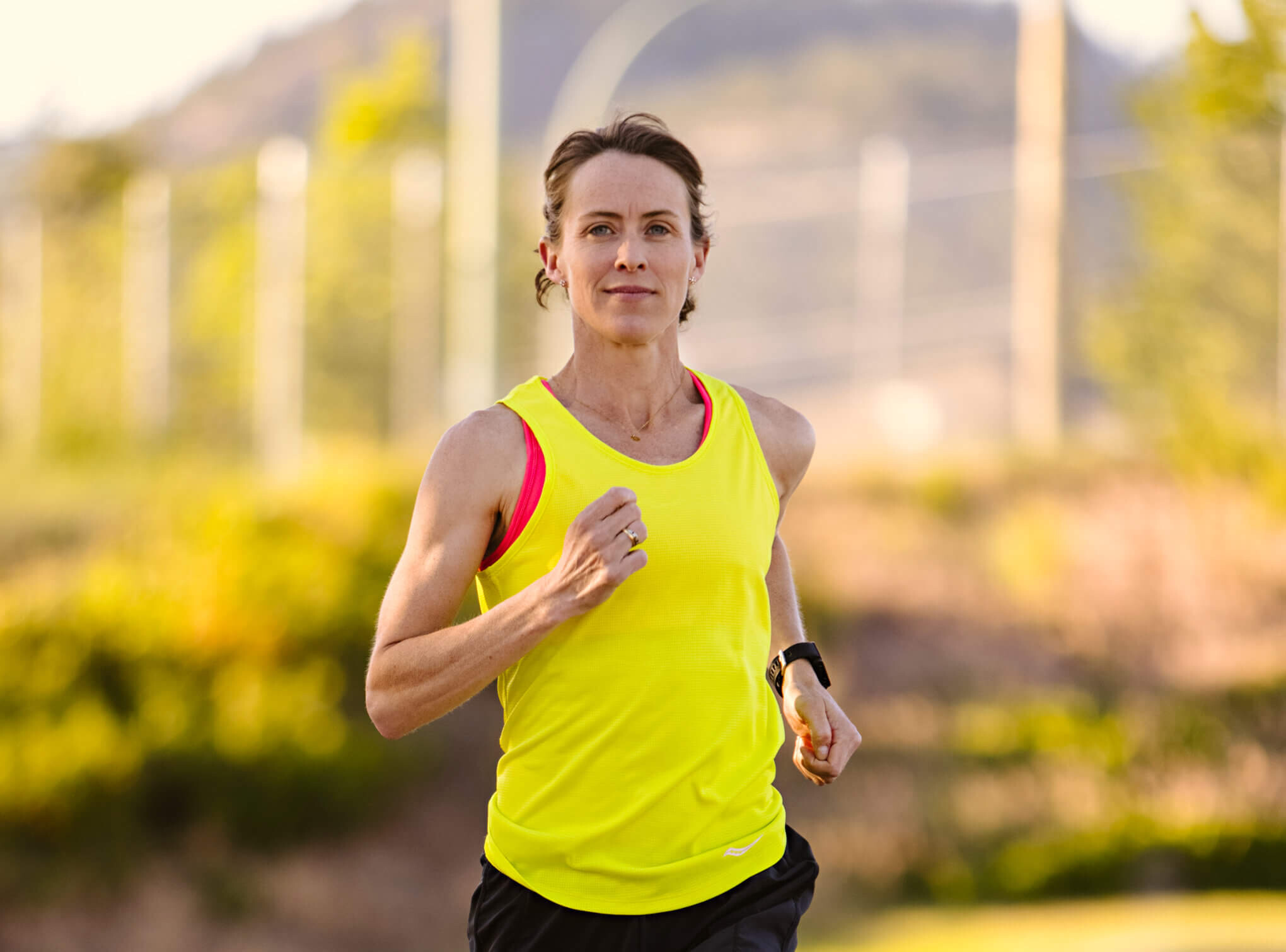
Although she lives and trains 5,000 kilometres away in Kelowna, Elmore knows that Toronto always attracts a high-calibre field. The TCS Toronto Waterfront Marathon has earned the distinguished World Athletics Elite Label, which puts the race alongside some of the world’s top marathons.
Elmore will not only have her eyes on achieving a personal best but also the Canadian women’s all-comers record of 2:22:16, held by Kenya’s Magdalyne Masai from the last time the marathon took place in 2019.
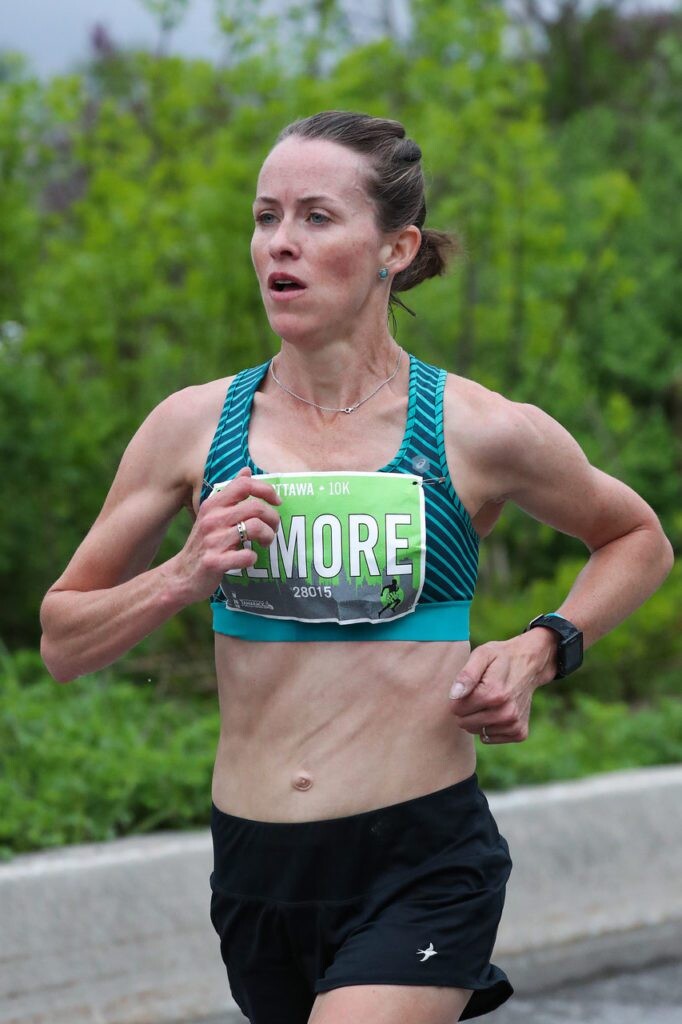
A year ago, Elmore finished ninth in the marathon at the Tokyo Olympic Games. Only Canada’s Sylvia Ruegger has finished higher in an Olympic marathon. She was eighth at the boycotted 1984 Olympics in Los Angeles.
“It was really special to finish in the top ten in the Olympics,” she said about her marathon achievement. She followed up her Olympic performance with an 11th place finish at the 2022 Boston Marathon in 2:27:58, which is the fastest time at Boston by a Canadian woman.
“I do want to put together a really good buildup for Toronto,” said Elmore. “I would like to be able to get to the fitness level I had leading into Boston and Tokyo (Sapporo), and I hope that would put me below my Canadian record and PB.”
“Another goal, absolutely, I want to get on the podium. I would love to win a race. It’s fun to be the first person across the line.”
Elmore has currently been training at 150 kilometres a week alone, although Canadian Olympic triathlete, Joanna Brown, has jumped in for long runs. Another training partner of Elmore’s is the 2019 Canadian marathon champion and Tokyo Olympian Trevor Hofbauer, who lives two kilometres away from Elmore, and runs with her on easy days.
Since 2017, the Toronto Waterfront Marathon has served as the Athletics Canada Marathon Championship and has doubled as the Olympic trials. During the 2021 event, participants raised over $3.08 million for 151 community charities.
(08/03/2022) ⚡AMPby Marley Dickinson
TCS Toronto Waterfront Marathon
The Scotiabank Toronto Waterfront Marathon, Half-Marathon & 5k Run / Walk is organized by Canada Running Series Inc., organizers of the Canada Running Series, "A selection of Canada's best runs!" Canada Running Series annually organizes eight events in Montreal, Toronto and Vancouver that vary in distance from the 5k to the marathon. The Scotiabank Toronto Waterfront Marathon and Half-Marathon are...
more...Omanyala, Imeta through to 100m semis at Commonwealth Games
Africa champion Ferdinand Omanyala clocked 10.07 seconds to win the fifth heat and sail through to the semi-finals of the men's 100m during the Commonwealth Games Athletics at the Alexander Stadium on Tuesday.
Omanyala edged out Eseme Emmanuel from Cameroon to second place in 10.08 with the latter also qualifying.
Omanyala declared that he is going for victory on Wednesday.
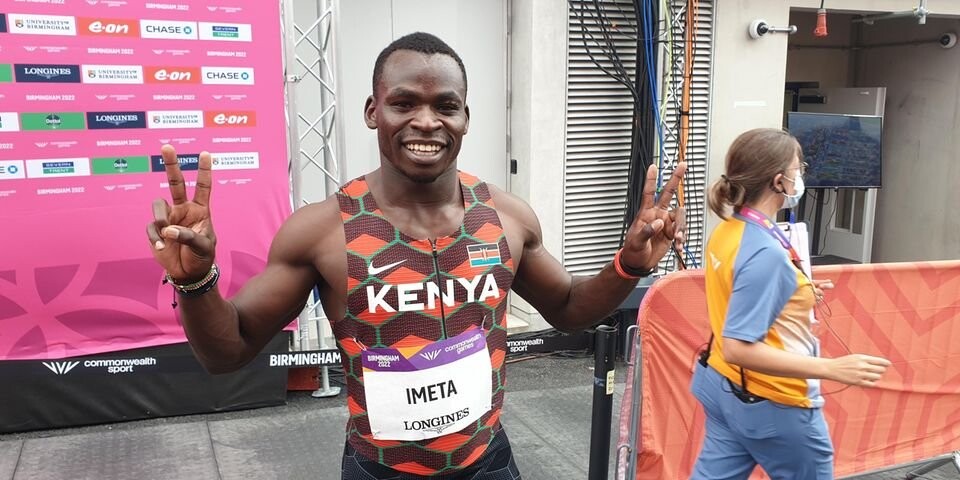
“My body feels fine hence I will be going for two sub 10 seconds and the title. The track is fine and fast, not the one that makes you lactic in the 100m,” said Omanyala.
“I am excited and looking forward to tomorrow to see what time I will clock.”
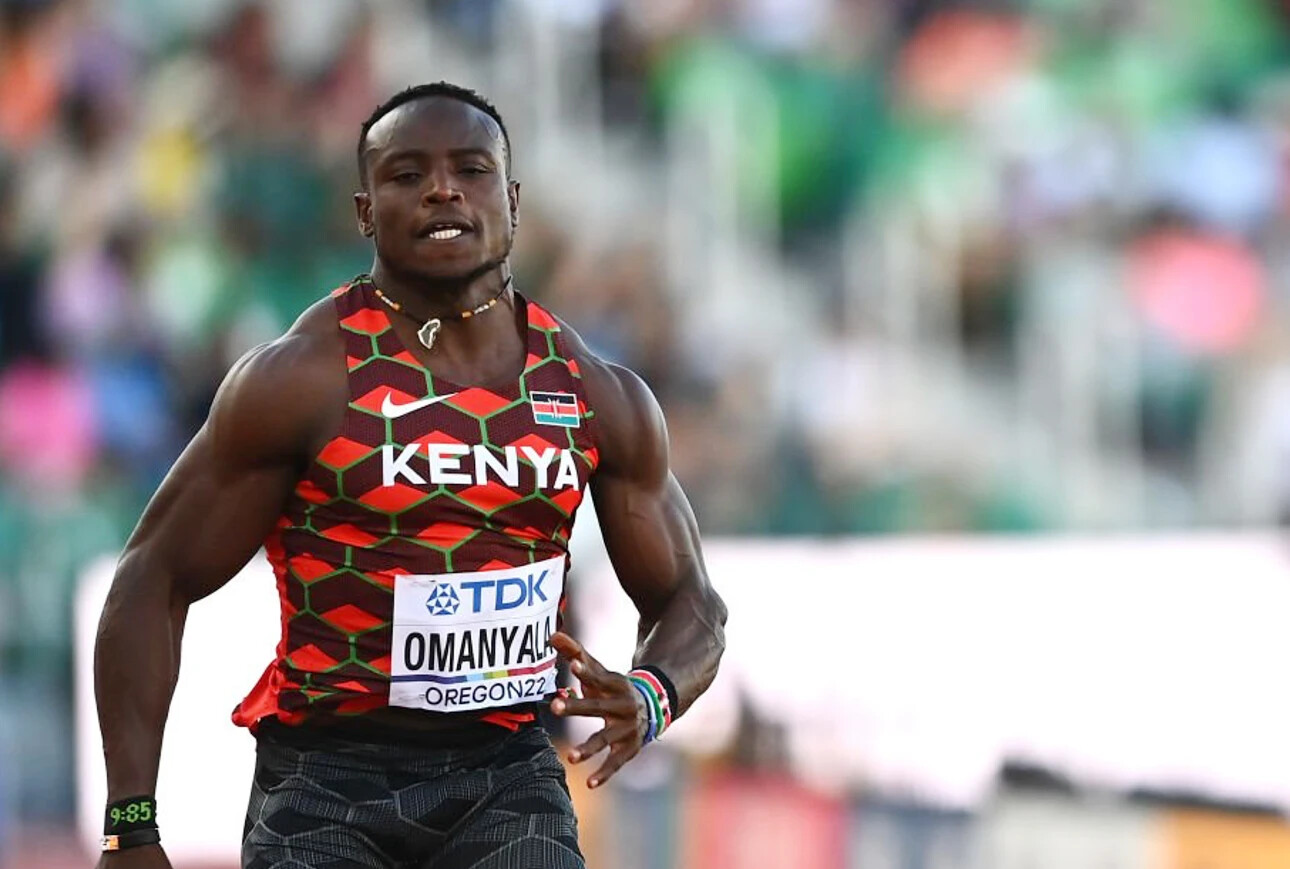
Omanyala, who received the wildest cheers when being introduced, hailed the fans and ambience at the arena.
“It is simply amazing and what any athlete would want to have. Such receptive fans make me run fast.”
On Simbine’s challenge, Omanyala said he won’t be focusing on individuals but delivering good results.
“I know Simbine is around but I am confident and healthy, focusing on nothing short of victory. Tell Kenyans I am winning gold tomorrow,” said Omanyala, who is the fastest in the field with a personal best of 9.85 sec.
Defending champion Akani Simbine from South Africa clocked 10.10 seconds to win the second heat before making his intentions obvious.
" I am here to defend my title. I know Omanyala has promised a good challenge if we reach the final but I am always ready for that. It's what will make this event a thriller for the spectators," said Simbine, who welcomed the good atmosphere at the stadium.
Favour Ashe won the opening heat in 10 12 sec as Ojie Edoburun from England claimed third heat in 10.27sec.
Kenya's other competitor in the event Samuel Imeta is also through to the semis after finishing second in heat nine after posting a personal best of 10.12 seconds.
Rohan Browning from England won in 10.10sec.
"Clocking a personal best feels great for me. My body responded well and I think I should perform well and reach the final. It's my hope," said Imeta.
(08/02/2022) ⚡AMPby Ayumba Ayodi
The Commonwealth Games
The Commonwealth Games are coming to Victoria - bringing an action packed sports program to our regional cities and delivering a long-term legacy for our future. From 17 to 29 March 2026, Geelong, Bendigo, Ballarat, Gippsland and Shepparton will be on the world stage, attracting millions of viewers and creating thousands of jobs. The multi-city model will...
more...Commonwealth Games: Moraa storms 800m final
World 800m bronze medalist Mary Moraa of Kenya is through to the final of the discipline at the ongoing Commonwealth Games at the Alexander Stadium.
Moraa Tuesday clocked one minute and 59.22 seconds to win the first heat, edging out the 2017 World 800m champion Halifax Nakaayi of Uganda to second place in 1:59.35 as both sailed through.
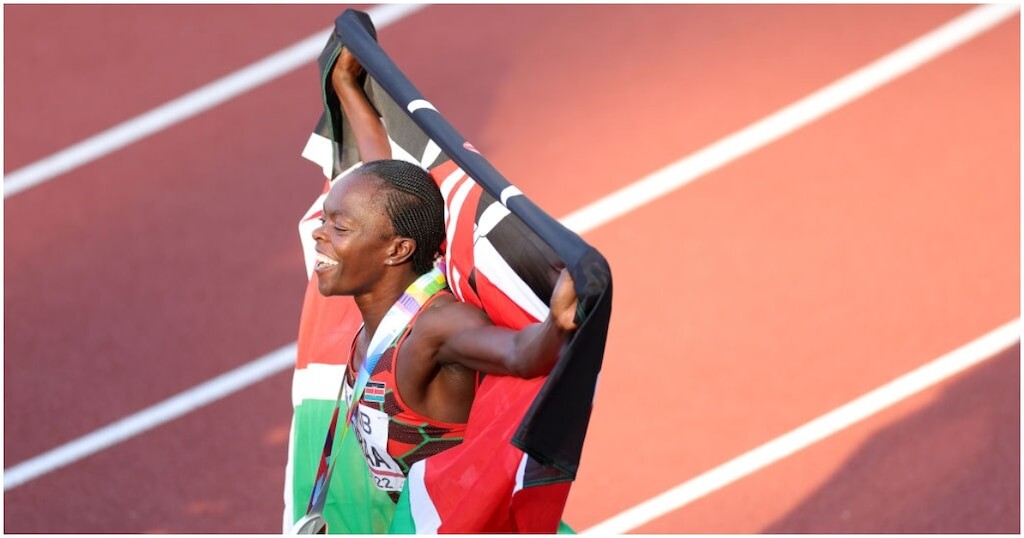
“It wasn’t easy to run sub two minutes after the World Championships in Oregon. There is pressure with such a quality field, but that is what brings out the best in me,” said Moraa, noting that virtually all the athletes from Oregon are in Birmingham save for the World champion Athing Mu from the United States.
Moraa waited on the line as she cheered her friend Natoya Goule, the 2018 Commonwealth Games 800m bronze medalist, to victory in the second heat, beating world 1,500m bronze medallist Laura Muir to second place in 1:58.84.
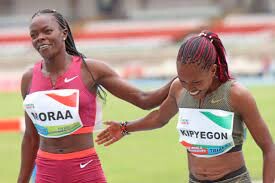
“Goule is a veteran and a good friend of mine. We share a lot and has been a good advisor on how to run 800m,” said Moraa, but cautioned that it will be a different game ball in the final.
“I am here for revenge against Hodgkison who beat me for silver in Oregon,” Moraa.
“I am here for a better medal than what I got in Oregon. Can only pray and hope to wake up well on that day.”
The women’s final is due on Saturday at 9.45pm Kenyan time.
However, Moraa's compatriot Jarinter Mawia, who is the reigning Africa 800m champion, finished fourth in the third heat to miss out on qualification.
“I think the weather in Oregon took toll on me. I had not recovered well. My body felt heavy,” said Mawia.
Natoya Goule from Jamaica won the second heat in 1:58.39 to qualify as World 800m silver medalist Keely Hodgkison claimed the third and last heat in 2:00.8 to also ease through to the final.
(08/02/2022) ⚡AMPby Ayumba Ayodi
The Commonwealth Games
The Commonwealth Games are coming to Victoria - bringing an action packed sports program to our regional cities and delivering a long-term legacy for our future. From 17 to 29 March 2026, Geelong, Bendigo, Ballarat, Gippsland and Shepparton will be on the world stage, attracting millions of viewers and creating thousands of jobs. The multi-city model will...
more...Thirteen Benefits of Running That Make You Healthier and Happier
Never been a fan of running? This list might just change your mind. Start chasing these awesome benefits of running.
1.- Good for Your Heart
So, why exactly is running good for you? For starters, running is the king of cardio. Running even five to 10 minutes a day at a slow speed is associated with a drastically reduced risk of death from cardiovascular disease, according to a landmark study in the Journal of the American College of Cardiology. Regular runners have half the chance of dying from heart disease compared to those who never run. Every time you run, you decrease your resting heart rate, so your heart doesn't need to work as hard, says Greg Justice, an AFAA-certified personal trainer, exercise physiologist, and founder of AYC Health & Fitness in Kansas.
2.- Gets You (Runner's) High
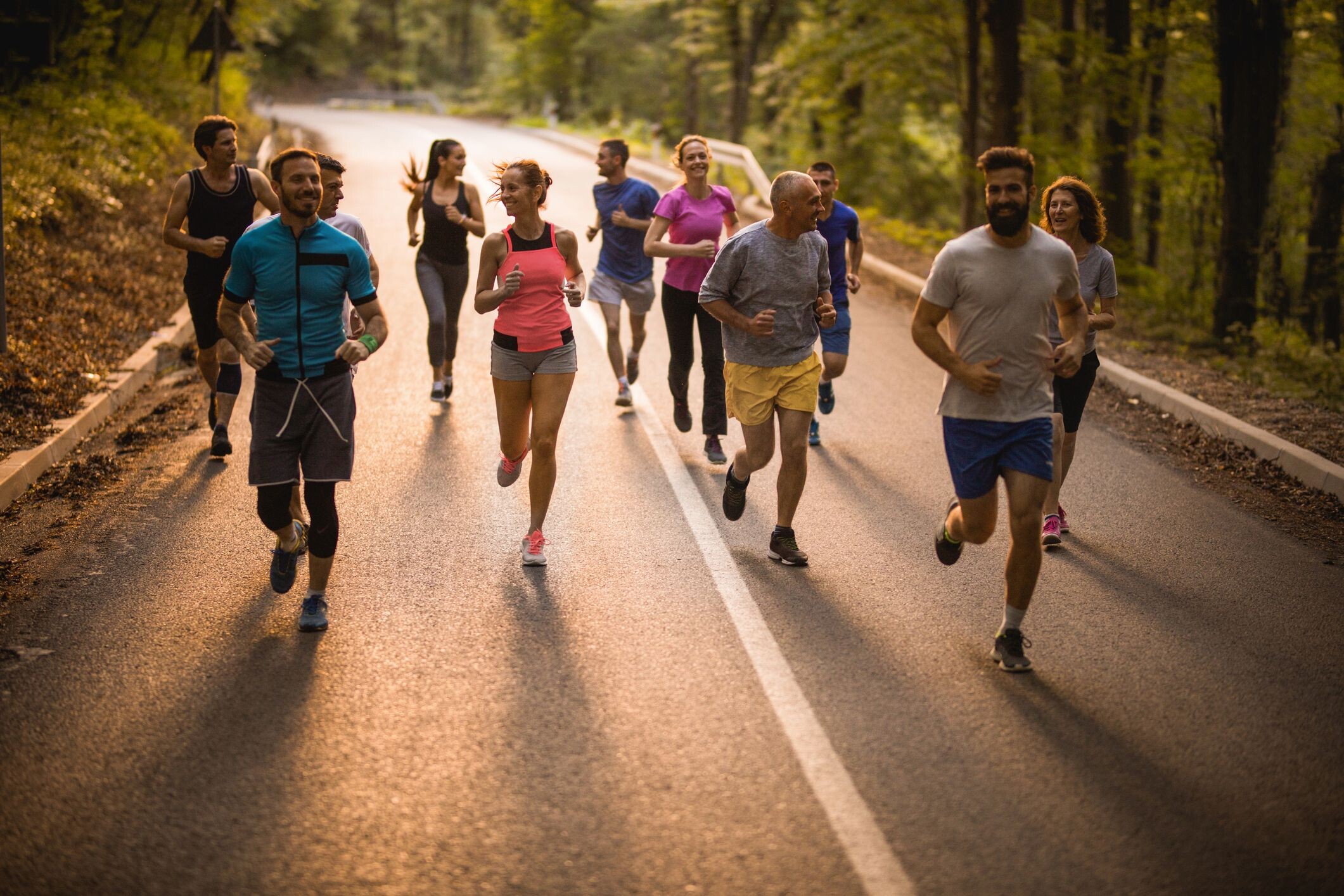
One of the biggest benefits of running is its mood-boosting effects. When you run, your brain pumps out two powerful feel-good chemicals — endorphins and endocannabinoids — explains Justice. The latter sounds a lot like cannabis, right? That's for a reason. Chemically, the endocannabinoids your body produces during a run aren't all that different from marijuana's mood-altering chemical, THC. The most studied mid-run endocannabinoid, called anandamide, was actually discovered when scientists were trying to figure out how weed gets people high. (Related: Drug, Medicine, or Something In Between? Here's What You Should Really Know About Weed)
3.- Strengthens Your Joints
A Medicine & Science in Sports & Exercise study of nearly 75,000 runners and walkers found that, nope, running doesn't up the risk of osteoarthritis — even people who cover 26.2 miles (aka a full marathon distance) on the regular. In fact, runners were half as likely to suffer from knee osteoarthritis compared with walkers, according to the study results.

Every time you pound the pavement, you stress your bones and cartilage, just like you do your muscles, causing them to spring back stronger, explains Janet Hamilton, C.S.C.S., an exercise physiologist with Running Strong in Atlanta. Low-impact exercises such as walking, biking, or swimming don't have the same bone-building benefits as running.
4.- Provides an Intense Leg Workout
You've probably caught on to this fact when you found your legs to be sore AF the day after a distance run, but here's a little background on why. Your body's biggest muscles are all in your legs, and running is advantageous to all of them: your inner and outer thighs, gluteus maximus, quads, hamstrings, and calves, says Justice. That makes hitting the pavement like a dozen leg workouts in one.
5.- Works Your Core
The lower body isn't the only part of you that feels the benefits of running. The exercise works many of your core muscles, challenging not only your rectus abdominis, but also the deeper core muscles including your obliques, erector spinae, and transverse abdominis. Those deep muscles play important roles in stabilizing your spine by transferring power between your swinging arms and legs and sucking in your gut, says Justice. (Related: How to Tone Your Abs During Any Workout)
6.- Doesn't Require a Hefty Time Commitment
Traveling for work? Don't belong to a gym? Have only 10 minutes to work out? Whatever your workout constraints, you can still run, explains Hamilton. "That's an extra advantage for busy women who can't seem to make other workouts or classes fit their lifestyle," she adds. And remember: The best workout is the one you'll actually do.
7.- Helps You Build a Community
The running community is a strong one, and the community benefits of running are often immeasurable. "I can't think of a better place to find wellness-focused people than a running group," says Debora Warner, RRCA-certified running coach and founder of Mile High Run Club, a running-only fitness studio in New York City. Whether you sign up for a running club, join a charity's running team, or just take a look around during your first half marathon, you'll be amazed at all the support and good vibes you get.
8.- Counts As Meditation
If you haven't noticed yet, the benefits of running go way beyond the physical. "Many runners find that the time alone allows them to think and problem solve," says Hamilton. "Taking a run-break from a stressful project can help you return feeling refreshed and insightful." Research shows that meditation can boost your gray matter plasticity, which can improve focus and fight depression and anxiety.
And while running is no substitute for the help of a trained human professional, an ACSM's Health and Fitness Journal study showed that physical activity acts as an effective alternative to treating depression. Combine your miles with a pre- or post-workout meditation session and the benefits are substantial, according to research published in the journal Translational Psychiatry.
9.- Might Improve Your Memory
Lace up and hit the road, because one of the surprising benefits of running is that it can directly affect your brain in the short and long term. A 2014 study at the University of British Columbia revealed that regular aerobic exercise — the kind that gets your heart rate up and makes you sweat, à la spinning or running — can boost the size of your hippocampus. And that's a good thing: The hippocampus is the area of the brain involved in verbal memory and learning.
10.- Doesn't Take Lots of Practice
"With running, there's not much of a learning curve like there might be for other fitness activities like group dance classes, Olympic lifting, CrossFit, or yoga," says Hamilton. "Running's also not as form-dependent as swimming — and because running is a such a natural motion, if you don't overthink it, your reflexes will just kick in." And away you go!
11.- A Little Goes a Long Way
You don't need to be a marathon runner to reap all the benefits of running. Instead, running just 50 minutes per week — the equivalent of one six-mile run or two 5Ks — can protect the body from risk of stroke, arthritis, diabetes, high cholesterol, high blood pressure, and some cancers, according to a meta-analysis published in the journal Mayo Clinic Proceedings .
12.- Burns Calories Efficiently
Running requires a lot of fuel. In fact, the average 150-pound person will burn about 12.2 calories per minute running a 10-minute mile, says Hamilton. Not too shabby, eh? And that's just on flat terrain — head outside where wind and hills up your effort, and you can expect to burn even more.
13.- Could Help You Live Longer
When taken together, all the health benefits of running could actually help you live longer. In fact, runners have a 25 to 40 percent reduced risk of premature mortality and live about three years longer than non-runners, according to a 2017 study published in Progress in Cardiovascular Diseases.
What's more, runners who also regularly took up other aerobic physical activities, such as cycling, swimming, walking, basketball, and racquet sports, had the greatest benefit. These runners had a 43 percent lower risk of death, according to the study. So if you've been itching to skip your morning run and try an indoor cycling class, take this research as a reason to give it a go.
(08/02/2022) ⚡AMPby K. Aleisha Fetters and Alison Feller
Three Running Workouts That Guarantee Race Success
I know, I know. You’re probably thinking, “Guarantee success? C’mon. Is that even possible?” Well, that depends.
If you are a believer in doing the right work and making incremental improvements, then yes, what I am going to discuss will lead to success. But if you are a “glass half empty” athlete, then you might have a hard time finding success, regardless of the workout. Certain adaptations will help you no matter how you gain them, or what your event is—but your success will always depend on your mindset.
So are you a speed demon? Are you an endurance-only athlete? Are you a combination of the two? No fear. There are great workouts that fall under both distinctions.Let’s focus on three that can certainly lead you to great fitness and race success, no matter what type of runner you are. These three workouts are challenging enough for any fitness level, and can be tweaked to fit your program and progress. Let’s begin:

1. 30/60/90 Running Workout
I came across this workout during marathon training in the 1990’s. It worked great then and still applies today. Even better, you can use this workout for any form of race you are training for.

Start out with a 15-20 minute warm up. Then proceed to run 30 seconds at 5k pace or quicker. Your recovery is a 30-second slow jog. Next up is a 60-second push at 5k to 10k pace. Recovery is a 60-second slow jog. And finally, you wrap up your set with a 90 second run at your goal race pace, if not a tad quicker. Your recovery is a 90-second slow jog.
Getting in four sets of these is ideal for shorter distance races. If you are training for a half or a full marathon, shoot for five to six sets.
2. 1,2,3,4,5 Running Workout
I read about this workout a while back. What makes it great is that it has speedwork mixed in with endurance. You can even turn it into a ladder if you’re daring enough. It’s simple in nature yet oh-so-challenging.
Start out with a 15-20 minute warm up. Then do a 1-minute interval at 5k to 10k pace. Recovery is 2 minutes at a slow jog. Unlike in the last workout where recovery matched the interval, in this workout you’ll do a 2-minute recovery after each repetition. Next up is a 2-minute interval (again at 5k to 10k pace) and recover.Next up is 3 minutes at tempo pace and recover. Your 4-minute interval will be at goal race pace. Tempo is okay too. Shoot for the same for your 5-minute set.
You can ladder it down, repeat it or just do one set. All is your call. In the end, it’s a great, doable workout with lactic threshold and recovery benefits.
3. One Minute Interval Running Workout
This is a simple workout that will test your speed and endurance: just run hard for one minute, then rest for one minute, and repeat.
Warm up for 15 to 20 minutes. The one-minute interval should be at 5k-10k pace. Your recovery is a 1-minute slow jog. The key to this workout is to stay even in your timing—meaning don’t blow out the first few and having nothing left for the end. In fact, it’s better to start off at a slightly slower pace and kick it into a higher gear towards the end.
Your goal should be 12 repeats. If you can, work up to 16-18 of these—the ideal duration for longer events.
There you have it. Three workouts that have been proven to lead to success. Like anything else, stay focused and watch your progress. As another coach once said to me: “If you feel like you are working hard then you are,” but you can monitor your effort, your progress and if possible your heart rate to help with your perspective.
There are a multitude of awesome training sessions at your disposal, and if you ask 20 coaches for some you will get 20 different responses. In this post, I’ve proposed just a few to get rolling. In the end, find what works best for you and play with it. Best wishes for your success!
(08/02/2022) ⚡AMPby Bob Mittleman
Get Ready to Run with Marathon Legends
Run with Abbott World Marathon Major Legends!
The AbbottWMM Global Run Club today launched Legends Week – a new free virtual Challenge taking place from August 15-19.
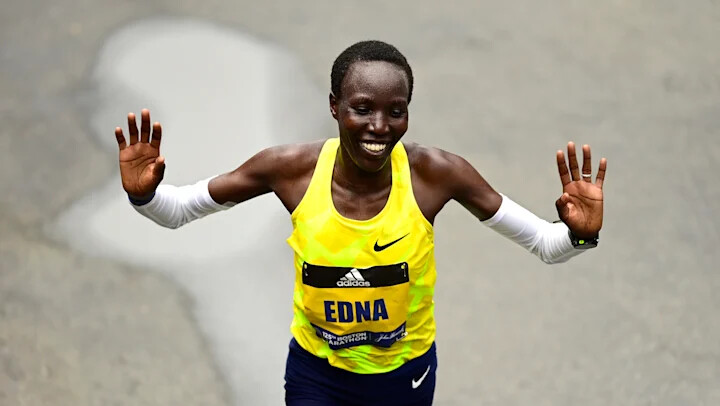
Runners must complete one challenge a day, for five days, to earn their Legends Week virtual badge and enter a prize draw for a special signed gift from five incredible athletes.
Each daily workout has been chosen by one of the legends to offer a mix of distances and training styles for everyone to enjoy.Edna Kiplagat, the Kenyan superstar who is a former World Champion, three-time AbbottWMM Series Champion and a Six Star finisher. She loves to add some speed and repetitions into her weekly routine and kicks things off with 4 x 1-mile repeats.Deena Kastor, a former American record holder and Olympic Bronze medalist for the marathon but also a 5km champion too! She set the 5km world record on the road at Carlsbad in 2002 (14:54) and she still enjoys racing them today.

Multiple Major winner Daniel Romanchuk is a master of many distances. Representing the United States, he claimed the gold medal and a new World Record at the Tokyo Paralympic Games in the T54 400m in 45:72, coming from behind to win by 0.1 second! His workout is 4 x 400m on the track or road.
British wheelchair racer Johnboy Smith the newly-minted 2022 Commonwealth Games Marathon champion, is also a Six Star finisher! Smith, who took second place in the 2017 New York City Marathon, completed his Six Star journey in Tokyo earlier this year. His challenge is a six-mile run to celebrate this success.
Japanese marathon legend Yuki Kawauchi who ran his final mile of that grueling 2018 Boston Marathon in 5:12! He survived rain, wind, and hail to take the finisher tape on Boylston Street for the Boston Marathon victory. We are closing the week with a 1-mile challenge to celebrate and appreciate that amazing feat.
This is a fun and free challenge to motivate runners before we move into a busy fall calendar with four Abbott World Marathon Majors in close succession. A chance to mix things up, test your limits and enjoy a break from the norm!
Participants can walk or run your way through these workouts:
Monday 15 Aug: 4 x 1-mile with Edna Kiplagat
Tuesday 16 Aug: 5km with Deena Kastor
Wednesday 17 Aug: 4 x 400m with Daniel Romanchuk
Thursday 18 Aug: 6 miles with Johnboy Smith
Friday 19 Aug: 1-mile with Yuki Kawauchi
(08/02/2022) ⚡AMPHow to keep your feet healthy when preparing for a big run
Running can do wonders for your health, but it can wreak havoc on your feet — especially if you start training for a half or full marathon. Common foot issues associated with distance running include:
Blisters, Corns and calluses, Athlete’s foot, Lost toenails and Plantar fasciitis
Fortunately, you don’t have to let your long runs take a toll on your feet. John Jurcisin, DPM, brings more than 31 years of experience to Precision Footcare in Midtown East, New York City. As an avid distance runner, Dr. Jurcisin knows firsthand how proper foot care can keep your feet healthy and comfortable while you train.

Pick the right shoes
Believe it or not, you need to pay as much attention to your running shoes as your non-running shoes. Make sure the shoes you wear for training fit correctly, and get measured each time you replace them, because your feet can continue expanding over time. When picking everyday footwear, pick options with rubber soles that provide plenty of cushioning, and avoid shoes with heels higher than one inch.
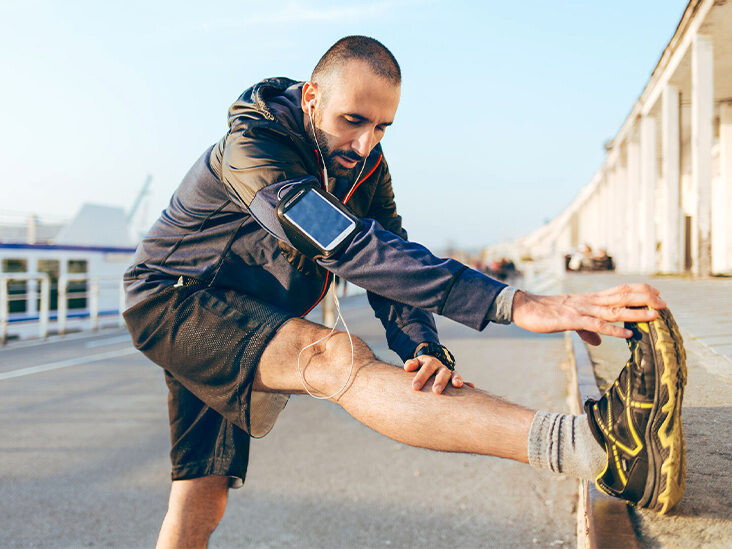
Take proper care of your shoes
On average, running shoes should last 350-500 miles. However, you may need new shoes sooner, depending on your gate, height, and weight. To extend the life of your shoes, store them indoors away from the heat. And, if any insoles or orthotics get wet, take them out and let them dry. Dr. Jurcisin also recommends having more than one pair of shoes, so you can rotate between them and have dry shoes at the ready.
Wear the right socks
Poorly fitting shoes aren’t the only cause of blisters and corns. Heading out in the wrong socks can also impact the fit of your shoes and lead to problems. Try experimenting with different brands, thicknesses, and fabrics to keep your feet dry and comfortable in every season. And don't lock yourself into one kind of socks. The kind that works in winter may not be a good option when summer rolls around.
Apply moisturizer to your feet
If you’re prone to blisters or painful cracking, it could be time to turn to moisturizer. Dr. Jurcisin recommends applying foot cream every day immediately after a shower or bath. This approach can help your feet retain the water they absorb during the shower and help your feet grow soft and smooth.
Keep your feet as dry as possible
It may not be easy to keep your feet dry when each of your feet has approximately 125,000 sweat glands capable of producing 4 ounces of moisture a day. And, when you add training through rain, sleet, and snow, you can have an even bigger problem. To help keep moisture at bay, wear lightweight and breathable socks along with waterproof training shoes when possible. And, never head out for a long run wearing wet or damp shoes or socks.
Cool down your feet
If you have feet that overheat or swell when the miles add up, try applying ice or submerging your feet in cold water immediately after your run. For noticeable swelling, try elevating your legs and applying ice packs for up to 20 minutes to pamper those tootsies.
Strength-train your feet
A strong body is a healthy body, and that goes for your feet, too. Dr. Jurcisin recommends going barefoot when you can and adding a few simple foot exercises to your schedule 2-3 times a week, such as:
Toe raises: Lift up on your toes 20 times
Heel drops: Stand on a step, then drop and raise your heels 20 times
Towel pulls: Use a towel to pull your toes toward you for 30 seconds
Toe grabs: Try grasping a marble or pencil with your toes
You can also use the big toe of each of your feet to pretend that you’re tracing all of the letters of the alphabet.
Don’t ignore a problem
Most importantly, don’t ignore a foot problem, even if it’s only a blister or tender spot. While these issues may not seem serious, they can develop into more painful and debilitating conditions without treatment.
(08/01/2022) ⚡AMPby Precision Footcare
Beat the heat with these treadmill workouts
Love it or hate it, the treadmill can be an effective tool during numbingly cold winters and sweltering summer days. Try these workouts and tips to add some spice to your indoor running when the heat forces you indoors.
Treadmill tips
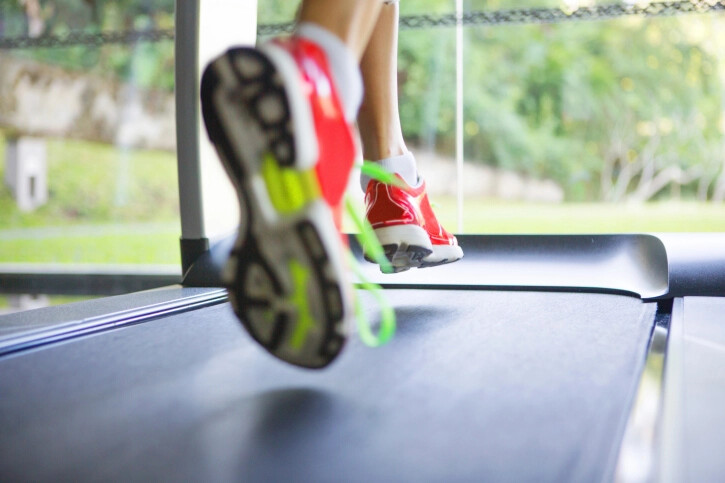
It might feel like you’re slogging away slowly, but running on a treadmill eliminates the challenges of wind resistance and surface variation. Adjust the incline to one per cent for all of your runs to account for that. Avoid hanging on to the handrails: they are intended for safety, not for use while you’re moving. Use them to get securely on and off the treadmill.
Try various workouts to keep boredom at bay, and take tips from runners you know who run indoors often. Regular treadmill runners often have great hacks for making the indoor run more interesting (or at the very least, some great Netflix recommendations for your long indoor run).

Incline intervals
With the incline set a 1 per cent, warm up with 10 minutes of easy running
Adjust the incline to 9 per cent for 1 minute, followed by 1 minute at 1 per cent
Repeat 10 times (add more or less depending on fitness and experience)
Cool down with 10 minutes of easy running
800 meter repeats
Warm up with 10 minutes of easy running
Run 20 minutes at a pace you can maintain for an hour
Recover with 3 minutes of easy running
5 x 800m fast with 1 min recovery between
Cool down with 10 minutes of easy running
Remember to take an easy or recovery day after a speed session, and hydrate well, even if you’re running in an air-conditioned gym.
(08/01/2022) ⚡AMPby Running Magazine
Amputee ultrarunner Jacky Hunt-Broersma is running 50K a day
Bladerunner and Jacky Hunt-Broersma is celebrating being alive with her latest running challenge. Arizona-based athlete and coach Hunt-Broersma will be running 50 km a day until August 14, her birthday, when she will run 47 km to toast her age. Aug. 1 is both the athlete’s amputee anniversary and marks 20 years of being cancer-free, she shared on Instagram.
Hunt-Broersma lost her lower left leg to Ewing sarcoma, a rare form of cancer that affects the tissue around bones, in 2002. While she always lived a healthy lifestyle, she didn’t start running until 2016, when she signed up for a 5K race and rapidly progressed from there.
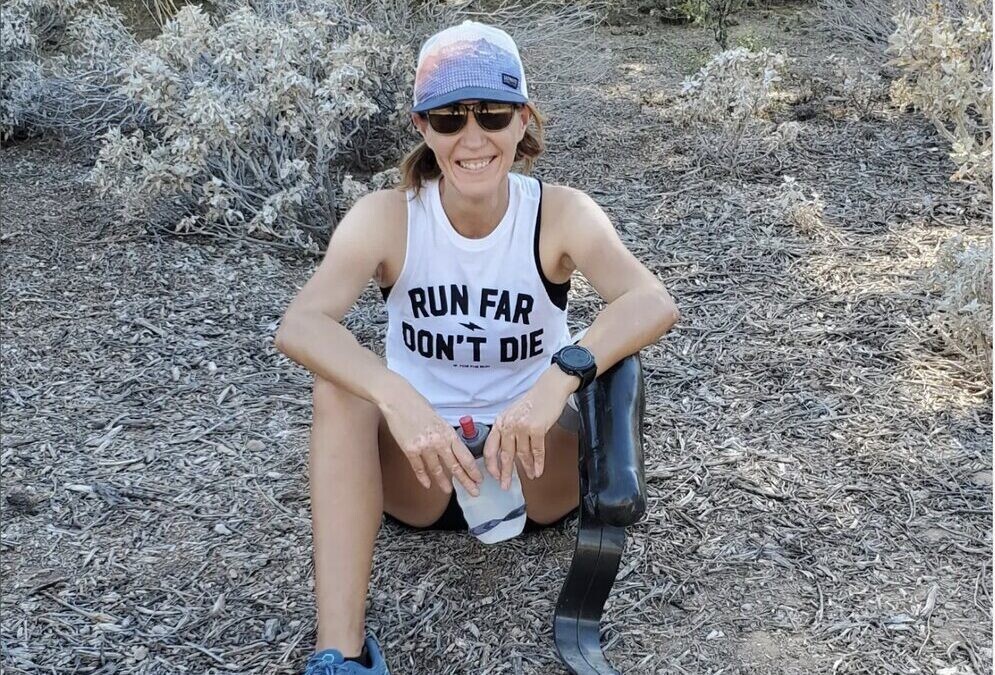
The athlete quickly progressed to marathons, trail races and ultras and is currently training for her second attempt at the Moab 240 ultratrail race.
Hunt-Broersma has continuously set the bar high in her running career–remarkable not only because of the hurdles she overcomes to compete but also because she used to hate running. She ran 104 marathons in 104 days earlier this year, breaking the record (at that time) for most consecutive marathons.
While her record has also since been beaten, the achievement raised close to $200,000 for other amputee bladerunners, helping them access expensive prosthetics. Hunt-Broersma’s own running prosthetic costs $20,000.
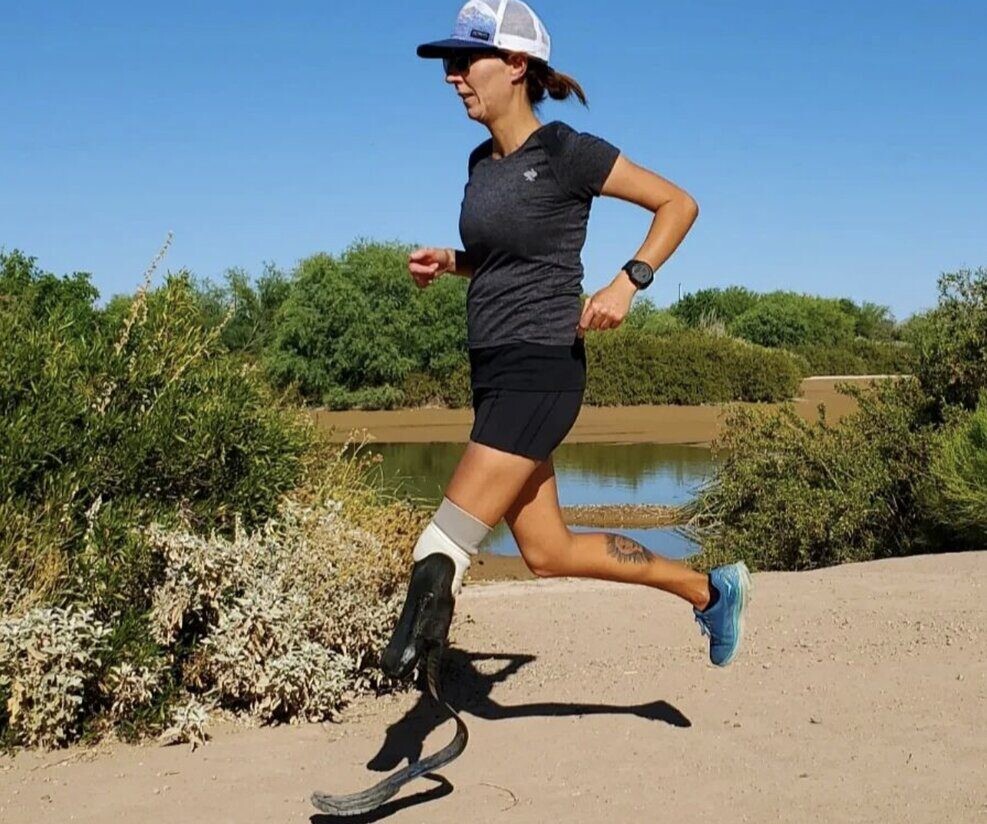
While 104 consecutive marathons, or several weeks of daily 50 km runs, is more than most endurance athletes will ever tackle, for Hunt-Broersma these are perfect training runs for Moab 240 on Oct. 7.
Hunt-Broersma says that her motivation comes from her desire to not be defined by her appearance. “There’s a drive in me, because I’m not disabled, and I don’t want to be labeled as someone with a disability,” she says. “I want to show the world what I can do.”
(08/01/2022) ⚡AMPby Keeley Milne
Why It’s Smart to Run With Your Glasses
Yes, you can look stylish and still be speedy with glasses.
If you wear glasses and you run, then you’ve probably been guilty of chasing miles without your glasses, at least at some point. Maybe you’ve been pinched for time and didn’t want to make the effort to put in your contacts. Or maybe you just don’t think it’s a big deal to ditch your glasses when running. But the truth: You could be putting yourself at risk if you don’t run with clear sight.
“It’s important to wear your glasses not only to see clearer and further, but to also decrease your risk for injury. A runner with a mild prescription may be able to run safely and comfortably without glasses, but the majority of people would benefit from prescription eyewear when running,” says Scott Huggler, O.D., opthamologist of Nazareth Eye Associates in Nazareth, Pennsylvania.
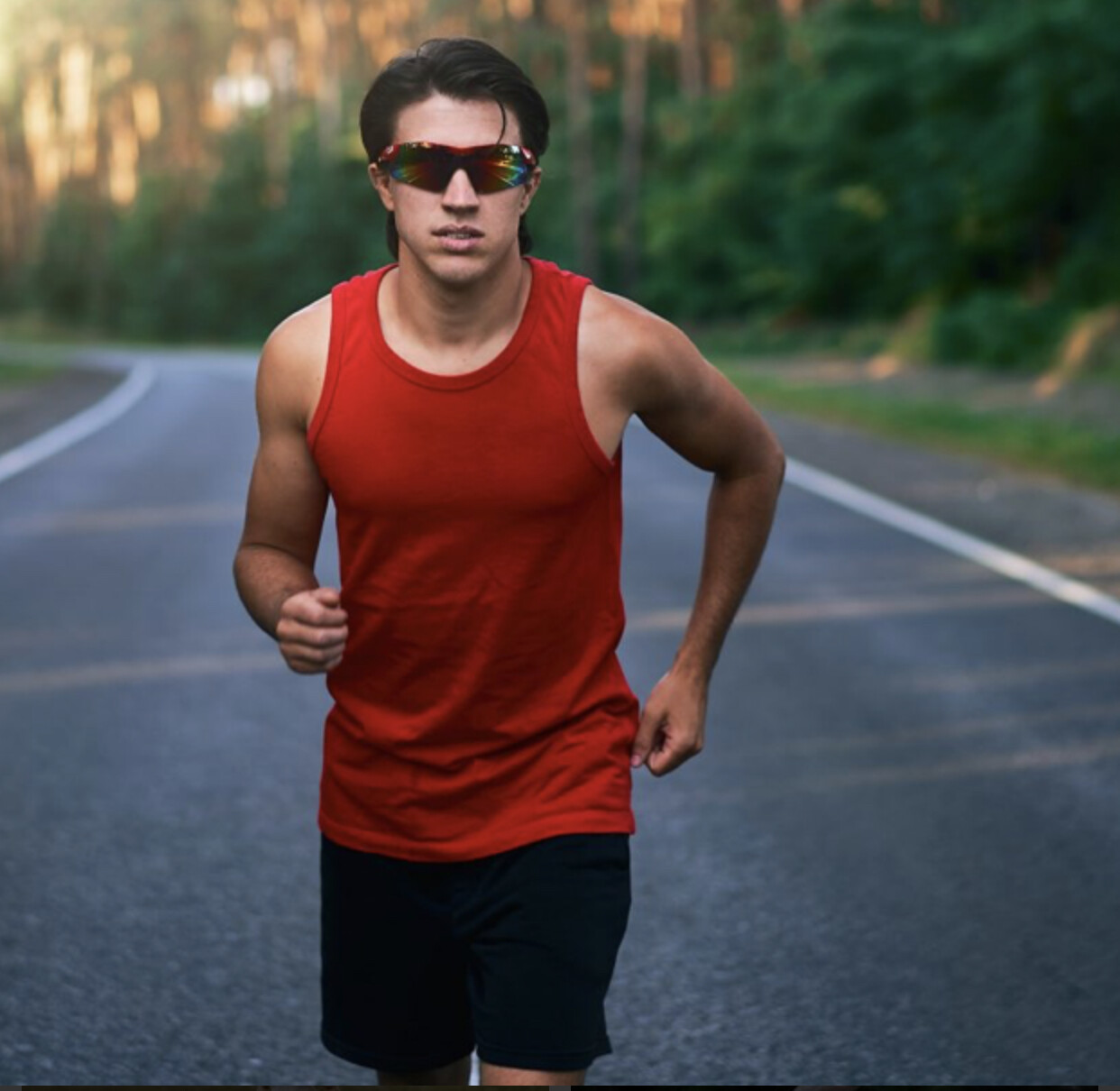
If a runner cannot see clearly, they miss the small rock, curb, or subtle changes in terrain that can cause injuries, from a mild sprain to a torn meniscus, he says. So, is it worth ditching your glasses and risking forced time off?
Gary Martin, 18-year-old recent high school graduate who’s running at the University of Virginia in the fall and a sub-4:00 miler, says he doesn’t notice his glasses when he’s running unless it’s pouring rain. “I train in [glasses] all the time. Cross-country made me want to wear them, because there’s a lot more to worry about, like sticks and rocks. So I had to wear them for that or else I’d probably trip on something.”
Martin, who typically wears Rudy Project Step 1 Ophthalmic frames, says glasses were necessary during his track meets as well, so he could determine who to grab the baton from, considering all the teams were wearing black uniforms.
So how do you find a pair of glasses that work for you and don’t disrupt your miles? We spoke to experts and put eyewear designed for activity to the test to help you find your best match.

What should you look for in running glasses?
While both dress glasses and running glasses will give you clear vision, Huggler says running glasses offer different features. Here’s what he says to look for:
Frames that are ultralight and durable
Aim for a wrapped-frame design to maximize protection and allow for the greatest field of vision
A snug fit, as this will decrease frame movement
Frames with no-slip silicone nose pads and rubber grips (on the temple) to help prevent slippage from sweat
Lenses made from lightweight material (such as Trivex and polycarbonate), because they’re lighter and more impact-resistant than plastic
Lenses with UV protection to decrease effects of UV exposure such as corneal damage, cataracts, and macular degenerations
Should you wear bifocals to run?
The good news is that bifocals are generally not needed for running. “The distortion from the bifocal in downward gaze can be problematic, especially over surfaces not perfectly smooth,” Huggler says.
“The biggest complaint we hear from our runners is not being able to see their watch to check time and pace, but new technology has solved this problem with watches that wirelessly connect to earphones, giving the runner valuable information on pace, splits, distance, and time,” Huggler adds.
If you don’t want to wear earbuds, Huggler recommends a bifocal purposefully set lower than your traditional glasses. This will allow you to take a quick downward glance to read your watch, but not compromise your distant view.
Also, if you just wear reading glasses, consider a large-faced watch with a bold backlit face and large numbers in lieu of glasses, Huggler says. If that doesn’t seem to work you could opt for that earbud bluetooth connection for stat announcements.
The bottom line on running with glasses
You can still look stylish in today’s running glasses, and feel confident knowing that your eyes are protected and your sight is clear. It’s always best to try on several frames and find what’s right for you.
(07/31/2022) ⚡AMP
by Runner’s World
The Connections Between Overtraining and Underfueling
I think the most important workout I prescribe as a coach happens the day after many races. The workout is given in all-caps, shouted with urgency.
PIZZA.

Or perhaps BURGERS. If we're feeling spicy, BURRITOS. An athlete can make substitutions within the spirit of the plan, but if they eat a salad, it better be topped with enough bacon and croutons to qualify as a structurally-challenged BLT.
There are exceptions for athletes that have been told by a doctor or nutritionist to follow different guidelines. The main idea is that the post-race recovery window is a good reminder that eating enough food is the key to long-term adaptation in the context of a healthy life. So I might not always be writing PIZZA, but PIZZA is always implied. Pizza isn't just a meal, it's a lifestyle.
The rationale: eating enough is key for the healthy function of the nervous, endocrine, metabolic, and musculoskeletal systems, all of which are needed at full strength to encourage adaptation. Low energy availability-even within a single day during heavy training-is like pulling out an assortment of Jenga blocks from our physiology at random and then facing an earthquake. At first, things might not collapse with a few blocks on the ground. But eventually, when the quake comes (if not sooner), everything will come crashing down.
New Study Overview
A November 2021 review article in Sports Medicine by a wonderful group of researchers led by Trent Stellingwerff found some fascinating links between overtraining and underfueling, underscoring the importance of always eating enough food. Let's start with some definitions.
Overtraining syndrome is a series of maladaptations to chronic stress loads, with the article using the specific definition of "an accumulation of training and/or non-training stress resulting in long-term decrement in performance capacity." Short-term performance decreases from days to weeks are called functional overreaching (usually planned, possibly leading to an athlete progressing above baseline) or non-functional overreaching (unplanned and unproductive). The 2021 article uses the term "training-overload/OTS," reviewing studies that find a sustained and significant decline in performance outcomes.
In 2014, the British Journal of Sports Medicine published the IOC Consensus Statement on Relative Energy Deficiency in Sport (RED-S), defined as "impaired physiological function including, but not limited to, metabolic rate, menstrual function, bone health, immunity, protein synthesis, cardiovascular health caused by relative energy deficiency." Low energy availability is when total energy intake doesn't leave enough energy availability after considering energy expenditure during exercise (undereating or overexercising or both).
The 2021 article is so important because it answers a question that gets to the heart of athletic performance. May some cases of overtraining be partially attributable to underfueling?
And it raised some questions in my mind as a coach.
How many athletes have undershot their ultimate potential because they (and/or their healthcare providers/coaches) didn't see the link between fueling and adaptation? How many athletic careers have come crashing down, seemingly without explanation, all due to misinformed understandings of physiology?
These questions are especially relevant with recent revelations that the University of Oregon adjusted training based on body composition readings in repeated DEXA scans (we talk about the background on the Some Work, All Play podcast here). If overtraining and underfueling are interconnected, then increasing training while failing to appropriately increase fueling could send athletes into unnecessary, almost universal physiological black holes.
Study Principles
A primary difficulty in study design is that both overtraining and RED-S involve diagnosis by exclusion, where other potential causes are ruled out first. On top of that, there is no one presentation of either condition. For both, "performance decline is coupled with a broad and individually variable palette of psychological/emotional, physiological, immunological,and neuroendocrine decrements." You could imagine someone who rarely exercises and eats plenty going to the doctor with a similar set of symptoms as an athlete with overtraining or RED-S. If it looks like a duck, and it quacks like a duck, it may be a duck (subject to disclaimers). But it could also be a rabbit, depending on how you are looking at it and what you are looking for.
For overtraining, there are some helpful protocols to add certainty to diagnoses. A 2010 study in the British Journal of Sports Medicine used a two-bout exercise protocol, involving two max performance tests four hours apart, finding attenuated changes in cortisol and certain hormones for overtrained athletes. Generally, performance decreases over time can provide diagnostic clues for overtraining. For RED-S, risk-assessment tools and energy availability calculators can evaluate energy availability, and bone health scans and menstrual cycle status are diagnostic factors, but it's still difficult to directly prove that clinical outcomes result from underfueling in all cases.
That uncertainty of individual diagnosis is why the review article is so helpful. It examined 57 studies for overtraining and 88 studies for low energy availability to draw conclusions that apply across a broad population of athletes. Interestingly, 78% of the nearly 10,000 participants in the RED-S studies were female, while only 19% of the 1000+ participants in the overtraining studies were female, which could influence how observations/diagnoses have been made over time (i.e. perhaps male athletes have been underdiagnosed with RED-S). There are four conclusions I want to highlight.
One: Overtraining and low energy availability share almost all symptoms
There are 13 performance and health outcome groupings for the two conditions, and overtraining and RED-S share all but one (bone health, which only applies to RED-S). They share impacts to: endurance; strength; injury/illness; adaptation; glycogen/protein synthesis; coordination; sex hormones; other hormones; biochemistry; immune function; metabolic/cardiovascular function; and mental health/related variables. Both ailments have at least some hypothalamic-pituitary origin, affecting almost every variable that goes into health and performance.
Two: Overtraining and RED-S are related to "under-recovery"
Every training session introduces stress, leading to some sort of rest and recovery requirement. Overtraining and RED-S are both causes and responses to chronic stresses that are not being adequately processed by the body. Notably, overtraining and RED-S both lead to performance decreases. For athletes dealing with these ailments, increasing training volume and/or intensity will likely make them perform worse, which can be especially difficult in an athletic landscape that sometimes focuses on weekly miles and hard workouts. But even short of long-term performance reduction, stagnation and general fatigue may be related to the same under-recovery processes.
Three: Some overtraining-related diagnoses may be due to misdiagnosed under-recovery from underfueling
The next step the article took made me gasp with excitement. I know that sounds dramatic, but that's how cool it is, and that's also a clue to how few dates I got in high school.
The authors looked at a subset of 21 studies that implemented training overloads, many of which resulted in overtraining-related outcomes. Next, they calculated energy availability in those studies. In other words, the 2021 article studied the past studies to make new findings.
14 of the 21 studies found an energy availability decrease between the training overload and control groups. For example, a 1988 study in Medicine & Science in Sports & Exercise examined 12 male collegiate swimmers during a 10-day intensive training block. Retrospectively, that study classified swimmers as overtrained or non-overtrained based on subjective feelings of fatigue. Despite similar training and energy expenditure increases in the two groups, the overtrained group ate about 1000 kcal less per day (4682 vs. 3631). Across the studies, differences as low as 15% in daily energy intake could explain some of the overtraining symptoms.
As the study authors concluded, "Even small within-day energy deficits (only 300-400 kcal) have been associated with clinically meaningful RED-S symptom outcomes in cross-sectional study designs. Although a one-off small 300 kcal deficit (either within day, or over an entire day) is most certainly not clinically impactful, when multiplied over months, these small mismatches in energy can become significant (e.g. energy deficit of 300 kcal/day over 1 year = 100,000+ kcal deficit)."
4 of the 21 studies demonstrated an independent effect of low carbohydrate intake. Even without low energy availability, there is some evidence that carbohydrate restriction could lead to RED-S symptoms. At a Halloween party, an athlete with amenorrhea was talking to my co-coach Dr. Megan Roche, and the part of Megan's advice that jumped out to me (after she heard about the athlete's background and nutrition) was very simple: "CARBS!"
However, not every study supports the overarching hypothesis that underfueling is an element in overtraining. 3 of 21 studies showed overtraining-related symptoms without evidence of lower energy availability. Interestingly, one was the 2020 study in the Journal Of Applied Physiology on muscle fiber typology and overtraining that was
The authors summarize the findings: "Taken together, 86% of the training-overload/OTS studies reporting dietary outcomes (18 out of 21) showed reduced EA (n = 14 studies) and/or CHO availability (n = 4) between treatment groups or between pre and post concurrent with symptoms consistent with both OTS and RED-S."
Eating enough won't prevent every case of training-overload/OTS, but it may prevent many of them.
Four: Awareness and monitoring is key
To conclude, the authors highlight that increased training load "tends to initially result in improvements in performance, potentially through a combination of increased training adaptations and/or initial changes in body composition outcomes." That's adaptation to training, and it's not a bad thing. But what happens next can be very, very bad.
In some athletes and coaches, the authors say, it can create a "feed forward" misconception that "even more training and/or more decreases in extreme body composition metrics might further drive positive performance outcomes." That misconception creates "the perfect storm" for overtraining and RED-S.
A few weeks ago, we saw this problem magnified with disturbing clarity at the University of Oregon. Their body-composition monitoring program was a scientific failure because it interpolated from outliers winning Olympic medals while extrapolating from the beginning phases of an athletic life of the college runners in the program. It was more than a problem of trying to fit a square peg into a round hole. It was also a problem of trying to push every athlete into a hole to begin with, whether it was backed by individual physiology or not.
The 2021 article emphasizes the importance of fueling the work you are doing. Under-recovery via overtraining or RED-S is unequivocally bad for health. The next step is elevating a culture that supports long-term recovery and adaptation, which requires plenty of fuel.
As a coach, I know that if an athlete is eating enough, I can prescribe more training and harder training. Those athletes can pursue big dreams without fear, and they can imagine adventures for decades and not just a few months.
Eating enough isn't just about avoiding a big wall in the middle of the road in athletic development. It's about removing that wall entirely so that we can put the pedal to the freaking metal in training, chasing some scary dreams.
(07/31/2022) ⚡AMPby Trail Runner Magazine
Taking Time Away From Running Is Hard. It's Also A Huge Opportunity.
When athletes treat their bodies with the proper respect, there's no telling how much they can handle.
Smashed course records by both male and female winners at the Hardrock 100 two weeks ago show that we still aren't anywhere close to hitting the ceiling on accomplishments in running. But a few missteps, even with the best of intentions, can cause those same hardworking bodies to grind to an early halt.

According to Dr. Megan Roche, professional runner and clinical researcher for the Female Athlete Science and Translational Research program at Stanford University, runners risk depleting their bodies of the energy they need to perform their best, as athletes and function optimally in the everyday moments in between. In the most basic sense, we're not all that different from cars on the street. We need fuel - plenty and often - to keep chugging along. An empty tank translates to a much shorter trip than you could manage on a full one.
The issue is that a lot of popular nutrition recommendations pave the way to low energy availability. "Common things associated with low energy availability are low carbohydrate diets, within-day energy deficits, heavy training without increased intake, lack of fueling on long runs, and disordered eating or eating disorders," Roche says.
You might even think that you are getting enough intake to fuel up for your runs and recover well, based on how often your growling stomach sends you to the fridge during high-mileage weeks. But even the strongest "runger" might not be enough to match your actual energy needs. "Low energy availability can easily happen unintentionally," explains Roche. That's especially true when you factor in the amount of energy that athletes expend on a day to day basis.
Coming Up Short
Relative Energy Deficiency in Sport (RED-S) sets in when the body spends too long in that state of low energy availability, undergoing training stress without enough fuel, rest, or both to balance out the load. It can't continue to push at the same level, so it begins to shut down everything that it doesn't deem absolutely necessary for survival. Like a weary runner shuffling in the last mile, sure you can keep moving, but at a cost to your performance and your overall health.

"RED-S can cause endocrine disruption, suppression of the reproductive hormones, thyroid abnormalities, immune dysfunction, and changes in metabolism," Roche warns. "All of these factors can impact performance over the long-term, making it harder and harder to gain consistency in training."
The only way out is through, which requires minimizing all sources of stress until the body feels safe enough to turn the extra sources back on. It requires building up out of the debt the body is already in, both in terms of energy and rest. And since exercise exerts its own stress, that takes running off the table, too. "Reduced exercise and weight gain can be the most effective recovery tools in restoring the energy balance," Roche agrees. It's a temporary break, but a murky one.
"RED-S recovery is a complicated process with a unique roadmap for each athlete that is trying to heal," adds endurance sports dietitian Kylee Van Horn. "The physical and mental stresses must fully be addressed, which can involve a complex recovery process. This also leads to an unpredictable timeline for recovery, and begs patience and dedication to the process to fully recover."
Even if it's not forever, shelving your shoes can still feel like tearing out half your heart. But in the wake of diet and hustle cultures, more runners than ever are finding themselves facing the tough reality that their bodies can't keep up the pace anymore. Running well in the future means not running right now. "Recovery will be a journey," Roche sympathizes, "but one that will support all the adventures and performances to come."
The Hardest Race
Whether you're resting to repay an energy debt or to manage another setback, not running might hurt more than the toughest training block. After all, you're cut off from an integral piece of who you are.
Wile it's important to round out your personality with other interests besides running, there's no denying that most of us feel a deep connection to our sport - that's why we do it! It's our strongest connection to the world around us and the people exploring it with us. But when the sport that charges your mental and spiritual batteries is also what drains your physical battery, it turns into a painful situation.
So when you're on pause, how do you find the drive to move forward?
Cutting all ties presents one option. Seeing reminders of running at every corner can feel like pressing on a bruise when you're not actively running yourself. It's tempting to turn your back on the whole thing so that you don't have to face what you're missing.
But taking that route writes off the fact that running involves far more than just pumping your legs back and forth. Recovery is often the part of training that takes the most discipline, and is frequently overlooked or swept aside by athletes who think of it as optional. There are improvements to be made and experiences to be had as a runner without taking a single step. Here are three:
Tactic #1: Cultivate a Super Fan Mindset
Staying connected to the running community is critical. Ambitious runners so often get wrapped up in the hustle and bustle of competition when deep in race mode, and lose sight of community because their own goals hog the stage. When those all-consuming goals take a backseat, you finally have the chance to remove your blinders.
"I think there is immense power in shifting from a super-athlete mindset to a super-fan mindset," says David Roche, coach with Some Work All Play. "A health-related reset is a wonderful time to view competition through the lens of love, to try to see others as teammates, even if you've never met them. That loving, fan mindset can give an athlete superpowers when they return, changing a narrative of conditional self-acceptance to one that is uplifting and joyous in all contexts, since there are always teammates to cheer on."
Coach T.J. David with Microcosm Coaching agrees. "Staying engaged with other runners during long periods of time off can be one of the best ways for athletes to work through the challenges of not being able to train and compete in sport, because those community activities often connect with the reasons the athlete got involved in the activity in the first place."
Without the pressures of performance narrowing your scope, there's room for the simple joys of running to shine brighter, like scenery, discovery, and good company. When you're on your feet again, you'll bring those highlights back with you to reframe your perspective for the future.
Tactic #2: Talk It Out
There's a huge emotional component to taking time away from running. To work through the internal conflict, you'll need friends to hold your hand.
"Taking the time and space to talk through the recovery process and address any feelings that might be arising is super important for athletes," David Roche confirms. "Social recovery is one of the most important tools in an athlete's toolbox for coping with the challenges that long-term setbacks present. Just talking about what you're going through, either with a coach or friends who get it can help lower the stigma and reduce stress around the recovery process." Microcosm Coaching actually hosts weekly Community Calls with their athlete team for this very reason, to establish a strong sense of camaraderie so that their runners always know who to turn to, in sickness and in health.
Tactic #3: Remember That Mood Follows Action
It might feel difficult to keep up with those connections at first. Losing running, even temporarily, comes with its own grieving process, and jealousy can rear up quickly.
"A sick or injured runner managing complicated emotions like envy, loss, and vulnerability may feel comfort in the short term by isolating," acknowledges Sarah Strong, LCSW with Fireweed Counseling. "But isolation exacerbates stress. Community, on the other hand, buffers stress, supplies a sense of belonging, and provides emotional and practical support."
You don't have to wait until you feel ready to connect with others, either. You might never feel ready beforehand. "Mood follows action," Strong clarifies, "so injured runners should intentionally create opportunities for social connection before waiting to feel motivated to do so."
Strong offers a roadmap to going from nursing your wounds alone to leaning on your peers. "Brainstorm ways to connect with the running community that don't involve running - from more passive engagement like listening to podcasts or reading books, to more active engagement like volunteering at a race or serving as an aid station for a friend's training run." Then, rank those ideas based on how realistic they seem right now.
If you can see yourself reintroducing your favorite running podcast, but can't begin to imagine cheering on runners from the sidelines of the race you had to drop out of, start with the easiest option and work your way up. You don't have to do it all at once, and you're allowed to take it slow.
"Initially all activities will involve at least some level of distress," Strong cautions. "The pain will begin to ease as the runner experiences the positive benefits of social connection in these new and different ways. Choosing how and when to connect with their community gives injured runners a sense of control during a period of disempowerment."
Through it all, Strong suggests that there's no such thing as too much self-compassion. "Give yourself the time and space to feel and express anything that you are experiencing, without judgment. Put thoughts and feelings into words to make them tangible and manageable. Get them out of our head by physically writing it down or saying it out loud. Repeat as often as necessary."
The Bottom Line?
Running's only an individual sport if we let it be. Use your time off to build a stronger foundation for your running rooted in community. Not only will you find more peace in pressing pause now, but you'll come back stronger with support by your side.
(07/31/2022) ⚡AMPby Trail Runner Magazine
Australian Jessica Stenson wins marathon at Commonwealth Games
Jessica Stenson’s smile was as bright as the Commonwealth Games gold medal she won on Saturday despite the gruelling nature of the Birmingham marathon course.
The 34-year-old, who claimed one of Australia’s five gold medals on Saturday, broke the hearts of her rivals in a pacesetting run for the biggest triumph of her career.
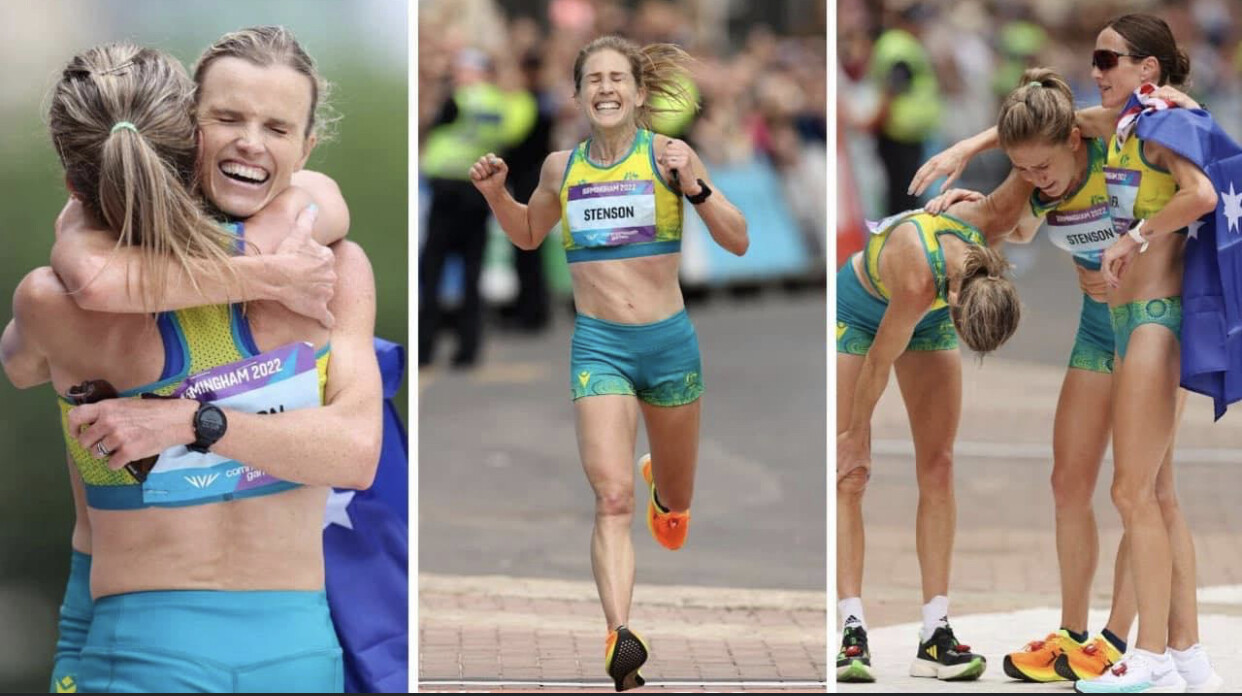
Stenson’s triumph, seized with great dare through the heart of Birmingham, is another defining moment in Australia’s proud marathon history.
After shaking Namibia’s defending champion Helalia Johannes and then Kenyan Margaret Muriuku with about 5km to run, Stenson strode purposefully uphill to Victoria Square.
Inspiring her was the memory of her idol Kerryn McCann, the 2006 Melbourne gold medallist who tragically died from cancer two years after her heroic final flourish at the MCG.

“I thought about Kerryn’s closing kilometres in that battle against the Kenyan woman as she entered the MCG,” she said. “All of that history really turns into strength that we can use to try and continue that history. I so badly wanted to do Australia and my support team proud today.”
Running 2:27.31 to win by 29 seconds, Stenson is the first woman to claim a medal in three Commonwealth Games marathons after bronze efforts in Glasgow and on the Gold Coast.
Within sight of the finish, Stenson had enough time to say “thank you” to supporters who had earlier cheered de Rozario to victory in the women’s T53/54 wheelchair marathon.
Stenson, who became the sixth Australian woman to win the marathon in the past 10 editions, was greeted at the finish line by her two-year-old son Billy.
“Your perspective shifts. I am doing this because I can. It is a privilege,” she said. “I feel fulfilled anyway and everything here is just a bonus. It sort of takes the pressure off. It is a bonus.”
Her triumph is one of resilience. She has bounced back from the near misses and is better than ever. Not even a recent bout of Covid-19 could deny her a career-defining moment.
Stenson said the enforced rest may have benefited her, for she felt strong throughout a marathon in which compatriots Eloise Wellings and Sinead Diver finished fourth and fifth.
(07/30/2022) ⚡AMPThe Commonwealth Games
The Commonwealth Games are coming to Victoria - bringing an action packed sports program to our regional cities and delivering a long-term legacy for our future. From 17 to 29 March 2026, Geelong, Bendigo, Ballarat, Gippsland and Shepparton will be on the world stage, attracting millions of viewers and creating thousands of jobs. The multi-city model will...
more...Saskatchewan’s Carol Lafayette-Boyd continues to shatter world records at 80
For Carol Lafayette-Boyd of Regina, age is clearly just a number. Earlier this month, she broke the women’s 200m world record for 80+ in a blazing time of 34.90 seconds. It was her 13th world record to date.
As a nurse at the Saskatchewan Hospital in Weyburn, Lafayette-Boyd had always lived an active lifestyle. But she didn’t win her first competitive track event until age 50. With 13 world records (seven outdoor, six indoor), you’d think she’d be smug. But being a legend of the sport isn’t what motivates her.
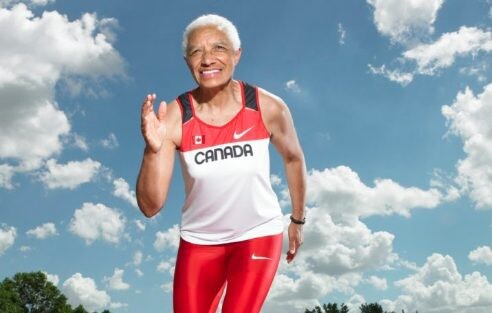
“I enjoy meeting new people and seeing the same athletes who keep coming out,” LaFayette-Boyd said in an interview with Global News. “Everyone in this sport is friendly and respectful to one another.”
In 2018, Lafayette-Boyd was named Athlete of the Year by World Masters Athletics (WMA).
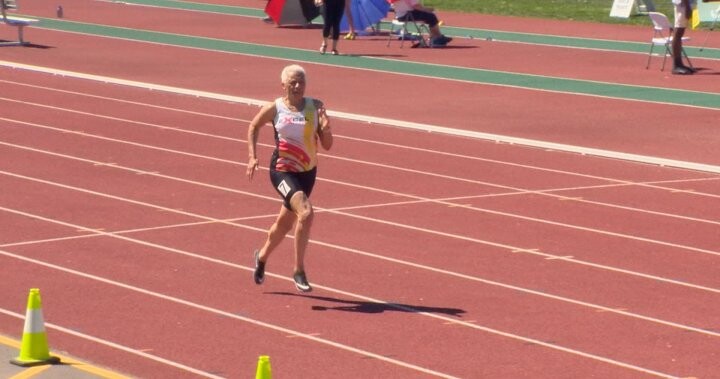
Here is Lafayette-Boyd’s impressive masters track and field resume (outdoors only):
75+ 100m world record: 15.03 seconds
75+ 200m world record: 31.56 seconds
80+ 200m world record: 34.90 seconds
75+ high jump world record: 1.24m
70 and 75+ long jump world records: 4.26m and 4.09m
75+ triple jump world record: 8.19m
The great-grandmother has no plans of slowing down or hanging up her spikes. This weekend in Regina, she will compete at the Canadian Masters Athletics Championships, where she will attempt to break the 80+ 100m world record held by American Kathy Bergen.
LaFayette-Boyd is inspired by U.S. masters sprinter Julia “Hurricane” Hawkins and Rambai, a 105-year-old woman from India who made history last month, breaking the women’s 105+ 100m world record in 45.40 seconds. “These women have pushed the boundaries of the sport, and I want to follow in their footsteps,” she said.
(07/30/2022) ⚡AMPby Marley Dickinson
Victor Kiplangat is the first Uganda man to win the Commonwealth Games marathon gold medal
Victor Kiplangat became the first man from Uganda to win the Commonwealth Games marathon on Saturday morning (30) after he dominated the race to win the title in a time of 2:10:55 with incredible reception at Birmingham 2022.
The 22-year-old went the wrong way late in the race, but his lead was so big, that his victory wasn’t compromised as he was able to follow the directions of a very attentive official and get back on the course.
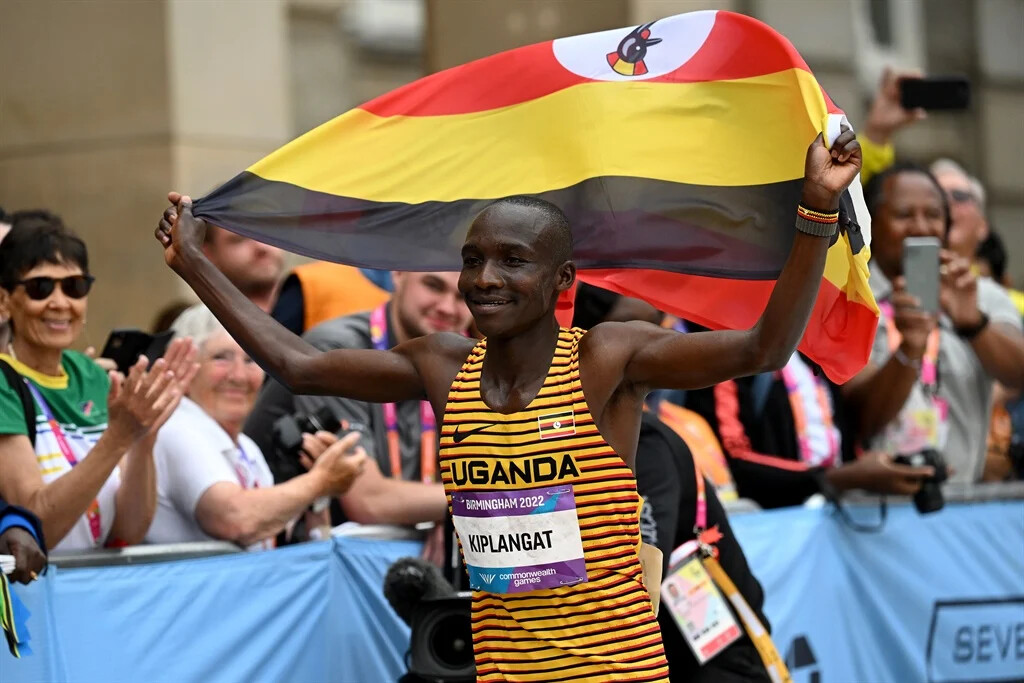
Alphonce Felix Simbu of Tanzania finished second with a time of 2:12:29 with the bronze medal going to Michael Mugo Githae of Kenya who ran 2:13:16.
Meanwhile, Liam Adams of Australia, who led the race for most of the early going ran well, in the end, to collect fourth at 2:13:23 and Jonathan Kipleting Korir of Kenya rounded out the top five with a time of 2:14:06.
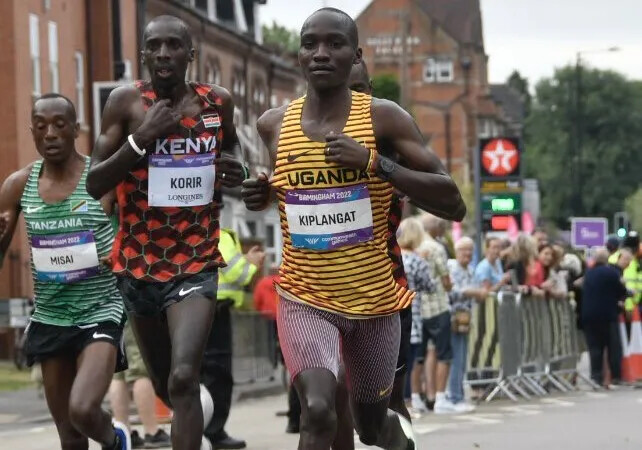
Englishman Jonathan Mellor crossed the finish line in sixth place at 2:15:31.
On a nice and overcast morning, Simbu ran smooth and composed in the early part of the race as he tracked Adams, who went through the first 20km at 1:01:08 and 1:04:34 for the half-marathon.
However, they were not alone as four other runners followed him closely, much to the delight of the group of fans who came out on the streets to watch the race, take pictures, and also cheer on the athletes as they navigate the race course.
The group of six was split into a group of three at about 26km when Simbu, Kiplangat and Githae broke away for about 2km before the pace slowed back down and the pack became six again.
Kiplangat then injected another surge in the middle of the contest to break up the pack significantly, but he was stalked all the way Simbu, who did all he could to stay with the pace.
After 30km, Kiplangat led with a split of 1:32:45 with Simbu right there with him at 1:32:46.
However, just when you thought it was going to be a two men’s close encounter, Kiplangat injected another big and decisive surge in the race pace to open up a gap between himself and Simbu to take complete control of the contest as he moved past the 35km at 1:47:09 with a lead of 0.18 seconds over his Tanzanian rival.
The race was never close afterward as the Ugandan runner went on to dominate –building a lead of well over two minutes after 40km.
(07/30/2022) ⚡AMPby Symone Goss
The Commonwealth Games
The Commonwealth Games are coming to Victoria - bringing an action packed sports program to our regional cities and delivering a long-term legacy for our future. From 17 to 29 March 2026, Geelong, Bendigo, Ballarat, Gippsland and Shepparton will be on the world stage, attracting millions of viewers and creating thousands of jobs. The multi-city model will...
more...Want to Race at the Most Magical Place on Earth? Read This First
Want to run at the most magical place on earth? runDisney makes that happen multiple times a year.
Combine marathon magic with the Magic Kingdom and what do you get? runDisney, the road-running arm of Walt Disney World Resort. Runners from all over the world flock to the theme park in Orlando, Florida—often dressed as their favorite fictional character—to participate in one of the dozen-plus races held every year.

“A runDisney race is anything but ordinary,” says the organization’s website. “Become part of adventures that could take you under the sea, through classic enchantment and into a springtime of surprises.”
runDisney has grown significantly since the first Walt Disney World Marathon in January 1994. Over 5,000 runners competed in that inaugural race, less than half of the 11,335 runners that completed the 2022 marathon. Over the last three decades, runDisney added more races, such as 5Ks and 10Ks, to be more inclusive for runners of all ages and abilities. For ambitious runners, Disney added challenges that encourage participation in multiple events across race weekends.
Whether you’re running an upcoming runDisney race or thinking about signing up for one, Runner’s World has you covered with everything you need to know about the enchanting race series.
Upcoming runDisney races
Wine & Dine Half Marathon Weekend
Disney Wine & Fine 5K — November 4, 2022
Disney Wine & Dine 10K — November 5, 2022
Disney Wine & Dine Half Marathon — November 6, 2022
Walt Disney World Marathon Weekend
Walt Disney World 5K — January 5, 2023
Walt Disney World 10K — January 6, 2023
Walt Disney World Half Marathon — January 7, 2023
Walt Disney World Marathon — January 8, 2023
Disney Princess Half Marathon Weekend
Disney Princess 5K — February 23, 2023
Disney Princess Enchanted 10K — February 24, 2023
Disney Princess Half Marathon — February 25, 2023
Disney Fairy Tale Challenge — February 26, 2023
runDisney Springtime Surprise Weekend
Expedition Everest 5K — April 14, 2023
Race for the Taste 10K — April 15, 2023
The Twilight Zone Tower of Terror 10-Miler — April 16, 2023
runDisney registration and costs
The runDisney events are exceptionally popular—as of this article’s publication date, every runDisney race until April 2023 is sold out—so those looking to sign up should do so as soon as possible.
While runDisney registration periods vary year to year, the organization usually advertises sign up dates six to eight months before race day. For the next available race weekend—the Springtime Surprise from April 13 to 16, 2023—early registration opens August 16 this year, and general registration opens August 23. Early registration is only available for Club runDisney Gold and Platinum members, who pay a yearly membership fee for added perks (more on that below).
To register, you first sign up for a Disney account. If you already have one, simply sign in with your existing credentials. Prices vary depending on the race, but, for example, the 2023 Walt Disney World Marathon and Half Marathon cost $218.53 and $213.20, respectively. The shorter races that same weekend cost less, coming in at $103.40 for 5K and $146.04 for 10K. Other runDisney events stick to similar price ranges, depending on race distance.
You don’t need to purchase a ticket to Disney theme parks to participate, but you’re race registration does not include entrance to the parks post-race. If you want to do both, you’ll have to purchase both.
You also need to sign a liability waiver, which runDisney sends out digitally a few weeks before race day. You can either sign in online, or wait until you arrive at Walt Disney World and attend the race expo.
Lodging and transportation
Disney currently has more than 25 resort hotels available to visitors and runDisney participants. Disney offers complimentary transportation from any of their resort hotels to the race start. If you drive yourself from an off-site hotel, there’s plenty of parking near the race start, 2022 Walt Disney World Marathon participant David Gramlich told Runner’s World.
Bib pickup and expo
To pick up race bibs—alongside race shirts and any pre-purchased merchandise—runDisney participants must go to the race expo, held at the ESPN Wide World of Sports Complex. If you already signed the digital liability waiver, you only need to show a valid form of ID to pick up your bib. Expo hours vary depending on the weekend, but it generally opens the morning before the first race of the weekend and closes the day before the final race.
Race day logistics
Gramlich says that Disney pays close attention to details, and it shows on race day: “Everything was very well marked, with lots of signage and greeters making sure you’re in the right spot.” If he had any questions, the staff members were knowledgable and helpful. Bag check was a few hundred meters from the start line and was run efficiently. As you near the start line, officials corral you based on your entrance time.
The races start early to beat the Florida heat and ensure a smooth opening of the parks afterwards. But even though it’s dark at the start, Gramlich said energy was high: “They had music playing at the check-in area, lots of lights, and everybody’s super excited.”
runDisney race courses
There are plenty of water and food stops along all courses—each well-marked—and numerous first aid stations in case of emergencies. Each mile marker has a clock so you can keep track of your pace.
Regardless of distance, each course explores at least one of Disney World’s four theme parks. The marathon touches all four.
Spectating is limited to just a few areas because much of the races are run on Disney World’s access roads. But when runners do reach a spectator zone, it’s exciting. Gramlich’s family was cheering for him at Magic Kingdom at mile 10: “That was a surreal experience because you’re on a lot of Disney access roads and you’re winding through parks—and there’s not many spectators, so it’s pretty quiet. But then when you get to [spectator zones], it’s a real shot of energy.”
The courses are pretty flat too. Besides a couple exit ramps, Gramlich said it’s “nothing near the variables you might see at other races in other parts of the country.”
runDisney challenges
Those looking to enjoy every second of racing at Disney World can take part in one of the weekend-long challenges that encompass multiple races. Here are the upcoming challenges:
Goofy’s Race and a Half Challenge
Half and full marathon during Walt Disney Marathon Weekend
Dopey Challenge
5K, 10K, half marathon, and full marathon during Walt Disney Marathon Weekend
Disney Two Course Challenge
10K and half marathon during Wine & Dine Half Marathon weekend
Half and full marathon during Walt Disney Marathon Weekend
5K, 10K, half marathon, and full marathon during Walt Disney Marathon Weekend
10K and half marathon during Wine & Dine Half Marathon weekend
runDisney Medals and Awards
Each runDisney race has its own special medal, usually featuring a Disney character. For example, for the upcoming Wine & Dine Half Marathon weekend, the half marathon finisher’s medals features Joe, the jazz pianist from Soul.
The top three overall in each division receive additional awards. Gramlich finished second overall, so he received a trophy as well as a set of Bluetooth headphones.
Gramlich greatly enjoyed the entire experience, and not just because he ran well as an elite in the race: “I definitely would do it again. You have to embrace the Disney experience... If you’re a hardcore Boston Marathon runner that’s used to that experience... you’ve just got to understand that it’s kind of like a vacation.”
(07/30/2022) ⚡AMPby Runner’s World
What a High Resting Heart Rate Could Be Telling You About Your Training
The meaning behind this heart-related metric, plus three strategies for getting back to your baseline.
Whether you’re a fan of heart-rate training or only dabbled in hitting your zones, you’ve likely noticed your heart rate numbers on a watch or fitness tracker midrun. But have you ever tapped on the little heart icon or noticed your beats per minute when your body was at rest? For runners, resting heart rate can be just as meaningful to your training and overall health.
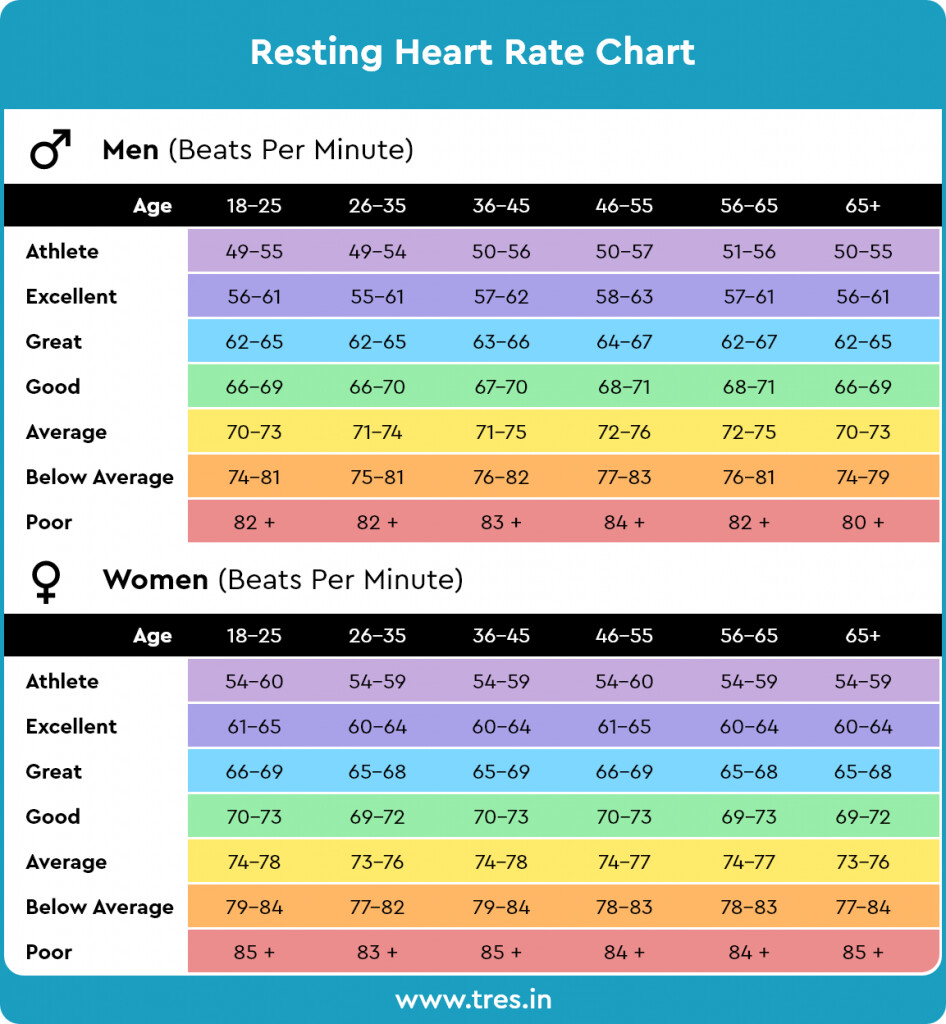
What is a resting heart rate?
As the term suggests, resting heart rate (RHR) refers to the number of times your heart beats per minute when the body is at rest. You can get a fairly accurate measure using a wearable fitness tracker (chest straps, while less comfortable, tend to deliver more precise results than wrist-worn heart rate trackers) or by using your fingers to count your radial pulse.
“You want to take [a resting heart rate reading] first thing in the morning after a restful night’s sleep, lying on your back, free of any distractions,” Fabio Comana, M.A., M.S., faculty within the School of Exercise and Nutritional Sciences at San Diego State University, tells Runner’s World. If you use a watch, he suggests wearing it on the inside of your wrist so that it can better mold to the skin and soft tissue. Just be careful not to move your arm (or any other part of your body) while taking a reading.
According to the American Heart Association, the range for average resting heart rate is between 60 and 100 beats per minute (bpm). Your own rate can be impacted by several variables, including biological sex, stress, medications, medical issues, hormones, age, and level of regular physical activity. Generally speaking, a lower resting heart rate is better.
“RHR is considered an indicator of overall cardiovascular fitness or how efficiently you are able to meet your body’s oxygen demands,” says Pamela Geisel, M.S., C.S.C.S., exercise physiologist and the director of performance and wellness services at the Hospital for Special Surgery in New York City. “A lower RHR has been correlated with a lower risk of cardiovascular disease and other illnesses.”
A higher resting heart rate can be a sign of a myriad of health problems. For example, a 2017 meta-analysis of 87 relevant studies found “an increased risk of coronary heart disease, sudden cardiac death, heart failure, atrial fibrillation, stroke, cardiovascular disease, total cancer, and all-cause mortality with greater resting heart rate.”
How does physical fitness play into resting heart rate?
The reason why runners and other athletes typically have lower resting heart rates than their sedentary peers is a matter of adaptation. As you increase your physical activity, “the body says, ‘How can I deliver oxygen to my blood cells more efficiently?’” Comana explains.
The answer: more red blood cells and, therefore, an increased blood volume. To accommodate that higher blood volume, the heart becomes stronger and able to pump out more blood with every contraction. “If you’re able to eject more blood out of the heart with every beat, your heart doesn’t have to beat as many times. So, that’s the reason why your resting heart rate comes down,” Comana says.
Lessen your training or stop working out, and your resting heart rate will eventually creep back up. “You no longer have that demand for as many red blood cells,” Comana explains. So, as red blood cells die (they have a lifespan of about four months), the body manufactures fewer new ones, blood volume decreases, and the heart and its stroke volume (the amount of blood it pumps out with each contraction) shrink. “It’s like a muscle: If you don’t use it, you lose it,” Comana says.
What does a high resting heart rate mean?
So, what if you’re sticking to your regular training schedule and notice that your resting heart rate is elevated? A single, higher-than-normal reading generally is not cause for concern; dehydration, stimulants, or even a bad night’s sleep could cause a temporary spike. But if you see your resting heart ratte climbing by eight to 10 beats over the course of seven to 10 days, Comana recommends examining both your workouts and your life in general. You could be overtraining and not allowing your body adequate rest and recovery between workouts.
On the other hand, your high resting heart rate may have nothing to do with exercise. “A lot of the time, what we consider to be overtraining may not be your program,” he says. “It may be the life stresses that are just dog piles on top of you, because stress is just an accumulation of any disruption of homeostasis.”
How can you lower a high resting heart rate?
To your body, stress is stress; it doesn’t matter if it’s coming from a looming work deadline or back-to-back HIIT workouts. Problems at work, in your relationship, and relating to your finances obviously can’t be avoided—you need to tend to those issues, which is inherently stressful. “But what you can do is control your workouts,” Comana says. “You might need to off-load, de-load, or redirect.”
Off-loading, or stopping exercise altogether, is the most drastic intervention, but it can be incredibly effective. Ever notice how that first run after a few days off can feel like one of your best ever? “You might have been pushing the envelope where you were bordering on overtraining, and we just gave you some time off to allow your body a little bit more time to recuperate, to restore homeostasis. And then you came back feeling refreshed,” Comana says. “Stress is not ordinarily bad, but we need time to recover from it.”
De-loading is the process of temporarily reducing the volume and intensity of training. Comana recommends cutting down to 50% to 70% of what you usually do for your workouts. That means if you run six days a week, you may want to incorporate a couple of extra rest days and, on the days you do train, run at an easier or more moderate pace.
Comana’s third strategy, redirecting, is simply switching up your routine with a new activity, preferably something that feels fun or playful. “Let's take a break from pounding the treadmill and go do something else. Let’s go hike a hill. Let's go swim in the pool,” Comana says. “Go play so it seems like it’s something fun rather than it’s something that you have to do—something that’s part of your training. That’s the idea behind it.”
If, after adjusting your workouts and lowering your stress levels, you’re still experiencing a high resting heart rate, it’s a good idea to check in with your medical provider. “An elevated heart rate response could be indicative of something bigger, something more problematic,” Comana says. If you implement strategies to lower a high resting heart rate and it’s not coming down, that could be a red flag that should be more thoroughly investigated, he adds. While a high resting heart rate could be tied to several conditions, it would be just one factor at play, so your doctor will do a full exam before making a diagnosis.
(07/30/2022) ⚡AMPby Runner’s World
Why Elite Athletes Are Getting Serious About Mental Coaching
When his athletes describe the ways that stress has impacted their performance, clinical psychologist Justin Ross likes to tell them: "Welcome to having a mind." Ross specializes in mental performance coaching, a growing discipline aimed at helping athletes strengthen their competitive minds just like their bodies. "This stuff is pervasive," Ross says, from the amateur level all the way up to the elite echelons of sport. "The majority of things we may be struggling with are deeply human."
Athletes and coaches have long known that a sharp mental game can be the deciding factor in competition, and mental techniques like visualization and self-talk are often part of their preparation. But in recent years, there's been an uptick in awareness of formal mental skills training designed to develop and hone those techniques, as well as in the number of experts entering the field. In 2018, the Association for Applied Sport Psychology (AASP) certified 29 new mental coaches; in 2021, the number was 100. This has also coincided with a growing chorus of high-profile athletes, including Mikaela Shiffrin, Simone Biles, Chloe Kim, Naomi Osaka, and Nathan Chen, starting frank, public conversations about their mental health and the pressure to perform.

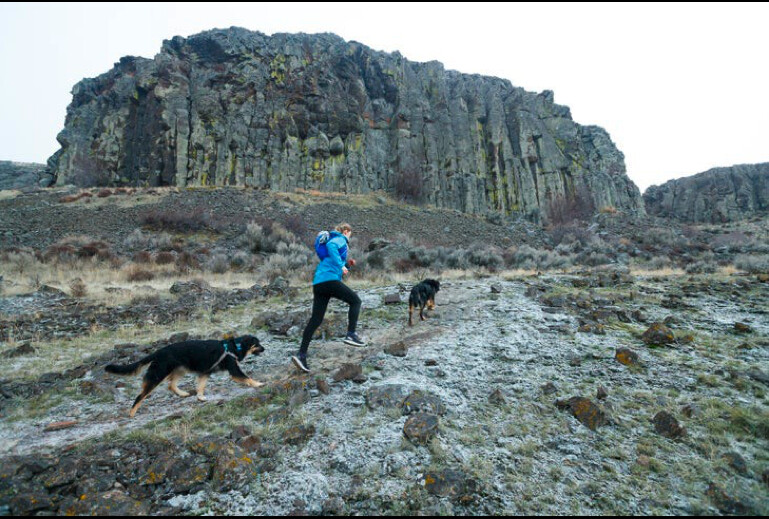
A few decades ago, the discussion around mental health and performance "didn't occupy the same space in sport that it does now," says Ben Rosario, the executive director and former head coach of Hoka Northern Arizona Elite (NAZ Elite), a Flagstaff-based professional running team.
That's beginning to change. In 2017, NAZ Elite began working with a mental performance consultant named Shannon Thompson. These days, most of the team meets weekly with Thompson for 30-minute group "focus sessions," which Rosario compared to short lectures, each with a lesson plan. One week, Thompson might discuss goal-setting; the next, how to handle the crux of a race. Often, the sessions end with a brief guided meditation. "There's a huge push in sports around mindfulness-based strategies," the performance psychologist and researcher Kevin Alschuler told me.
Still, unlike clinical therapeutic practice, which has certain legal restrictions around who can call themselves a psychologist, mental performance consulting is largely unregulated. Anyone can use the term mental coach. "I think the coaching world in general is sort of the Wild, Wild West," says Jon Metzler, who chairs the AASP's Certified Mental Performance Consultant council. The CMPC designation designation is intended as a bulwark against that: it requires applicants to have completed graduate-level coursework in subjects including sport psychology, ethics, and statistics and hours of practical experience under an approved mentor. A version of this certification was first established in 1992, and in 2020 it was accredited by the National Commission for Certifying Agencies, an organization that sets professional standards for certificates in many areas, including sports and healthcare. There are 644 CMPCs practicing today, although the number of mental coaches likely eclipses that. There's no official tally; in some ways, it remains a nebulous discipline.
In the summer of 2018, runner Danielle Shanahan turned pro and joined NAZ Elite. (She has since moved to the Mckirdy Trained High Performance team, with her fiance, Jack Polerecky, as her coach.) But she struggled to adjust to the training load and the altitude, and having come from a small college without the most pedigreed track program, she had a hard time convincing herself she was good enough.
"You can train as hard as you want, but if you get to the line and don't believe you belong there, it makes it really hard to perform," she says. In 2020, she started working one-on-one with Thompson. They developed a plan-including listing words, like "gritty" and "scrappy," that identified the athlete and person Shanahan wanted to be, and coming up with mantras-and it started to work. During one arduous workout that October, which was faster and longer than anything she'd done before, she felt the hurt set in. She began talking directly to her pain in her head: "Hi, pain, I'm acknowledging that you're here, and I'm going to harness this," she remembers telling herself. "I'm the one steering this ship."
That winter, she ran stronger than she ever thought possible. In one 10,000-meter race, she shaved a full minute off her personal best-even though she fell about halfway through. "It was probably the most badass thing that I've ever done in my life," she says. "I went into that race with an odd sense of calm."
The consultants I spoke with emphasize that mental coaching looks different for each person, but they typically start with an assessment of an athlete's goals and what's already working, or not, in their mindset. This allows them to come up with a plan tailored to the individual and their objectives. Mental coach and psychologist Jim Taylor, who works with a number of pro skiers, typically prepares notes and exercises for his clients to practice each week; sometimes, he joins them out in the field or even travels with them as part of their coaching staff.
In addition to visualization and self-talk, mental coaches often help athletes work on activation control, which is the ability to become calm or energized on command. Climber Kyra Condie started working with a mental performance expert in the lead-up to the Olympic qualifying events in late 2019. She found that listening to opera (Mozart's "The Magic Flute"; Prokofiev's "The Love for Three Oranges") could help her relax before bouldering and lead-climbing competitions. Other common mental coaching practices include simulation training, or replicating the mental and physical pressure of a competitive environment in practice, and handling social media. (Taylor advises his athletes to simply turn off their notifications before and during competitions, which may be easier said than done.)
And as with physical training, an athlete's mental training plan requires constant refining. Inevitably, there are setbacks. In early 2021, buoyed by her performance in the fall, Shanahan was still running with attack and determination. But she found there was a catch to her "I am going to crush everything and I am not going to fail at anything" attitude, she says. It didn't leave much room to cope with anything less than narrowly defined success. And it caught up with her when an injury that spring forced her to withdraw from the Olympic Trials. Shanahan didn't race for eight months-she returned in November for the USATF 5K championship in New York. The night before, she wrote in a journal entry: "I know in my gut that I can make the right decisions and put myself in the right positions to succeed to the best of my ability. After I can do that, the result will be what it will be."
The boundary between the therapeutic and performance applications of sport psychology is a blurry one; mental health and mental performance are often conflated, says veteran mental skills coach Colleen Hacker, who has served as a consultant to athletes at six Olympics. "Mental coaching is really about helping athletes perform better. Sport psychology is much more wide-ranging-in terms of personal development, mental health, and mental illness," Taylor says. "It's really one part of a bigger picture of the role that the mind plays in sport."
And for some, that boundary can feel especially porous. The mental performance consultant and ultrarunner Addie Bracy says that outdoor and endurance athletes often have a hard time separating their sense of self-worth from their performance in competition, in part because sports like skiing, climbing, or running have a strong lifestyle component.
At the Tokyo Olympics last summer, the United States delegation included four separate mental health experts for the first time-a psychologist, two psychiatrists, and a licensed counselor-which Bracy says reflects a new commitment to both mental health and mental performance. Some coaches, like the one Kyra Condie worked with, have a clinical background, but often they simply have enough education in psychology to know when they're out of their depth. That way, they can refer their athletes to the right kind of expert. (Peak mental performance and mental illness occupy different points on the same spectrum of mental health. Welcome to having a mind.)
In 2018, the downhill skier Breezy Johnson suffered a knee injury that ended her season. As she worked towards recovering physically, she started experiencing anxiety and depression, occasionally lashing out at her trainer and physical therapist. They recommended she start working with a sport psychologist-one with a background in mental performance coaching.
She approached her first appointment with skepticism. "I literally walked in and said, 'I don't need someone to mansplain to me how to visualize,'" she says. But as she returned to racing, she continued working with him as a mental coach. She found that her thoughts occasionally became preoccupied by the thought of crashing. "When you're doing a dangerous sport it's like, 'But also what if we die?'" she says.
She focused on acknowledging and setting aside that fear-a technique drawn from mindfulness. "When you fight those thoughts, you spend a lot of time doing this tug of war," Johnson says. "Instead, you can be like, 'OK, yes, you're not wrong, we all might die, we might crash, but the best way to move on is to return to the task at hand.'"
In December 2020, she raced to her first podium finish, placing third at Val d'Isere. She began the 2021/2022 season in Lake Louise with her first second-place finish. During that season, "I had several moments where I was like, this is it," she says. Mentally, she was in a good place, and she was skiing really, really fast. (Shortly before the Winter Olympics in Beijing, Johnson injured her knee during a training run and pulled out of the competition. She's planning to return to the snow in September and hopes to race this season. "It's been a long road," she wrote in an email in July. "I can't say that work with a sports psychologist or anything I have tried ever fixes that pain entirely," she continued, "but I know how to keep going to reach my end goal, both mentally and physically.")
Taylor says that athletes often seek mental coaching because of some specific performance block, but he wants to see more athletes proactively add it to their training routines. He compared mental skills training to physical preparation: "You wouldn't wait to get injured before you start getting conditioning," he says. "You wouldn't wait to have a technical flaw before you get a coach."
Several mental coaches cite the whiff of stigma that's still attached to discussions of mental health and, by association, mental skills training in sports. But the window of acceptable discourse is widening, in part because teens and twenty-somethings, including more athletes, are talking more plainly about mental health. "A few years ago, it almost felt shameful in certain respects for people to reach out," Ross says. "I think the conversation is really shifting-that mind and body need to be in alignment in order to perform well."
(07/30/2022) ⚡AMPby Trail Runner Magazine
5 Body Parts You Shouldn't Use A Massage Gun On
Percussion massage guns can have great benefits, from decreasing muscle tension, increasing mobility and elevating blood flow to helping with pain and typical workout soreness. And by now, the chances are you either own one of these tools, have used one or know someone who sings its praises. Nowadays, you may also encounter them when you see a massage therapist, chiropractor or physical therapist.
Just like a typical massage or a foam roller, percussion massage tools work by loosening muscles and fascia, the coating around muscle tissue. But as with any tool, it has a time, a purpose and a place.

It may be tempting to use your massage gun on any old spot that feels sore with no further thought, but some spots present risks. Painful inflammation, torn tendons, organ or nerve damage and even serious long-term injuries could result from improper placement.
Here, we look at the top 5 spots to avoid to improve your massage gun safety.1. Greater trochanter
Stand on two feet. Put your hands in your pockets. Shift your weight side to side, allowing your pelvis to shift. As you stick your hips out to one side, you will feel a bony area on that side of your hip push into your hand. This is a part of your thigh bone called a greater trochanter.
It has a fluid sac surrounding it called a bursa, and bursas and bones don't like friction. They respond by becoming inflamed and painful, and using the massage gun on this area can create friction that leads to pain and inflammation on the side of your hip.
Instead of aiming for the greater trochanter, use the massage gun on your quads and glutes. Loosening up those areas can help with hip, knee and even lower back mobility. If the side of your hip is already sore, ice might be a better tool.
2. Kidneys
Have you heard of organ damage done by a massage gun? Kidneys, for example, are particularly susceptible because they are close to the surface in the middle of your back. While you think you are getting a good back massage, digging into the areas directly over the kidneys could lead to vibrating organs that weren't meant for such force.
So, where exactly are your kidneys? Take both hands and reach around to your back, as if you were about to clasp a bra strap. On either sides of your spine, you will feel rib bones. Try to find your lowest rib bones. Bones feel harder than muscle, and the lowest ones are often a bit tender. The lowest ones line up with your kidneys. Now, imagine that you placed a grapefruit on top of each of these lowest ribs. This is the area you need to steer clear of with your massage gun.
Massage guns can be great for relieving back tension, as long as they are on muscles versus organs and bones.
3. Biceps tendon
Take one hand and reach across to the front of your opposite shoulder. Your long head of biceps tendon lives under the area you are now touching. Pain and tension in this area are very common, especially if you have weakness in your rotator cuff, or weakness in the muscles between your shoulder blades. While it is tempting to relieve pain and tension by putting the massage gun here, think again! This tendon is not as tough as it seems; pressure and vibration can inflame or even tear it.
Instead of attempting to treat pain on the front of your shoulder, go for the common underlying problem! Often the first steps are working on rotator cuff strength, middle back strength and being mindful of your lifting techniques.4. First rib
Reach one hand to the top of the opposite shoulder-the area where the base of the neck and shoulder meet. Many of us know this area as "upper traps," and often a spot plagued by chronic neck and shoulder tension. If you lightly dig in a bit, you will feel a knot that doesn't go away-no matter how much you massage it. The reason it doesn't go away is because it is not a muscle knot; it's a bone. That bone is your first rib. While it's tempting to drive the massage gun into this area to decrease nagging neck tension, don't do it!
Directly under your first rib, you have all the nerves and blood vessels that supply your arms and hands. A little too much pressure in this area can compress the nerves and blood vessels. Nerve compression can send tingles or even pain down your arm, and that kind of nerve injury can take months (if not years) to resolve. While the massage gun is buzzing away, it's easy to miss the fact that your arm might feel an unusual tingle that could be your warning of nerve compression.
If you still want to massage your neck tension away, use your hands instead of a tool; using your hands allows you to feel if you are on that bony first rib, and allows you to quickly detect (and move away from) any spots that send a tingle down your arm.
5. Spine
You most likely have a good idea of exactly where your spine is already, but you can reach around your back and pinpoint where those bones are to make sure you don't aggravate them with percussion massage. Your spinal cord, discs, and nerve roots are all under those bony edges that you feel, and none of them were designed to handle direct vibration forces. Agitating these bones with a massage gun presents a greater risk than benefit because irritating a nerve root, disc or even the spinal cord itself could lead to very serious and complicated spine injuries.
What's a safer alternative? Generally, foam rolling (even if the foam roller vibrates). The foam roller is a much broader surface, so it doesn't dig directly into targeted spots in your spine. The foam roller isn't for everyone though - If you've ever been told you had low bone density, be sure to check with your doctor before trying this alternative.
Keep the massage gun, but use your new anatomy knowledge to choose placement safety. Even with safer placement, be sure to avoid pressing hard into spots while the massage gun is vibrating. Gentle pressure is generally fine, but digging in could press on other organs, nerves, or bones that can lead to injuries, too.
(07/30/2022) ⚡AMPby Trail Runner Magazine
Rising inflation has prompted a warning that the budget for the Paris 2024 Olympics and Paralympics is "very tight"
With tomorrow marking two years until the Olympics are due to begin in the French capital, concerns are mounting on preparations from a security and financial point of view.
AFP has reported that the Organising Committee's estimated budget for the Games has risen to €4 billion (£3.4 billion/$4.1 billion), with a source commenting: "Everything is very tight concerning the budget."

According to the unnamed source, the extent of the difficulties are expected to become clearer later this year.
Solideo, the public body charged with overseeing infrastructural projects for Paris 2024, also has a reported budget of €4 billion (£3.4 billion/$4.1 billion).

Inflation in France reached its highest level since 1991 last month, although remains lower than many other European countries.
Consumer prices rose by 5.8 per cent in the 12 months until June.
Tickets for the Games go on sale in December, and one premium partnership slot remains vacant, although it has been reported that there are hopes it could be filled by luxury goods company LVMH.
At the International Olympic Committee Session in Lausanne in May, Paris 2024 President Tony Estanguet conceded that the COVID-19 pandemic and war in Ukraine "caused major breakdowns in production and supply chains", and "generated an inflationary environment which was impossible to anticipate just a few months or weeks ago".
Budgetary issues are expected to be one of the topics examined when French President Emmanuel Macron meets other key Ministers at the Élysée Palace to discuss Paris 2024 today.
A French Presidential official told AFP that the meeting offers an opportunity "to take note of where there are weaknesses".
Concerns over security have escalated since Paris 2024 venue, the Stade de France, held the UEFA Champions League Final in May.
The match was marred by chaotic scenes which led to a delayed kick-off, led to widespread criticism of the French authorities and police, and prompted a warning in a French Senate report earlier this month that the Government and relevant bodies would be required to "draw the necessary lessons".
There are plans for around 600,000 people to watch the Opening Ceremony along the River Seine, but a police source cited in a AFP report warned that it would not be possible to secure the "nearly 7,000 officers" required, with a shortfall in the 24,000 required private security guards another stumbling block.
The Olympics in the French capital are due to run from July 26 until August 11 2024, followed by the Paralympics from August 28 until September 8.
(07/29/2022) ⚡AMPby Patrick Burke
Paris 2024 Olympic Games
For this historic event, the City of Light is thinking big! Visitors will be able to watch events at top sporting venues in Paris and the Paris region, as well as at emblematic monuments in the capital visited by several millions of tourists each year. The promise of exceptional moments to experience in an exceptional setting! A great way to...
more...Japanese triathlete Tsudoi Miyazaki dies in France while training for Paris 2024 Olympics
Japanese triathlete Tsudoi Miyazaki has died after being hit by a vehicle during a training camp near Orléans in France, where she was preparing for the Paris 2024 Olympic Games.
Miyazaki was riding a bike as part of an individual camp when the incident occurred on Wednesday (July 27).
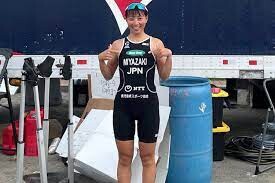
The 25-year-old had been competing at the Pontevedra World Cup event last week in Spain, where she finished 50th.
In a statement, World Triathlon and the Japan Triathlon Union (JTU) offered "our deepest condolences" to Miyazaki's family and friends.
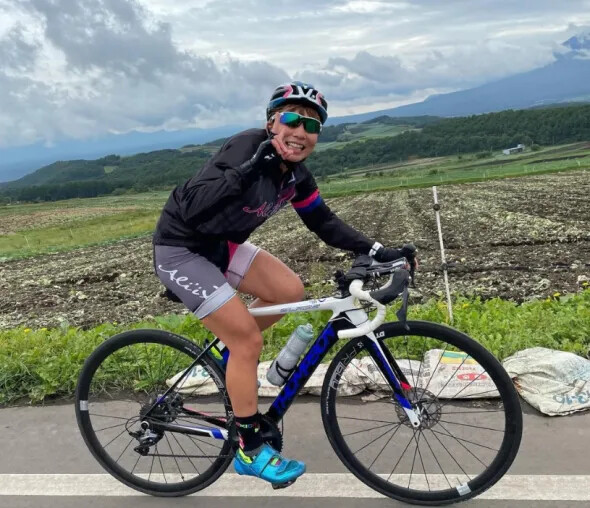
"JTU has immediately dispatched staff members to France to join the training base staff to take care of the situation," it was added.
An investigation into the circumstances Miyazaki's death has been opened by France's National Gendarmerie.
Miyazaki won a gold medal at the Japan Under-23 Triathlon Championships in 2019 and was regarded as an athlete with Olympic potential, as shown by her training for Paris 2024.
Miyazaki's best result on the World Cup circuit was 30th in the women's event at the 2021 World Cup in Huatulco.
(07/29/2022) ⚡AMPby Michael Houston
Paris 2024 Olympic Games
For this historic event, the City of Light is thinking big! Visitors will be able to watch events at top sporting venues in Paris and the Paris region, as well as at emblematic monuments in the capital visited by several millions of tourists each year. The promise of exceptional moments to experience in an exceptional setting! A great way to...
more...

